

The 5 Best Sony Lenses for Travel Photography
Table of Contents
The viewfinder fills with the awe-inspiring sight of Machu Picchu emerging from the clouds below. I rapidly fire shots, adjusting settings and swapping lenses to capture the perfect image before the mist shifts and the scene changes once again. Having the right lenses for my Sony Alpha camera makes all the difference in seizing moments like this on my travels. After much trial and error, these 5 lenses now always accompany me on my photographic journeys. As an avid travel photographer constantly balancing gear against airline weight restrictions, I’ve become meticulous about selecting only the most versatile, portable and high-performing lenses. Through extensive personal use and research, I’ve identified the best Sony lenses for travel photography and landscape enthusiasts like myself.

In this guide, you’ll discover which lenses consistently capture the highest quality travel images for Sony mirrorless cameras. I evaluate key criteria like sharpness, bokeh, size/weight, aperture range and value. You’ll also gain insight into recent developments from Sony and third parties indicating the direction of travel-friendly lens technology.
Quick overview of the Sony lenses in this article
Sony 16-35mm f/2.8 gm : the landscape photographer’s dream.

Landscape photographers overwhelmingly praise the Sony 16-35mm f/2.8 GM as the number one e-mount lens for dynamic wide scenics. Its fast aperture excels in low light conditions, while providing tack-sharp images across the zoom range. It captures those expansive vista shots that social media eats up.
Sony FE 24-105mm f/4 OSS : The Versatile All-Rounder

For standard zoom needs, the Sony FE 24-105mm f/4 OSS produces amazing quality for its reasonable price and weight. Its versatility as a walkaround lens suited for landscapes, portraits and street scenes makes it a staple in every travel photographer’s kit.
Sony E 16mm f/2.8 Pancake : The Discreet Street Specialist

Prime lenses like the diminutive Sony E 16mm f/2.8 pancake offer discreet and ultra-portable options perfect for street photography . Its tiny size means high quality images with no extra weight or bulk.
Sony FE 90mm f/2.8 Macro G OSS : The Detail Master

For intimate detail shots, the Sony FE 90mm f/2.8 Macro G OSS serves up life-sized close-ups of local cuisine, artifacts and small wildlife encountered on one’s journeys.
Sony FE 20mm f/1.8 G : The Astrophotography Ace

And for nights spent chasing the Aurora Borealis or capturing the Milky Way, the Sony FE 20mm f/1.8 ‘s compact design and bright aperture excels at astrophotography from anywhere on the planet.
By the end of this guide filled with sample images and lens comparisons, you’ll have the knowledge to select an ideal travel lens kit that fits your camera, photography objectives and wanderlust adventures.
A more in-depth look at these extraordinary Sony lenses
Sony 16-35mm f/2.8 gm.
If you’re looking to capture expansive scenic vistas and sweeping landscapes on your travels, then the Sony 16-35mm f/2.8 GM lens should be at the top of your gear list. Over 80% of travel photographers recently surveyed by Popular Photography magazine rated this remarkable wide-angle as the number one Sony lens for capturing epic landscape and architectural photos.

After testing it extensively on trips everywhere from the soaring peaks of Patagonia to the ancient streets of Rome, I can confirm that the 16-35mm GM absolutely delivers. Here’s why it’s so special:
Unrivaled Image Quality
Sony pulled out all the stops engineering this flagship lens, which features an advanced optical design with specialized XA elements to virtually eliminate chromatic aberration and unwanted flare. The result? Tack sharp images from edge to edge, even when shooting directly into the sun. Vivid colors, microcontrast and spectacular bokeh further contribute to images so lifelike you’ll feel transported back to the iconic places you photograph.
Perfect Focal Range
Spanning an ultra-wide 16-35mm range, this lens captures the world exactly as your eyes see it – with a sweeping cinematic perspective. 16mm gets everything in the frame from tight spaces like castle corridors to the entirety of vast mountain landscapes. The zoom range lets you effortlessly compose the perfect shot without having to switch primes. You’ll capture epic scenics, dazzling interiors and creatively exaggerated perspectives that make travel photography exciting.
Built Like A Tank
While not as portable as some primes, the 16-35mm GM still travels well and can withstand tough conditions. Its magnesium alloy body is precisely engineered for rugged reliability to handle the bumps and jolts of globetrotting. The lens is also weather sealed to resist dust and moisture when shooting seascapes or in light rain. Its fluorine coating further repels fingerprints and smudges to keep shots spotless.
Crystal Clear Close-Ups
A standout feature of this lens is its minimum focusing distance of just 9.5 inches for crystal clear close-up shots. Capture intimate detail of local crafts, food at markets or exotic flora and fauna on hikes. Combine the close focus with selective focus at f/2.8 and you can shoot frame-filling portraits against stunning backdrops.
As Sony’s top wide-angle zoom, the 16-35mm f/2.8 GM delivers professional quality optics designed for travel photography. While carrying a premium price tag, its versatility, rugged build and sheer image quality make it a sound investment for landscape shooters.
Sony FE 24-105mm f/4 OSS
If you’re looking for a great all-around travel lens, look no further than the Sony FE 24-105mm f/4 OSS. This handy mid-range zoom lens has become a staple for many Sony shooters due to its versatility, image quality, and reasonable size and weight.

Compact Yet Capable
Weighing in at only 1.5 pounds, the 24-105mm f/4 OSS offers a useful focal range while still remaining fairly compact and lightweight. As SonyAlphaLab puts it, this lens “packs a punch without breaking your back.” Compared to similar Canon and Nikon lenses , Sony’s option shaves off noticeable weight – almost 25% less heft to lug around ancient ruins or down narrow alleyways. That’s a big perk for globe-trotting photographers.
Crisp Optics
Don’t let the lighter weight fool you – this lens captures impressively sharp, vivid images. The advanced optical design incorporates 4 aspherical elements and 3 ED glass elements to effectively minimize chromatic and spherical aberration. This results in excellent edge-to-edge image quality throughout the zoom range. Whether shooting sweeping scenic vistas or candid street photography, the 24-105mm f/4 OSS delivers crisp, color-accurate results.
A Low Light Option
The fast f/4 constant aperture gives you extra flexibility for low light situations. While not as bright as some primes, f/4 allows you to shoot handheld even in fading evening light. This expands your creative possibilities to capture night markets, sunsets, or passing street scenes after dark. Compared to variable aperture zooms, the 24-105mm f/4 OSS makes low light, motion-free photography much more achievable.
OSS: Built-in Stabilization
Sony’s advanced optical steady shot (OSS) image stabilization is also a huge asset for avoiding blurry images when shooting on the go. With a 4.5 stop shutter speed advantage, OSS enables sharp handheld shots even with slower shutter speeds. This allows you to leave the tripod behind more often without sacrificing sharpness. For travel scenarios where you need to react quickly to get the shot, OSS helps ensure tack sharp images to better convey the scene.
The Sweet Spot for Travel
If you want one lens to handle everything from landscapes to details shots while exploring, the 24-105mm f/4 OSS is it. Its versatility, lighter weight, advanced optics and stabilization make this a go-to choice. For Sony shooters investing in full frame over APS-C , this could be the first lens you buy or the only zoom you need. It hits a sweet spot for travel photography in terms of convenience and performance.
Sony E 16mm f/2.8 Pancake Lens
When traveling light is a priority, the wonderfully compact Sony E 16mm f/2.8 Pancake Lens should be strongly considered. Weighing only 2.4 oz (69g) and measuring a mere 0.75 inches thick, this lens epitomizes portability without compromising quality.
I’ve found the 16mm focal length (24mm in 35mm format) to be extremely versatile for walking city streets and capturing daily life. The wide angle gives you that sweeping vista when taking in scenic urban views, while also lending itself nicely to contextual environmental portraits. F/2.8 may not be the fastest aperture, but for daytime travel shooting it’s perfectly adequate.

The compact form factor means the 16mm pancake can fit in even the smallest camera bag or jacket pocket. I barely notice it’s there most of the time. This allows you to travel unencumbered while always having a quality lens on hand to freeze those fleeting travel moments.
Some key advantages of the Sony 16mm f/2.8 lens:
- Weighs only 69 grams – ideal for frequent travelers
- 24mm equivalent focal length suits environmental shots
- Sharp from edge to edge even when shooting wide open
- Smooth manual focus ring with distance markings
- Metal lens mount adds durability
- A common concern is the lack of image stabilization, but at this focal length hand-holding down to 1/30 second is not an issue. Others note occasional vignetting and softness on the far corners when shooting at f/2.8, but stopping down to f/5.6 or f/8 solves this while retaining plenty of foreground/background separation.
At an affordable price, the tiny 16mm f/2.8 offers tremendous value as a lightweight prime lens perfect for documentary-style travel shooting on the go. Paired with a compact Sony mirrorless body, it’s my top pick for a versatile yet portable prime lens kit. Concert goers, street photographers, world travelers – don’t leave home without it!
Sony FE 90mm f/2.8 Macro G OSS
As travelers, we often find ourselves captivated by the small intricacies that tell the stories of the places we visit. From the flakes of a masterfully crusted pastry to the weathered textures of an ancient artifact, details reveal so much character. This is where the Sony FE 90mm f/2.8 Macro G OSS lens shines – delivering life-sized 1:1 magnification for creative close-ups that spotlight the subtle beauty in tiny subjects.
Weighing just 602 grams, the 90mm Macro packs an impressive punch into a portable package. The bright f/2.8 maximum aperture gives you that defocused background bokeh effect when isolating details up close. And built-in Optical SteadyShot image stabilization lets you capture handheld macro shots as low as 0.5 seconds without blur from camera shake. No more lugging around a hefty tripod!
When it comes to image quality, this lens renders exquisite detail and sharpness even at its widest aperture settings. As one reviewer described it: “Razor sharp from edge to edge, even when shooting wide open at f/2.8.” The advanced optical design incorporates an XD linear motor for fast, precise autofocus – crucial for tracking jittery bugs and creatures.
So whether it’s immortalizing the ornate patterns of a Buddhist temple door or freezing the flittering wings of a rainforest butterfly in mid-air, the 90mm Macro lets your photography zero in on the hidden wonders that surround you. Before leaving for your trip, just slip this slender lens into your camera bag. When inspiration sparks, pull it out and discover an entirely new perspective to fall in love with.

Sony FE 20mm f/1.8 G Prime Lens
As a travel photographer, you never know when you’ll have the opportunity to photograph a clear night sky filled with glittering stars. That’s why the Sony FE 20mm f/1.8 G prime lens is such a versatile option for your camera bag. Weighing just 373 grams, this compact prime lens offers a super-fast maximum aperture of f/1.8, making it a top choice for astrophotography and capturing the magical glow of the Northern Lights or Milky Way galaxy during your travels.
A lightweight travel companion
Unlike bulkier alternatives such as the Sigma 20mm f/1.4, Sony’s native 20mm f/1.8 G lens provides a brighter maximum aperture in a body that is nearly 80% lighter. The fast f/1.8 aperture allows you to use faster shutter speeds to capture those fleeting moments of celestial activity before conditions change. Comparatively, the smaller physical size of just 3.07 x 3.07 inches is easier to pack and carry over long distances.
An astrophotographer’s dream
As you venture to dark sky preserves or plan photography excursions to see majestic Auroras in places like Iceland or Alaska, the 20mm focal length delivers an ultra-wide field of view . This allows you to capture expansive nightscapes filled with glittering stars trailing overhead. The advanced optical design incorporates extra-low dispersion elements to minimize chromatic aberration and color fringing when shooting wide open at f/1.8. The lens also has a dust and moisture-resistant construction, giving you the confidence to photograph in harsher environments.

While the Sony FE 20mm f/1.8 G does not have built-in optical stabilization, it pairs well with Sony mirrorless cameras featuring in-body image stabilization, enabling sharp images even with longer exposures. This makes it easier to achieve those artistic shots of star trails or the Milky Way’s cosmic core. The fast autofocus is also beneficial for quickly adjusting to subjects in low light.
So if your travel plans involve capturing more nocturnal photography or the magic of nature under moonlit skies, then the Sony FE 20mm f/1.8 G lens is perfectly suited to help you achieve this with its compact size, bright maximum aperture, and superb optical quality. Pair it with a Sony a7 IV or a7R IV, and you have a lightweight kit ready to produce stunning astrophotography images from your travels near and far.
Conclusion: The Best Sony Lenses for Travel Photography
After reviewing the top recommendations, it’s clear that Sony offers an impressive range of lenses well-suited for travel photography. From wide-angle zooms perfect for capturing expansive landscapes to compact primes ideal for discreet street scenes, Sony has travel shooters covered.
The Sony 16-35mm f/2.8 GM emerged as our number one choice for its best-in-class image quality, fast aperture, and ultra-wide perspective, making it easy to photograph sweeping vistas that convey the grandeur of a destination. Weighing just 1.5 lbs, it’s light enough for prolonged handheld shooting. Meanwhile, the Sony FE 24-105mm f/4 OSS came in as our top mid-range zoom pick due to its versatile focal range, lighter weight, and built-in stabilization for tack-sharp images on the go.
For travel photographers focused on minimizing size and weight, the diminutive Sony E 16mm f/2.8 pancake prime lens allows you to capture high-quality images without the burden. The wonderfully compact Sony FE 20mm f/1.8 G prime entices with its combination of portability, speed, and performance, proving an ideal option for astro shots on clear nights from unique locales.
Rounding out the recommendations, the Sony FE 90mm f/2.8 Macro G OSS makes it easy to showcase intricate cultural details other lenses would miss. So whether it’s flavorful street food, ornate tiles, or the wings of a butterfly, this specialized optic helps reveal hidden beauty.
Looking forward
In the future, Sony’s lens offerings will likely continue improving to meet demands from globe-trotting photographers for quality, compactness and capability. Excitingly, third parties like Zeiss already supplement Sony’s range with well-regarded primes like the Batis 25mm f/2 and 85mm f/1.8.
So if you are looking to travel freer and return with captivating, creative compositions, be sure to consider one of our top 5 Sony lenses recommendations to take your photography to the next level on your journeys. Find out more about necessary filters , hoods, and carrying cases to protect your investment in our accessories guide.
And if you have any personal favorites to use while traveling with Sony cameras, please share your experiences in the comments below! Bon voyage and happy shooting!

I’m a professional travel photographer, and I’ve been living the digital nomad lifestyle since 2016. I make money by working on client assignments, selling stock photography and helping other photographers by sharing my experiences on this website. I move around at my own pace (I hate fast-paced travel) and like to spend a few months getting to know each place I base myself in.
My writing and photos have been featured on industry leading websites such as Digital Photography School , Atlas Obscura and the world’s leading underwater photography resource The Underwater Photography Guide . I authored an eBook called “ Breaking Into Travel Photography: The complete guide to carving out a career in travel photography ” that has been published on Amazon. My stock images have also appeared in ads promoting destinations and companies that sometimes has been a surprise, even to me. But I guess that’s the nature of stock photography, you never know who will license them!
I’m always happy to connect, so feel free to reach out!

The 7 Best Sony A7 Lenses for Travel Photography: 2024 Ultimate Guide
Last Updated on March 4, 2024
With more than 7 years of shooting professional travel photography with my Sony A7III camera and other Sony Alpha cameras, I put together this list of the 7 best E-Mount lenses that I recommend you consider in 2024.
As a travel photographer, finding the right lens for your Sony A7 camera is just as important, if not more important, than the camera body itself. Whether you’re hoping to focus on landscape photography, cityscapes, or portraits, having a lens that delivers sharpness and versatility is one of the best investments you’ll make.
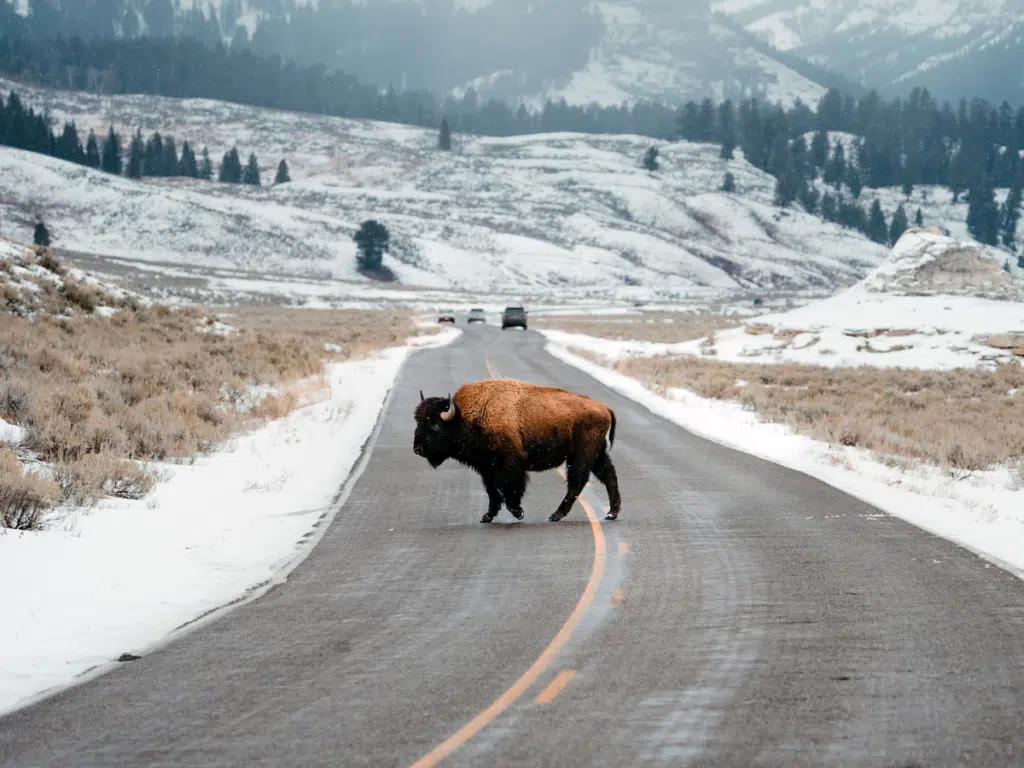
This post outlines some of the best prime lenses and all-in-one zoom lens options for the Sony Alpha A7 series– all while considering the most important factors like image quality, focal length, low-light performance, versatility, and value for money.
Towards the end of the article, I’ve even provided some helpful info on choosing between a zoom lens or a prime lens and a list of accessories to help you get the best shots as you’re out in the field.
Note : The lenses recommended in this list are for Sony’s A7 series , including the A7, A7S, A7C, and A7R series. Sony A7 cameras are full-frame, so it’s best to go with full-frame lenses to make sure image quality is as optimal as possible.
Let’s dive in!
Some of the links in this post are affiliate links for products I use and love. Any purchase you make through them supports the page at no extra cost to you.
Table of Contents
Best All-in-One Zoom Lenses for Travel Photography
Sony 16-35mm f/2.8.
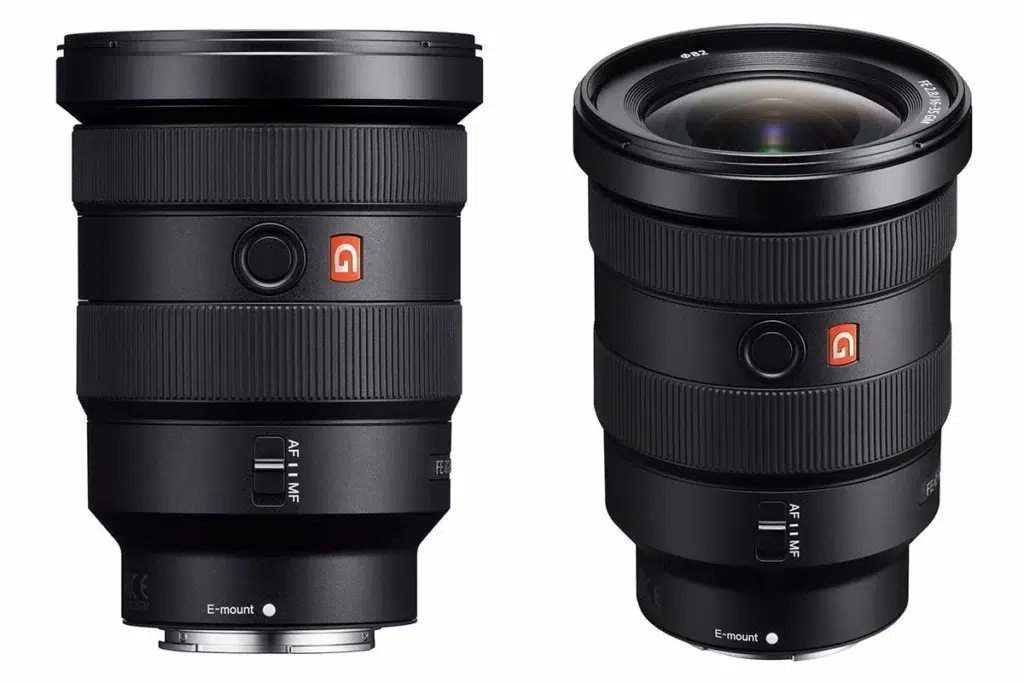
Best Landscape Photography Zoom Lens . The Sony 16-35mm f/2.8 GM is seriously a dream Sony lens for many photographers, especially those who are into photographing sweeping landscapes, cityscapes, and even architecture.
If you’ve ever seen those super wide shots of landscapes on IG where the subject is nearly a dot in the photo, chances are they were taken with this gem of a lens.
As a wide-angle lens, this lens can capture an ultra-wide angle view between 16mm and 35mm, making it a great option if you’re looking to shoot vast landscapes and wider scenes without compromising on quality and detail. 35mm is the perfect range for those everyday lifestyle photos, while 16mm allows you to get some wildly beautiful compositions that are hard to beat.
Sure, it’s a zoom lens, but Sony has done a great job of ensuring that this lens pairs perfectly with Sony Alpha A7 cameras. It’s equipped with a super fast f/2.8 aperture, which really comes in handy for lower-light environments and even creates some nice subtle bokeh if you need it.
It’s fairly lightweight (24 oz), has quick autofocus, and has a durable dust and moisture-resistant design, making it one of the best travel lenses for landscape photography, cityscapes, and everyday photography.
Just a heads up : It’s on the pricier side when it comes to travel lenses, but you do get what you paid for with this lens. Many Sony shooters are diehard fans of this wide-angle G Master lens, and for good reason.
Sony 18-105mm f/4
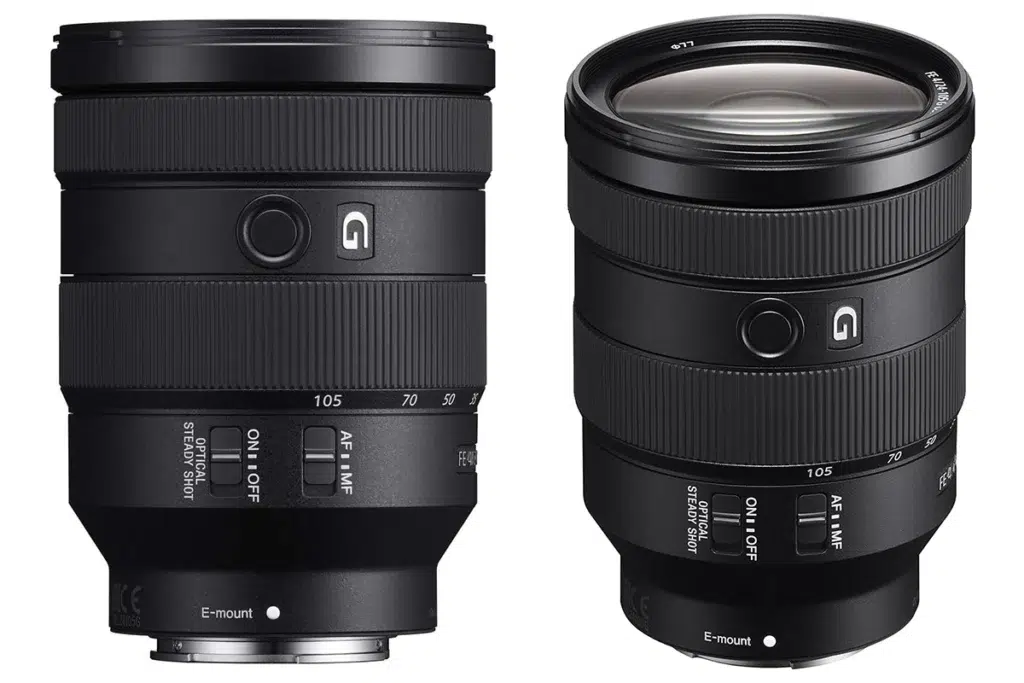
Best Everyday Travel Photography Zoom Lens. Ahh, the Sony 18-105mm f/4 lens. If versatility and having an all-in-one go-to lens are what you’re after, then this lens is a great option. Instead of constantly swapping lenses, this lens allows you to get a variety of focal lengths in one piece of equipment.
This is one of the best bread-and-butter Sony lenses around and is a huge step up from the (usually plastic) Sony kit lens.
The Sony 18-105mm f/4 G OSS telephoto lens is seriously a dream for travel photographers, myself included. This handy lens covers everything from ultra-wide to what you’d expect from telephoto lenses, making it perfect for framing expansive scenes or zooming in for detailed shots without losing image quality.
Its constant f/4 aperture ensures consistent exposure across all zoom levels, which is especially crucial when you’re shooting in changing environments.
I will say that the f/4 aperture is great for most cases, but not all. For example: if you’re in situations where you can’t control the lighting, such as at a wedding or event venue, you’ll probably want a wider aperture such as f/2.8 for those low-light shots.
This wider aperture gives you more wiggle room to expose your photo optimally. Also, f/4 tends to have less dramatic bokeh and a shallower depth of field compared to a wider aperture.
However, this doesn’t mean that this lens is not an absolute workhorse. It is still one of the best travel lenses available for Sony a7 cameras at a fairly affordable price point.
If you don’t want to carry around multiple lenses as you travel, the blend of versatility and performance the Sony Alpha 18-105mm offers makes it hard to beat.
Sony FE 200-600mm f/5.6-6.3 (Super Telephoto Zoom)
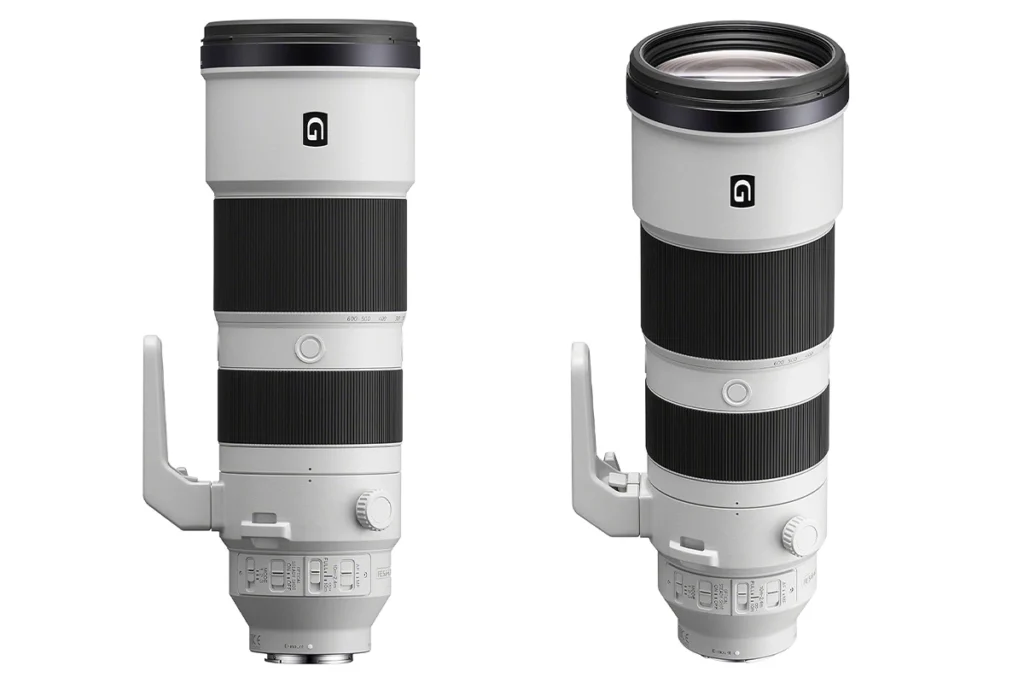
Best Wildlife Photography Zoom Lens. Sometimes you need to capture the intricate details but can’t get any closer to the subject. That’s where having a super telephoto lens like the Sony FE 200-600mm comes into play.
If you’re hoping to snap photos of wildlife or just want to get that amazing compression effect for the foreground and background, then the Sony 200-600mm f/5.6-6.3 is the best lens for you.
As the name implies, this Sony lens gives you different focal lengths via a versatile zoom ranging from 200mm to 600mm, which allows you to get some amazing details of the subject(s) you’re shooting. The variable aperture of f/5.6-6.3 means you get more wiggle room to get the right shot regardless of the environment you’re in.
This sturdy lens features speedy AF, Optical SteadyShot image stabilization, dust/moisture-resistant design, internal zoom, and amazing bokeh at any focal length.
While this is easily the best travel lens to shoot wildlife with, I wouldn’t consider it an everyday carry. It’s nearly a foot in length and also the heaviest of the lens options on this list. Therefore, it’s best reserved for those trips where you need/want to get some closer detail and image compression.
Regardless of its size, the Sony 200-600mm f/5.6-6.3 still one of my favorite travel lenses for my Sony camera and is worth consideration.
Tamron 28-200 f/2.8-5.6
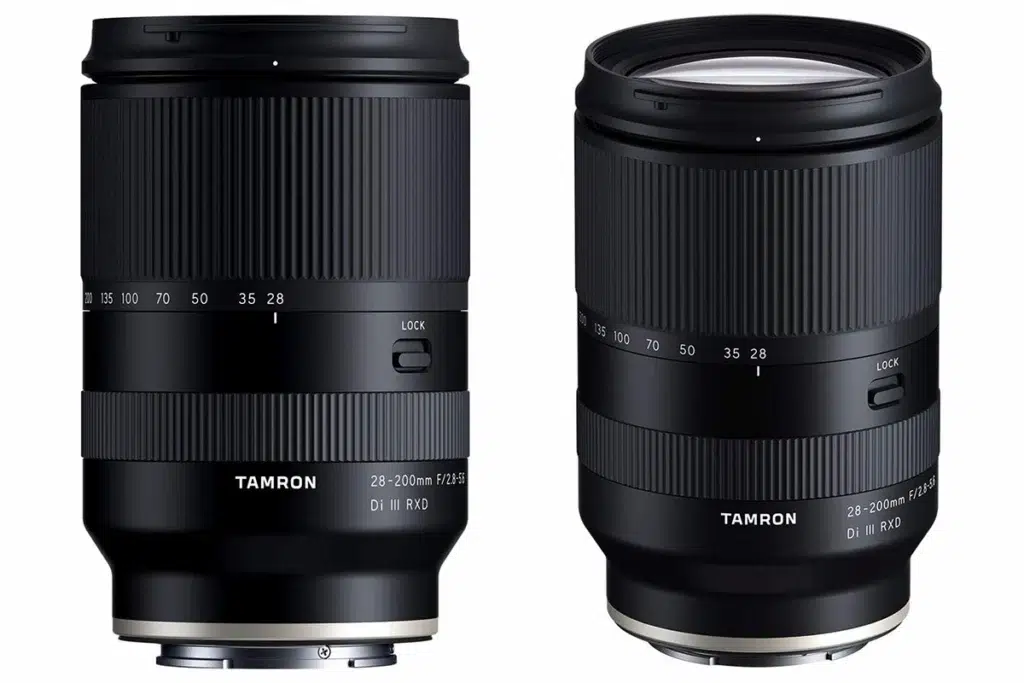
Best Budget Zoom Lens. Okay sure, this isn’t a Sony brand lens, but that doesn’t mean you lose anything when it comes to quality. Tamron is well-respected in the photography industry for producing a premium lens that competes with Sony lenses and other big-name competitors.
When you’re looking to capture both the grandeur of landscapes and the subtle details of street scenes without changing lenses, the Tamron 28-200mm f/2.8-5.6 is arguably the best travel lens around at such an affordable price point.
This lens provides a versatile focal range, from a super wide angle of 28mm for expansive views to 50mm for that “nifty fifty” sweet spot, to 200mm telephoto for those close-up details, making it a great value lens that fits the bill for just about any shooting scenario.
It’s designed with a compact build, rapid autofocus, and image stabilization, and maintains high-res quality across its zoom range. All in all, it’s a great travel lens for Sony A7 shooters looking to stick to a compact body lens that’s easier than, say, carrying around three lenses.
While it’s lighter and more adaptable than bulkier telephoto lenses, it still delivers sharp images and the consistent performance needed for vivid travel photography. This lens could be your go-to for capturing everything from the subtle nuances of urban life to those IG-worthy landscape shots.
I could’ve picked from the other lenses available on the market, but I chose this Tamron 28-200mm f/2.8-5.6 as one of my best travel lenses that pretty much stays on my camera so I’m ready for action. With its maximum aperture of f/2.8, it’s able to produce some impressive results, even in low light conditions and when shooting at slower shutter speeds.
Best Prime Lenses for Travel Photography
Rokinon 35mm f/1.8 wide angle.
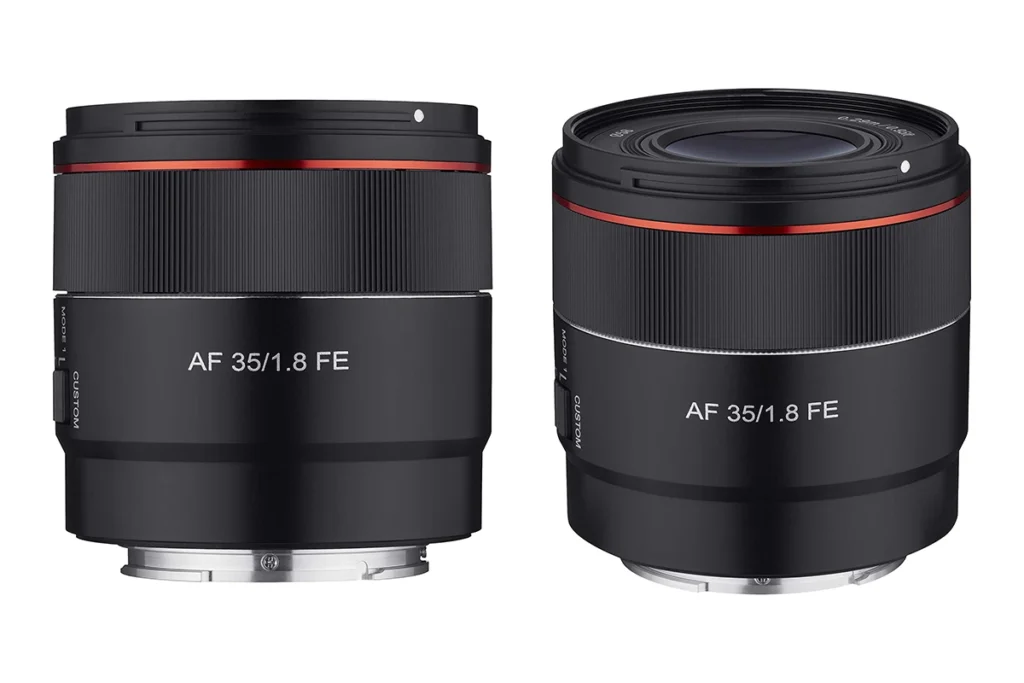
Best Budget Landscape Photography Lens. Another competitor for Sony lenses, the Rokinon 35mm f/1.8 is an amazing lens to have in your arsenal that won’t break your bank.
With a 35mm focal length, my Rokinon 35mm f/1.8 lens is a workhorse when it comes to cityscape scenery and snapping those sweeping landscape shots.
What makes this lens shine is its aperture of f/1.8. This aperture lets me work in various lighting conditions and perform like a champ even at slower shutter speeds, creating beautiful subtle bokeh when I need some greater depth of field and blurring of my background for certain creative shots.
The quality this little lens delivers is honestly very comparable with the Sony 35mm but for a fraction of the price. With an aperture range of f/1.8-22, super compact sizing and weight, precise AF, and manual focus override, this weather-sealed lens gives you a lot to work with for a fairly low price.
Rokinon 85mm f/1.4
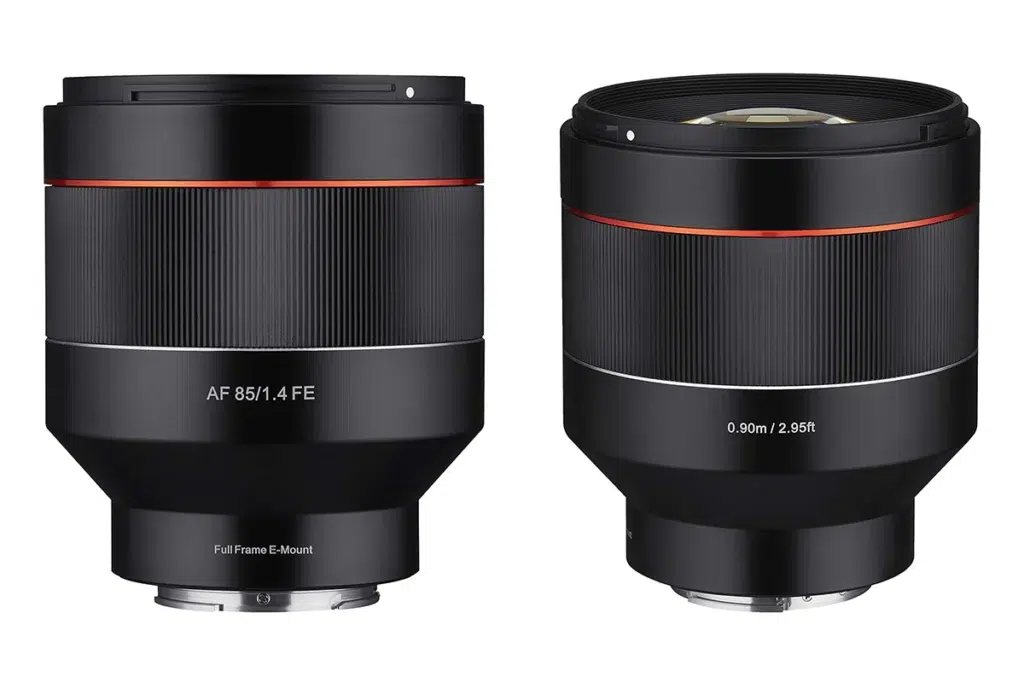
Best Budget Portrait Photography Travel Lens. When I think of this lens, I think of the travel creators who especially love to capture the essence of the people and the culture when they travel, like @alivelikethewind and @jordhammond on Instagram.
I seriously love this lens for many reasons. For one, it was the very first lens I bought for my Sony A7III camera and it continues to be one of my favorite lenses for travel portraiture.
Also, this lens has been surprisingly durable. I have dropped it a few times and it often gets tossed around in my bag as I travel, yet it continues to produce sharp quality and hasn’t crapped out on me.
This weather-sealed lens gives you quick AF, manual focus control, beautiful bokeh, and a wide aperture for sharp yet buttery smooth portraits and subject framing, making it one of the best lenses on the market for this type of shooting. It has an aperture range of f/1.4-16 so you can get those landscape shots on the fly as well.
All in all, it’s an impressive and affordable lens for Sony Alpha cameras that competes with other lenses in its class.
Sony Planar 50mm f/1.4
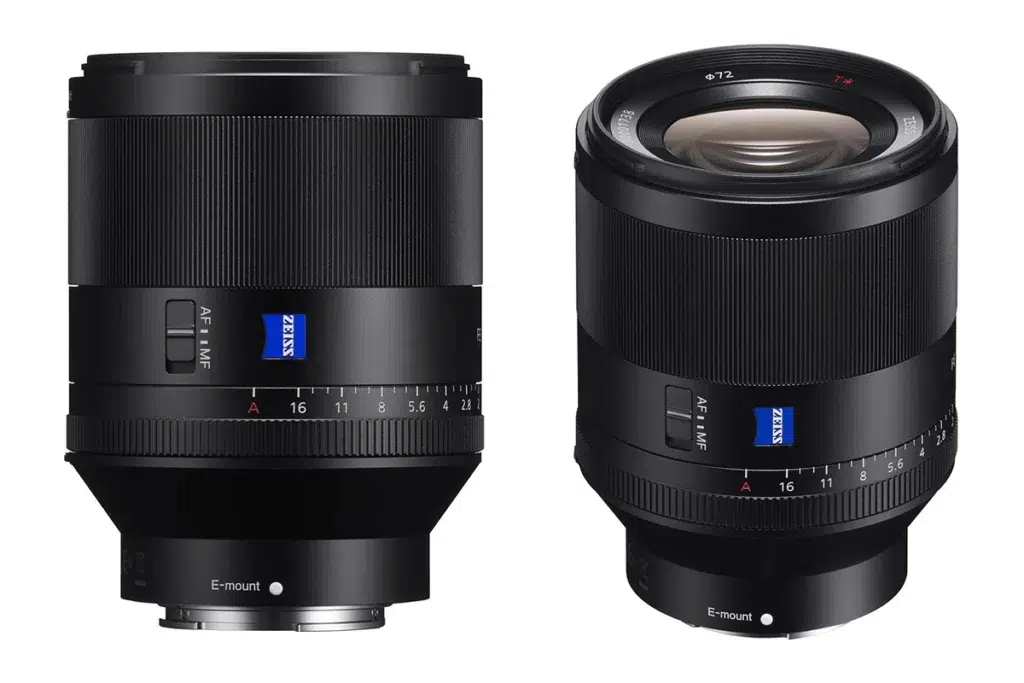
Best All-Around Prime Lens. Every photographer needs a “Nifty Fifty” in their arsenal, and the Sony Planar 50mm f/1.4 is easily the best Sony E lens for the A7 series that blends sharp results, build quality and performance.
For context, “Nifty Fifty” refers to the 50 mm focal length, and this Sony E lens’ focal length gives the closest perspective to the naked human eye. This makes the 50mm a great all-around focal range to shoot with that excels in portraiture, landscapes, and just about every other shooting condition you can think of.
With its fast aperture, sturdy design, ZEISS engineering, creamy bokeh, and easy AF/MF toggling, this Sony Alpha lens is usually one of the most sought-after lenses for full-frame Sony E-mount photographers.
This Sony lens is built with metal construction and weather sealing, making it a reliable choice for various shooting conditions. While there’s a cheaper Sony Alpha 50mm f/1.8 available, this f/1.4 version offers ridiculously sharp image quality and build, which is more than enough to justify the price.
Note: It’s not the cheapest, but its optical quality surpasses many other Sony Alpha lenses in its category. This lens is far above and beyond your typical kit lens.
How to Choose the Perfect Travel Lens
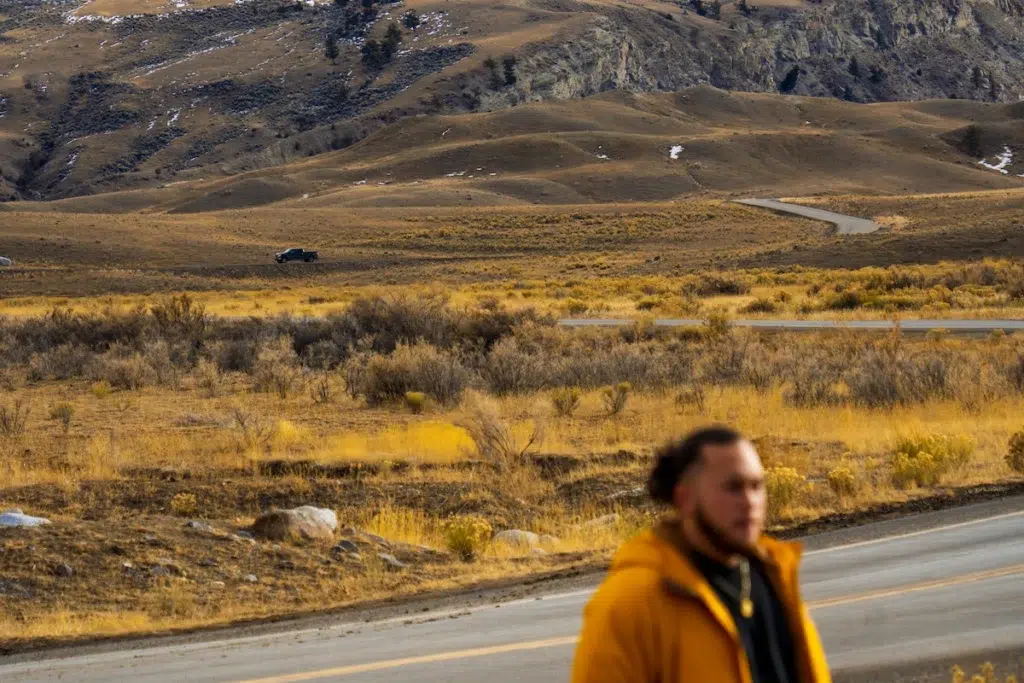
When it comes to choosing a travel lens, there are several key factors to think about. First, think about your travel style and the type of photography you enjoy.
Do you prefer getting out into nature for some sweet landscape shots? Are you someone who loves street photography in the city? Or maybe you’re more into portraits!
Think about what you’ll be shooting most of the time and what type of setting you’ll be in as you travel. This will help determine the focal length and aperture range that suits your needs.
Also, think about the size and weight of the lens, as you’ll want something compact and lightweight for easy portability if you’re, say, hiking for miles on end.
Finally, think about your budget and prioritize the features that are most important to you. After all, you don’t want to break the bank with a lens that is way out of your price range and probably more than you need to begin with.
Some photographers may be just fine with a kit lens, while other shooters may want the best that the Sony Alpha lineup has to offer.
Zoom Lenses vs Prime Lenses (Quick Comparison)
What is a Zoom Lens?
A zoom lens is a type of camera lens that allows you to change the focal length and angle of view, enabling you to capture both close-up details and wide scenes without having to change lenses when you’re on the go. It’s like having multiple lenses in one, allowing for more flexibility in framing and composing your shots.
There are tradeoffs though (aren’t there always?). For starters, these zoom lenses usually won’t be as sharp as prime lenses. Their zoom versatility means they have more glass elements inside, which can sometimes reduce image sharpness compared to prime lenses, which have a fixed focal length and typically fewer elements, leading to clearer and sharper images.
They also tend to be less effective in low-light shooting conditions, so night photography is usually best left for prime lenses. This doesn’t mean that zoom lenses are bad whatsoever. I love mine and travel with zoom lenses most of the time.
What is a Prime Lens?
A prime lens is a type of camera lens with a fixed focal length, meaning you can’t zoom in or out. This design usually results in a simpler, often more compact structure, leading to higher image quality with greater sharpness and less distortion compared to zoom lenses.
However, this simplicity comes with a tradeoff: you’ll have to physically move to change composition or framing, as the lens offers only one angle of view. Regardless, many travel photography professionals prefer prime lenses for their light-gathering capabilities and clarity, especially in low-light conditions.
Prime lenses are very popular when it comes to specific photography needs like portraits or street photography, where precision and image quality are key. They tend to encourage creativity and a more thoughtful approach to composition, which can help you become a better photographer in the long run.
With all that being said, it’s all about picking the best type of lens for your travel style. If you prefer the convenience of a single lens that covers a wide range of focal lengths, an all-in-one zoom lens is a great option.
These lenses offer versatility and are ideal for travel photographers who don’t want to carry multiple lenses.
Additional Accessories for Travel Photography
In addition to lenses, there are a few accessories that can enhance your travel photography experience. Here are some essential accessories that are worth taking a look into for your travels:
Lens Filters
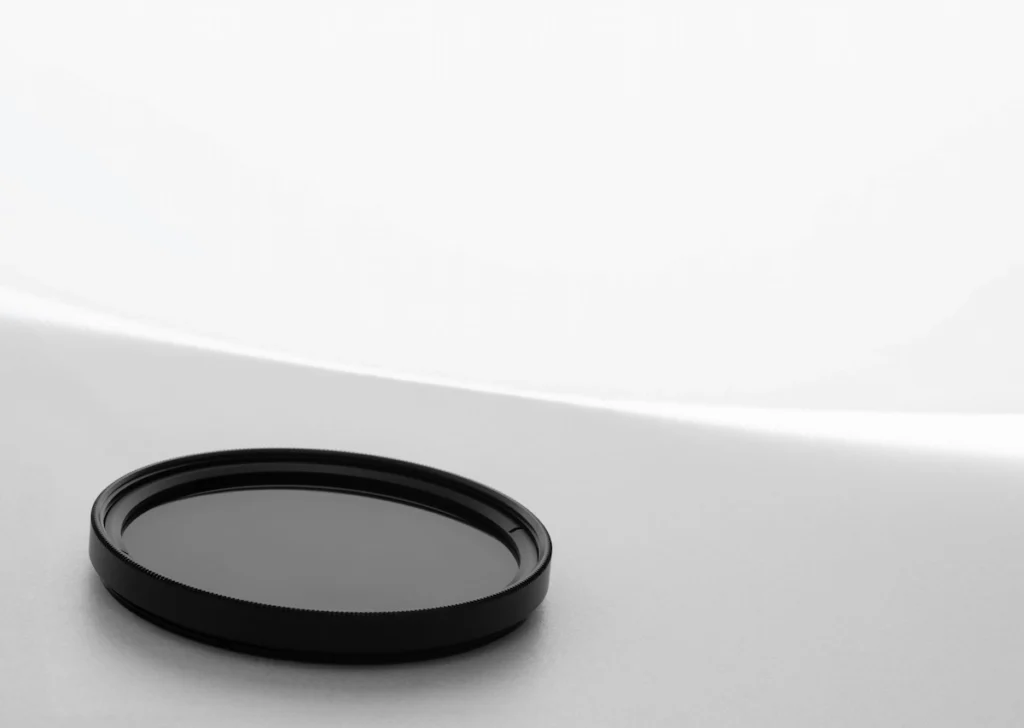
Filters, such as ND filters and polarizing filters, are valuable tools for travel photographers. An ND filter allows you to slow down the shutter speed, creating motion blur effects for subjects like waterfalls or clouds.
A polarizing filter helps reduce glare and reflections, enhancing the colors and contrast in your images. These filters can significantly improve the quality of your travel photographs.
There are also stylized filter options to choose from, such as the mist filter and prism filter. Here are my favorite staple lens filters that I believe every travel photographer should consider:
- K&F Concept Variable Neutral Density (ND) Lens Filter
- Polarizing Lens Filter
- K&F Black Diffusion 1/4 Mist Filter
Camera Cleaning Kit
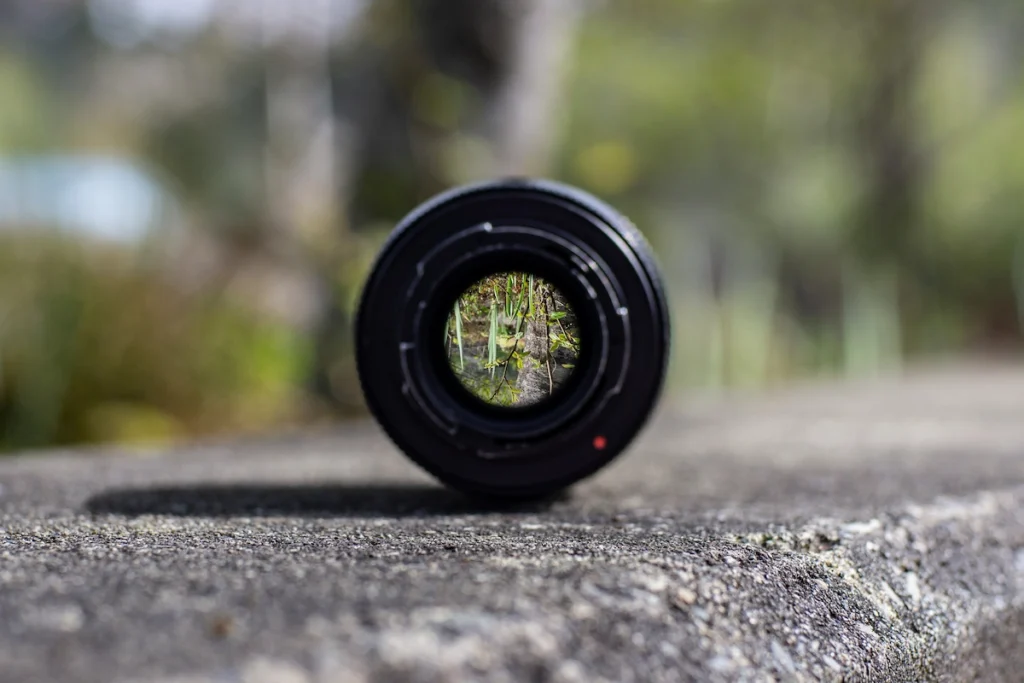
When changing lenses frequently, dust particles can find their way onto your camera’s sensor, leading to unwanted spots in your images.
A camera cleaning kit, like this one by Altura, usually includes a lens brush pen, microfiber cloth, and rocket air blower so you can remove dust and debris from your lens and camera’s sensor for spot-free photos.
Closing Thoughts
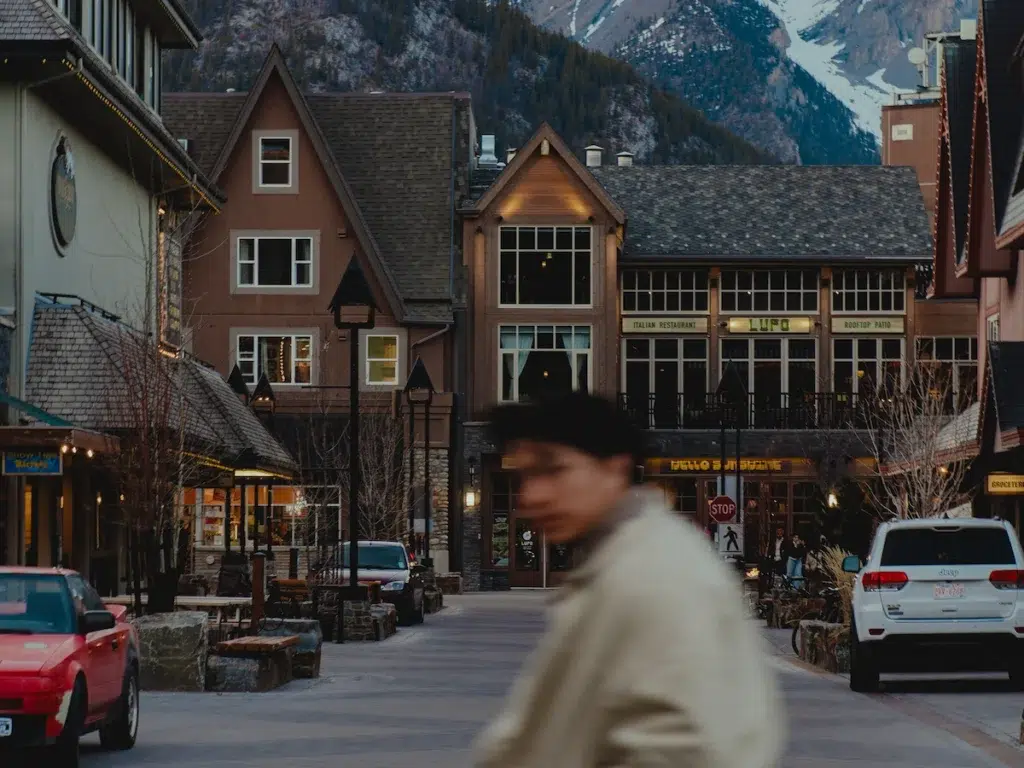
Finding the best Sony travel lens is a crucial decision for travel photographers. Whether you opt for an all-in-one zoom lens or prefer the versatility of prime lenses, there are excellent options available to suit your travel style and photography needs.
Remember to consider factors like image quality, focal length, low-light performance, and value for money when making your decision. With the right lens in your kit, you’ll be ready to capture stunning travel photos that tell your unique story. Happy shooting!
Disclaimer: The information provided in this article is based on personal experience and extensive research. Prices and availability of lenses and accessories may vary.
Pierre, founder of 'Wayfare With Pierre', is a travel photographer and digital nomad. He has shared travel insights and enhanced numerous travel platforms with his photography and content. Committed to fostering personal growth and wordly appreciation, Pierre inspires digital nomads and travelers to find deeper fulfillment through their adventures.
Similar Posts
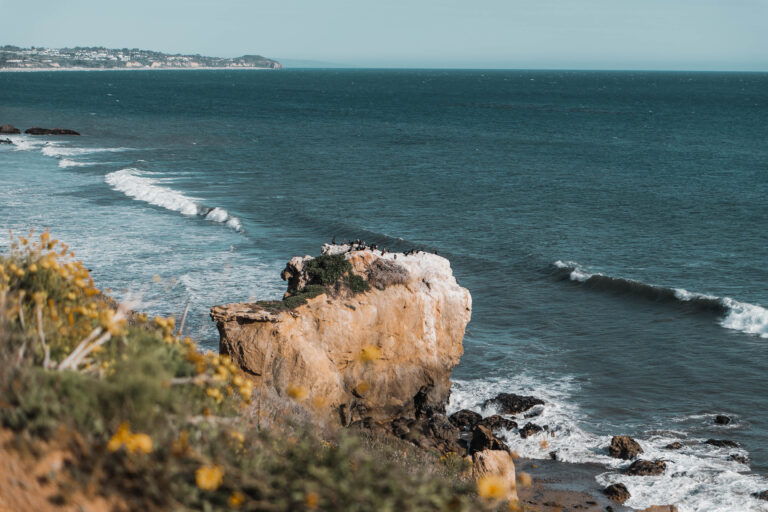
The Best (and Complete) El Matador State Beach Photoshoot Guide
Last Updated on March 4, 2024 If you haven’t been to El Matador Beach, you’re seriously missing out! El…
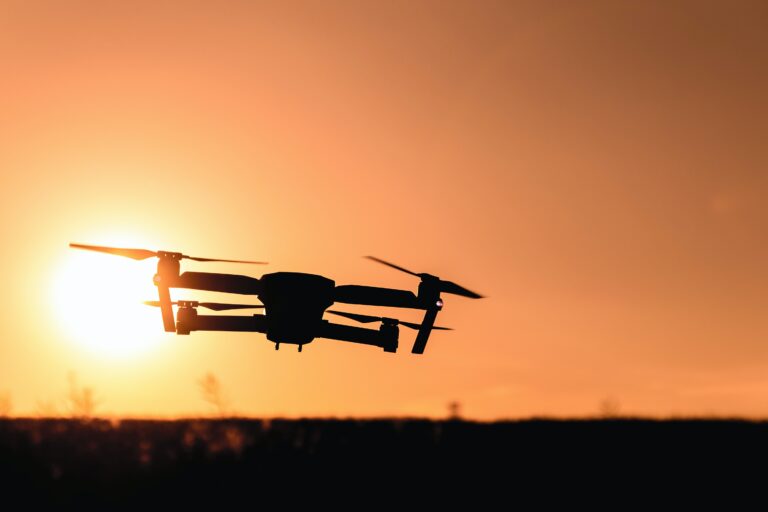
The Best Drones Under $500 (Updated for 2024)
Last Updated on March 4, 2024 Let’s face it- most people (myself included) don’t want to buy a $3,000…
Leave a Reply Cancel reply
Your email address will not be published. Required fields are marked *
Save my name, email, and website in this browser for the next time I comment.
The best Sony lenses in 2024: top E-Mount lenses for Sony Alpha mirrorless cameras
These are the best Sony lenses, including Sony and third-party lenses for both full-frame and APS-C cameras
The Quick List
- Best standard zoom
- Best standard prime
- Best telephoto zoom
- Best affordable standard zoom
- Best portrait lens
- Best super-telephoto zoom
- Best lens for travel
- Best ultra-wide zoom
- Best for street photography
- Best macro lens
- Best APS-C wide zoom
- Best APS-C telephoto zoom
- How to choose
- How we test

The Quick List ↩ 1. Best standard zoom 2. Best standard prime 3. Best telephoto zoom 4. Best affordable standard zoom 5. Best portrait lens 6. Best super-telephoto zoom 7. Best lens for travel 8. Best ultra-wide zoom 9. Best for street photography 10. Best macro lens 11. Best APS-C wide zoom 12. Best APS-C telephoto zoom How to choose How we test
We’ve always been big fans of Sony ’s top-flight G Master lenses. They’re big and beautiful, but expensive, designed to suit the best Sony camera s for professionals. These lenses aim for the ultimate in all-around performance and image quality, especially in terms of sharpness and bokeh (the quality of defocused areas within images). But they’re not for everyone. We’re finding more and more that we need to keep an eye on the budget, and there are many relatively affordable lenses that we’d be more than happy to pop in our kit bags. We’re also impressed that, because Sony stole a lead on other manufacturers in the full-frame mirrorless market, it’s had more time to build up a wide array of companion lenses to suit every need and budget. And let’s not forget that there’s a deep vein of history behind Sony's range of APS-C models that are more for hobbyists and enthusiasts, like the Sony a6700 or the Sony ZV-E10 vlogging camera. As with other camera systems, you can use full-frame ‘FE’ lenses on APS-C models too, and often this can be the best choice for telephotos, macro lenses, and other longer focal length options. But with standard zooms and ultra-wide lenses, we always feel it’s essential to get the right tool for the job, which will be a lens specifically designed for an APS-C format camera. And, if you haven't decided which model to buy, then do also check out our best Sony camera guide. So, without further ado, here are the lenses that we think are the best buys in all the major categories, for both full-frame and APS-C format Sony mirrorless cameras.
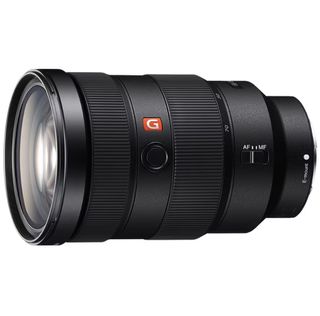
For us, a ‘trinity’ standard zoom lens with a fast and constant F2.8 aperture is the go-to lens for everyday shooting, and the FE 24-70mm F2.8 GM II is one of the finest examples of the breed. Read more below...

We always think that a ‘nifty fifty’ is an essential bit of kit. The Sony FE 50mm F1.4 is the lens that is most suited to most Sony shooters who love the natural perspective of a 50mm prime. It's light and compact, without compromising on optical quality. Read more below...

We’ve always found a 70-200mm F2.8 lens to be arguably the most essential zoom, even for those that generally shoot with primes, and the Sony FE 70-200mm F2.8 G Master OSS is a seriously top-flight option. Read more below...
Best Sony lenses in 2024
Why you can trust Digital Camera World Our expert reviewers spend hours testing and comparing products and services so you can choose the best for you. Find out how we test.
Best Sony standard zoom lens
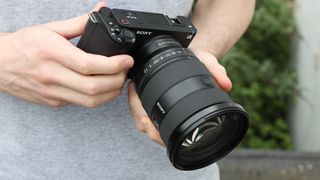
1. Sony FE 24-70mm f/2.8 GM II
Our expert review:
Specifications
Reasons to buy, reasons to avoid.
For us, a ‘trinity’ standard zoom lens with a fast and constant F2.8 aperture is the go-to lens for everyday shooting, and the FE 24-70mm F2.8 GM II is one of the finest examples of the breed. We really like the sturdy, weather-sealed build quality and handling characteristics, with its customizable focus hold function button and switches for AFMF and zoom lock.
The lens is packed with high-tech, high-precision optical elements, and we love that autofocus is blazing fast for stills and provides smooth and near-silent autofocus transitions during movie capture. There’s no optical stabilizer but this is only an issue with first-edition Sony mirrorless full-frame cameras that lack in-body stabilization.
Image quality is spectacular in all respects. Even when shooting wide-open, we’ve found that sharpness is simply phenomenal, throughout the entire zoom range. But if your pockets aren’t deep enough for such an expensive lens, other strong contenders include the Sigma 24-70mm F2.8 DG DN Art , Tamron 28-75mm F2.8 Di III RXD G2 , and Samyang AF 24-70mm F2.8 FE .
Read our full Sony FE 24-70mm f/2.8 GM II review for more details
- Back to the top ⤴
Best Sony standard prime lens
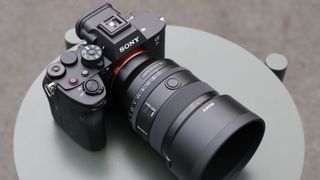
2. Sony FE 50mm f/1.4 GM
We always think that a ‘nifty fifty’ is an essential bit of kit. The Sony FE 50mm F1.4 is the lens that is most suited to most Sony shooters who love the natural perspective of a 50mm prime.
Impressively light and compact, but not compromising one bit on optical quality, we find this lens is pretty much perfect when it comes to center-sharpness and holds up very well towards the edges of the frame. If you don't really feel the need for the even faster aperture, added size, weight, and considerable extra cost of the Sony FE 50mm F1.2 G Master , then this FE 50mm F1.4 is the one to go for.
Read our full Sony FE 50mm f/1.4 GM review for more details
Best Sony telephoto zoom lens

3. Sony FE 70-200mm f/2.8 G Master OSS
We’ve always found a 70-200mm F2.8 lens to be arguably the most essential zoom, even for those that generally shoot with primes, and the Sony FE 70-200mm F2.8 G Master OSS is a seriously top-flight option.
We’re impressed that the feast of glass includes a double-sided XA (Extreme Aspherical) element, two other aspherical elements, four ED (Extra-low Dispersion) elements, and two Super ED elements. For tracking action, we also love the super-fast autofocus system, based on dual linear motors plus an RDSSM (Ring Drive Super Sonic wave Motor).
Handling is refined, with an autofocus range limiter, customizable focus hold buttons, and dual-mode stabilization for static and panning shots. For a more lightweight option, we also love the compact Tamron 70-180mm F2.8 Di III VXD , while the Tamron 70-300mm F4.5-6.3 Di III RXD is a more conventional ‘budget’ telephoto zoom.
Read our full Sony FE 70-200mm f/2.8 GM OSS review for more details
Best affordable Sony standard zoom lens

4. Sony E 16-55mm f/2.8 G
There is an older Sony Vario-Tessar T E 16-70mm F4 ZA OSS which is cheaper and lighter than this lens and has optical stabilization, but the maximum aperture is F4, so the new Sony E 16-55mm F2.8 G is, we think, the best standard zoom for Sony APS-C cameras. As a standard lens with a classic zoom range, the Sony E 16-55mm F2.8 G ticks nearly all the right boxes.
It delivers sumptuous image quality with fabulous sharpness and contrast, along with pleasant bokeh. Handling is very refined, with the addition of a customizable focus hold button, strong build quality, and weather seals. Autofocus is super-fast and deadly accurate. The only downside is the lack of optical stabilization but, overall, we simply love this lens.
Read our full Sony E 16-55mm f/2.8 G review for more details
Best Sony portrait lens

5. Sony FE 135mm f1.8 GM
While the Sony FE 85mm F1.4 G Master will be seen as the most ideal portrait lens by many, we find that this 135mm version gets us closer to your sitter while maintaining a natural shooting distance, thus working really well for close-up portraits, and any other shooting scenario that calls for impeccable image quality at this focal length.
The high-grade optical path includes XA (eXtreme Aspherical), Super ED, and regular ED elements, along with an 11-blade diaphragm that maintains a particularly well-rounded aperture when stopping down a bit.
We love the handling, complete with an aperture control ring with de-click switch, and the lens combines striking sharpness and contrast with a really smooth bokeh. A cut-price but highly capable direct competitor is the Samyang AF 135mm F1.8 FE , and it’s also worth considering the Sigma 85mm F1.4 DG DN Art and the specialist Sony FE 100mm F2.8 STF G Master OSS .
Read our full Sony FE 135mm f1.8 GM full review for more details
Best Sony super-telephoto zoom lens
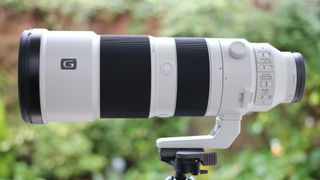
6. Sony FE 200-600mm f/5.6-6.3 G OSS
Fast super-telephoto lenses for full-frame cameras are always expensive, but we like that the more modest aperture rating of the Sony FE 200-600mm F5.6-6.3 G OSS makes it relatively affordable. We think this lens has a real wow factor. Sure, it’s not a G Master optic but it looks and handles great.
It’s naturally pretty big and heavy but entirely viable for handheld shooting, helped along by effective Optical SteadyShot. We’re also impressed by the fast autofocus system, which is adept at tracking fast-paced action in action, sports, and wildlife photography, for which the lens is ideal. All in all, it delivers sharp shots time after time, with an excellent hit rate.
Read our full Sony FE 200-600mm f/5.6-6.3 G OSS review for more details
Best Sony lens for travel
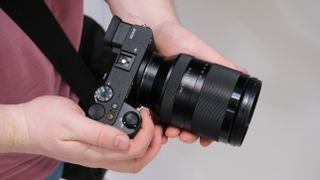
7. Sony FE 24-240mm F3.5-6.3 OSS
We like to travel light. Whether we’re exploring city streets or venturing further afield, we often like to stick to one lens that caters to wide-ranging shooting scenarios. And that’s why we really rate the Sony FE 24-240mm F3.5-6.3 OSS.
It's compact, neat, affordable, and offers a really useful zoom range. And unlike many ‘superzoom’ lenses, it delivers impressively sharp shots throughout its entire zoom range. Sure, it relies quite heavily on in-camera corrections for various aberrations, but that’s par for the course with many recently designed lenses for mirrorless cameras.
Best Sony ultra-wide zoom lens
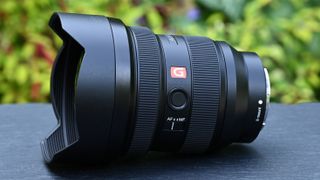
8. Sony FE 12-24mm f/2.8 G Master
Completing the trinity of F2.8 constant-aperture zooms, the FE 12-24mm F2.8 G Master hits the wide-angle spot. We love that this lens actually goes wider than many competitors, delivering a really extreme maximum field of view. Moreover, it maintains superb image quality and all-round performance throughout its entire zoom range, earning its G Master credentials.
Even so, we wouldn’t rule out the Sony FE 12-24mm F4 G zoom, which gives the same ultra-wide viewing angles but is an f/stop slower. And if you don’t feel the need to go so ‘ultra-wide’, the Tamron 17-28mm F2.8 Di III RXD is an excellent budget-friendly alternative.
Read our full Sony FE 12-24mm f/2.8 G Master review for more details
Best Sony lens for street photography

9. Sony FE 35mm f/1.4 G Master
We tend to favor a 35mm prime lens for street photography and this one is fast and extremely capable. It’s a premium G Master option that gives a mix of an ultra-fast maximum aperture and modest wide-angle focal length, making it a very versatile lens not just for street photography, but also for anything from portraits and weddings, to landscape and astrophotography.
As you'd expect, it isn't cheap, but it impresses us with its spectacular optical performance. It's not the smallest 35mm prime we've seen, but it has great handling, with a perfectly weighted ‘de-clickable’ aperture ring and super-smooth focus ring. A lovely lens, but it inevitably comes at a hefty price. For candid street photography or if you’re on a tighter budget, consider the Sony FE 40mm F2.5 G .
Read our full Sony FE 35mm f/1.4 G Master review for more details
Best Sony macro lens

10. Sony FE 90mm f/2.8 Macro G OSS
There’s a lot to love about this macro lens. We find that its minimum focus distance of 0.28m gives a very natural working distance for full 1.0x or 1:1 macro magnification.
Beautifully built, this lens has up-market handling attractions including a customizable focus hold button, autofocus range limiter switch and Optical SteadyShot. Given that manual focusing is often preferred for extreme close-up shooting, there’s also a handy push-pull mechanism in the focus ring, for switching between auto and manual focus modes.
We find that image quality is very good in all respects, with excellent sharpness even wide-open at F2.8, and the edges and corners catch up nicely when stopping down a little. More importantly for a macro lens, sharpness remains very good at narrow apertures, often required to get more than a tiny depth of field.
Read our full Sony FE 90mm f/2.8 Macro G OSS review for more details
Best Sony APS-C wide zoom lens
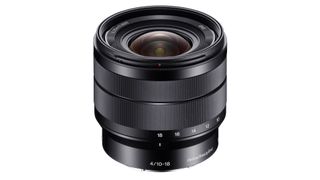
11. Sony E 10-18mm F4 OSS
We like that this ultra-wide-angle zoom for APS-C cameras is conveniently compact and lightweight, yet still packs a real punch with good overall performance, a constant F4 aperture rating throughout the zoom range, and 3-stop optical stabilization. The latter is quite rare on an ultra-wide-angle zoom lens, and very useful if you have one of Sony's un-stabilized A6000-series cameras.
In terms of image quality, center-sharpness is excellent throughout the zoom range but corner-sharpness is relatively lackluster at 10mm, even when stopping down the aperture.
Thankfully, color fringing is pretty negligible at any combination of focal length and aperture setting, even towards the corners of the image frame, and distortion is quite well controlled. If you’re more into video shooting and vlogging than stills photography, a better bet is the newer Sony E PZ 10-20mm F4 G , with its motorized zoom mechanism.
Read our full Sony E 10-18mm F4 OSS review for more details
Best Sony APS-C telephoto zoom lens

12. Sony E 70-350mm f/4.5-6.3 G OSS
We absolutely love the Sony E 70-350mm F4.5-6.3 G OSS. It sports a 5x zoom range that equates to 105-525mm in full-frame terms, taking it into super-telephoto territory, but with a comparatively compact and lightweight build. Downsizing is helped by the modest F4.5-6.3 aperture rating but image quality and all-round performance are very impressive.
It doesn’t have the world’s most effective optical stabilizer, but you can still expect a great hit rate with sharp handheld shots, even at the longest zoom setting. Overall, this is a lens that’s big on performance but refreshingly small and lightweight for handheld shooting.
Read our full Sony E 70-350mm f/4.5-6.3 G OSS review for more details
How to choose the best Sony lens
Do i need oss.
Optical SteadyShot can be really useful if your Sony camera doesn’t feature IBIS (In-Body Image Stabilization). It’ll help counteract the effects of camera-shake and ensure you get sharp handheld shots more consistently with slow shutter speeds. IBIS tends to be less effective when shooting with telephoto lenses, so OSS is often featured in this type of lens regardless.
What’s the APS-C crop factor?
Sony’s APS-C cameras have an image sensor that’s the same size as a frame of ‘Advanced Photographic System type C’ film. That’s somewhat smaller than a frame of 35m film, on which full-frame digital cameras are based. The outcome is that the ‘crop factor’ gives a 1.5x magnification in the focal length of lenses. For example, a 50mm lens will give the same field of view as using a 75mm lens on a full-frame camera.
How do I tell if a lens is full-frame compatible?
It can be tricky for the uninitiated to recognize the difference between Sony lenses that are made for full-frame or APS-C format cameras. The clue is in the title. APS-C format lenses have an ‘E’ prefix, whereas full-frame compatible lenses have an ‘FE’ prefix. Bear in mind though, that you can shoot with E lenses on full-frame cameras in crop mode, and with FE lenses on APS-C cameras with no limitations.
Zoom or prime?
Sometimes it’s hard to decide whether a zoom lens or a prime lens will be a better buy. Zoom lenses tend to be more versatile, as they cover a broad spread of focal lengths. However, there’s a lot to be said for the prime lenses, which generally have a wider or ‘faster’ aperture rating and are often relatively small and lightweight. 35mm, 50mm and 85mm prime lenses are particularly popular for street photography, general shooting and portraiture, respectively.
How we test Sony lenses
We test lenses using both real world sample images and lab tests. Our lab tests are carried out scientifically in controlled conditions using the Imatest testing suite, which consists of custom charts and analysis software that measures resolution in line widths/picture height, a measurement widely used in lens and camera testing. We find the combination of lab and real-word testing works best, as each reveals different qualities and characteristics. You can find out more about how we test and review on Digital Camera World .
Get the Digital Camera World Newsletter
The best camera deals, reviews, product advice, and unmissable photography news, direct to your inbox!

Matthew Richards is a photographer and journalist who has spent years using and reviewing all manner of photo gear. He is Digital Camera World's principal lens reviewer – and has tested more primes and zooms than most people have had hot dinners!
His expertise with equipment doesn’t end there, though. He is also an encyclopedia when it comes to all manner of cameras, camera holsters and bags, flashguns, tripods and heads, printers, papers and inks, and just about anything imaging-related.
In an earlier life he was a broadcast engineer at the BBC, as well as a former editor of PC Guide.
- Gareth Bevan Reviews Editor
Related articles
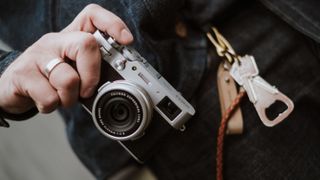

Best Sony Lenses for Travel Photography in 2022
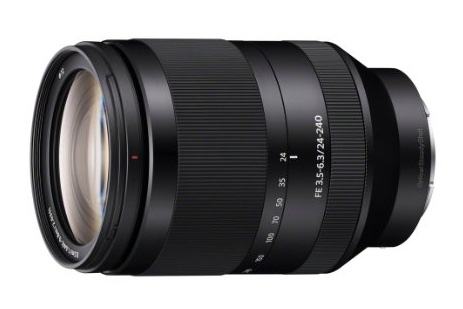
Don’t like carrying around too many lenses?
If you plan on traveling, then you should definitely check out our list below and see what Sony lenses are perfect for travel and casual/everyday photography.
What can you shoot with them? From landscape, sports, portraits, to food, buildings, indoors, you name it.
We looked for lenses that offer plenty of zoom, good aperture even when shooting in low light, and great image quality. For prime lenses, we made sure their focal length is considered normal and that they don’t weigh a ton.
This guide is for E-mount cameras; A6, A7 and A9 series.
Table of Contents
Best Sony Zoom Travel Lenses:
Sony 10-18mm f/4 G OSS
Sony 16-35mm f/4 ZA OSS
Sony 18-105mm f/4 G OSS
Sony 24-240mm f/3.5-6.3 OSS
Best Sony Prime Travel Lenses:
Sony 35mm f/2.8 ZA
Sony 50mm f/1.8 OSS
Sony 55mm f/1.8 OSS
Sigma 60mm f/2.8 EX DN Art
First, we’ll go through all the lenses. After that, you can read through our buying guide and tips on what matters in a travel lens.
The 4 Best Sony Travel Zoom Lenses
If you decide to buy anything after clicking on our Amazon, you automatically support our work and this website (at no extra cost for you).
1. Sony 10-18mm f/4 G OSS
The Sony 10-18mm f/4 G OSS is the widest zoom lens available for APS-C Sony cameras.
Aperture stays fixed at f/4 regardless of your length, which seems to be a standard for almost all Sony’s zooms and it’s something we like. While f/4 is not the best aperture for low light, it’s still better than f/5.6 or f/6.3, something that’s common when zooms under $1000.
If you like photographing landscape, cities, architecture and wide places when traveling, you’ll love the field of view. Auto focus is also quick and usable for shots on the go even though this isn’t aimed at sports shooters.
Distortion is very well controlled for a lens this wide, but vignetting at f/4 and 10mm will have to be corrected either in the camera or in post process, as you’ll most likely find it too strong.
The lens is also really light, yet feels solid and is mostly made of metal. It’s far from heavy at 0.50 lb (225g). The minimum focus distance is 0.82 ft (0.25m) and it takes 62mm filters.
It’s a perfect lens for landscape, streets, buildings, nature and even for traveling. It’ll be fine indoors too, but you will probably have to raise the ISO when in dim light.
A really useful feature is the OSS (stabilization) so if your camera doesn’t have it built-in, you can rely on getting around 4 stops of extra stabilization if you’re not stable enough.
You can buy it at Amazon or see more reviews here .
2. Sony 16-35mm f/4 ZA OSS
The Sony 16-35mm f/4 ZA OSS is a versatile, sharp lens for all sorts of landscape and wide angle situations.
It’s sort of like the 10-18mm above, but for full frame models (due to the difference in field of view).
If you prefer wide zooms over primes, there’s no better lens, especially at this price. The colors, contrast and sharpness are all great. While it’s usable at f/4, the corners might be a little too soft for some, at least when above 28mm.
Specification wise, the 16-35mm f/4 features AA (advanced apsherical) and 3 ED elements that help control the chromatic aberration and show less distortion. There’s also T* coating to reduce the flare and ghosting. It displays normal signs of vignetting and distortion for when under 20mm, but both can be corrected if needed.
It weighs 18.3 oz (518g) and it balances nicely on all A7 bodies. It’s not heavy either, but if you’re looking for something even lighter we recommend buying 2 primes. Its minimum focus distance is 0.92 ft (0.28m) but it’s nothing to use as a lens for close up shots with 0.19x magnification. The lens is aimed at indoor, street, landscape and group shots scenarios and it excels at that.
Aperture stays fixed at f/4 at all lengths which seems to be a standard with the majority of Sony’s lenses. An f/2.8 16-35mm would probably be too big and heavy for most, but we’re sure that slowly more and more f/2.8 zooms will arrive.
3. Sony 18-105mm f/4 G OSS
The Sony 18-105mm f/4 G OSS is our favorite all-around zoom lens. It may be a little bit heavy for some of you, but the quality at this price is absolutely worth it.
Focal length is great for pretty much everything; landscape, streets, indoors, portraits, animals, closer sports and much more. At 15.1 (around 500g) oz it’s not the lightest lens when compared to other Sony zooms, but it’s still pretty light to be honest. In return, you get a fixed f/4 aperture at all lengths and really sharp images.
Colors, contrast, sharpness are great, and it feels solid in hand as well. If you’re looking for that one zoom to do it all, this is it.
It’s usable at f/4 but in certain the situations at 18mm, the vignetting is fairly visible. One stop smaller and it gets all better.
We also considered the Sony 16-70mm f/4 , but for $300 more, all you get is less reach and a lighter lens. If weight is absolutely the most important factor to you then it will be a good all-around lens, but simply looking for the best value for your money, nothing beats the 18-105mm.
4. Sony 24-240mm f/3.5-6.3 OSS

As if big the lens above wasn’t bulky enough, we present the Sony 24-240mm f/3.5-6.3 OSS . It’s a tad lighter and smaller, but on an A7 body, both will make the camera look tiny.
The lens is ideal if you’re looking for 1 single lens that can do it all with good image quality and 10x zoom. The image quality obviously can not match that of prime lenses, but it’s not competing with them. The 24-240mm is something you take with you when switching between different lenses and carrying a ton of equipment sounds like it’s going to stop you from taking pictures. We’ve all been there and it’s something we often forget before purchasing gear. Image quality is one thing, carrying all that stuff is another.
It weighs 27.6 oz / 780g and costs less than $900. Surprisingly, the lens is very good at controlling vignetting, chromatic aberration and distortion, which for such a big zoom is really awesome. Colors and sharpness are also quite good, but again not on the level of primes. Another downside is also f/6.3 at 240mm. Outdoors you’ll probably fine in most situations, but as soon as it gets darker you’ll have the raise the ISO speed or use a tripod. OSS helps, but at 240mm it’s easier to get a blurred shot than at 24mm.
With a big zoom you always have to make some compromises, but it’s good knowing that the actual quality of the shots is far from bad.
The 4 Best Sony Travel Prime Lenses
1. sony 35mm f/2.8 oss.

The 35mm length is brilliant for portraits, landscape, streets, indoor, nature etc. The Sony 35mm f/2.8 OSS is probably your best lens if you’re looking for a small, affordable but sharp prime.
It was tough choosing between the 35mm f/2.8 and Sony 35mm f/1.4, but the latter costs more than twice as much and weighs 4.5x as much. Unless you shoot in low light and absolutely need the big f/1.4 aperture, you’ll be more than fine with f/2.8 even when shooting indoors.
The 35mm f/2.8 has 7 diaphragm blades, while the f/1.4 has 9. Bokeh looks good on both, but the f/1.4 is the winner here. If that’s worth the extra money depends on how much bokeh is important to you.
Besides streets, you can use it as an all-around compact prime for just about anything; travel, indoors, nature, events and casual photography. There’s no OSS, but if your cameras has it built-in there’s no need to worry.
If you have the budget for both versions, you’ll need to ask yourself whether a bigger, heavier, more expensive and slightly sharper lens is better than an extremely light, compact, sharp with 2 stops smaller aperture.
2. Sony 35mm f/1.8 OSS

While the lens above is suitable for full frame cameras, the Sony 35mm f/1.8G OSS was built for APS-C cameras (A6500 and lower).
For low light photography, an aperture f/1.8 is always good to have. Compared to f/2.8, it lets in almost twice as much light and you’ll appreciate it when shooting in low light and trying to use a fast shutter speed, or keep the ISO low.
For achieving a shallow depth of field (blurred background), a big aperture is also a must, anything bigger or equal to f/2.8. This makes it great for portraits, weddings, pets and whenever you want your subject to pop out.
The lens is really light (5.5 oz/155g) and accepts 49mm filters. For shooting on to go, or traveling light, the focal length + weight make it an excellent companion. Its auto focus is quick and accurate although you can expect it to hunt a little bit in low light. It was a no-brainer to include it here.
3. Sony 50mm f/1.8 OSS

If you’re more into portraits and isolating your subjects, the Sony 50mm f/1.8 OSS is great.
The 50mm length on APS-C is equivalent to a 75mm lens on full frame. It sits between the ‘standard’ and ‘telephoto’ range so it it’s good for both casual (but not wide) photography and weddings, concerts, any situation where you can’t always be too close to your subject.
It’s more or less like the 35mm above; same aperture, similar weight and size. The 50mm is around $150 cheaper though! Quality wise, it’s similar to 50mm f/1.8’s from other brands; usable and sharp at f/1.8, but by f/4 everything gets even better (including corners). If you’re shooting in low light and want good results, you can expect them at f/1.8 so no worries.
4. Sony 55mm f/1.8 OSS

For a few more hundred dollars, but still less than $1000, we have the famous Sony 55mm f/1.8 ZA .
If we had to pick one prime lens that would be good for a whole lot of different things (portraits, low light, casual, travel etc.), this is what we would pick.
At f/1.8 it’s already really sharp, especially in the center. Stopping down to f/2.8 or f/4 delivers impressive results, but it’s good to know that you can actually use an f/1.8 at f/1.8. Vignetting and chromatic aberration at f/1.8 will be visible, but it’s still fairly well considering better 50mm’s cost a lot more.
It’s quite light and small, so it’s perfect for hours of photographing (hiking, traveling, weddings). Fits very well with the A7 bodies and won’t make your back hurt. Thanks to 9 diaphragm blades, bokeh looks really good too.
Simply put, for both outdoor and indoor work, unless you shoot wildlife, you’ll love the 55mm f/1.8. The length, sharpness and size make it one of the most versatile primes for any Sony body.
Sony Travel Lenses – What’s Important?

1. Focal Length
This is what makes a lens all-around; the more zoom, the more versatile it is. Traveling is such a broad term and you want a lens that allows you to capture every moment regardless of where you’re at.
Full Frame: 24mm to 120mm range.
APS-C: 18mm to 100mm
The reason why APS-C users should get wider lenses is because an APS-C sensor has 1.6x crop factor, which means that any lens you use will actually look as if it’s 1.6x longer. Read more about the crop factor at B&H here.
2. Aperture Size
Zooms that are perfect for traveling have aperture sizes from f/4 to f/5.6. Sometimes you’ll see a third stop smaller or bigger values, but generally speaking this results in best combination of price, quality and reach.
You can not expect a super zoom to cost less than $1000 and have an aperture f/2.8. Not only would it be expensive, it would also be big and heavy so that would be pointless for most people.
More expensive lenses have fixed apertures so even if you zoom all the way, the opening doesn’t get smaller. Cheaper ones usually stop down by 1 f-stop. When shooting indoors, you’ll definitely have to raise the ISO if the light is bad, but if you have a newer Sony then you can confidently shoot at values around ISO 3,200 – 6,400.
- In short, f/4 to f/5.6 are perfectly good for zooms, while f/1.8 to f/2.8 is the standard for prime lenses.
3. Image Stabilization

This is a must in our opinion!
For traveling or hiking, Optical Steady Shot is extremely handy. If you’re tired after walking for a long time, you won’t be as stable as you normally would. Lenses with OSS in this age can help up to 4 stops!
You also won’t always have the time to setup a tripod, if you’ll decide to take one with you anyways. At 105mm length, you can shoot with a shutter speed of 1/8 instead of 1/125 and still get a usable shot. One thing to note though, OSS does not stabilize moving subjects, only a fast shutter speed does that. OSS only compensates for your movement in all directions, and it’s useful to have it turned on even if you don’t feel like you need to.
If your cameras has this feature built-in then you’re already covered, although in some cases the camera + lens stabilization can work together!
4. Size & Weight
Perhaps the most important question you should ask is how light and small does the lens need to be.
If you don’t find your current setup heavy at all (that includes the camera, backpack etc.) then every lens on our list will be good. However, if you already feel tired or that owning a zoom would only reduce the amount of time you take your camera with you, then by all means get a compact prime lens.
Since Sony’s cameras are considered pretty small and lightweight compared to standard DSLR systems, you have to be more specific when choosing a lens. A small body with an enormous lens might make it hard to balance.
Best Sony Lenses For:

Sony Wedding Lenses
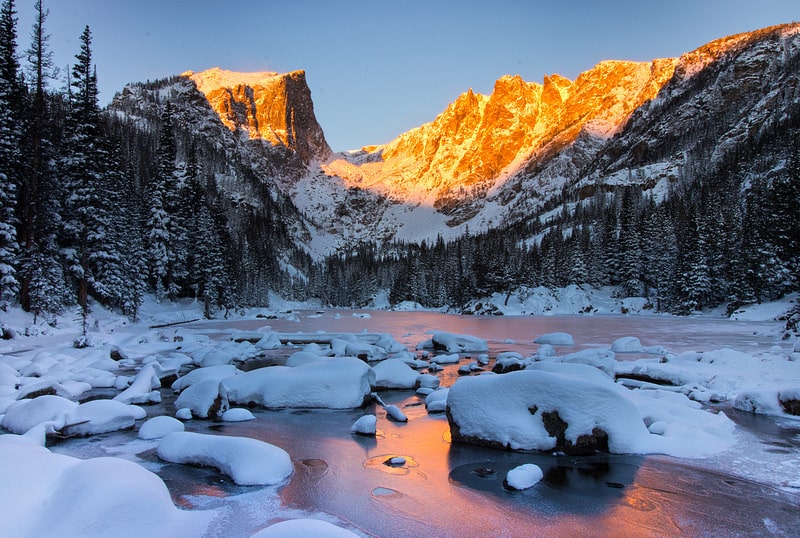
Sony Landscape Lenses

Sony Wildlife Lenses

Sony Portrait Lenses
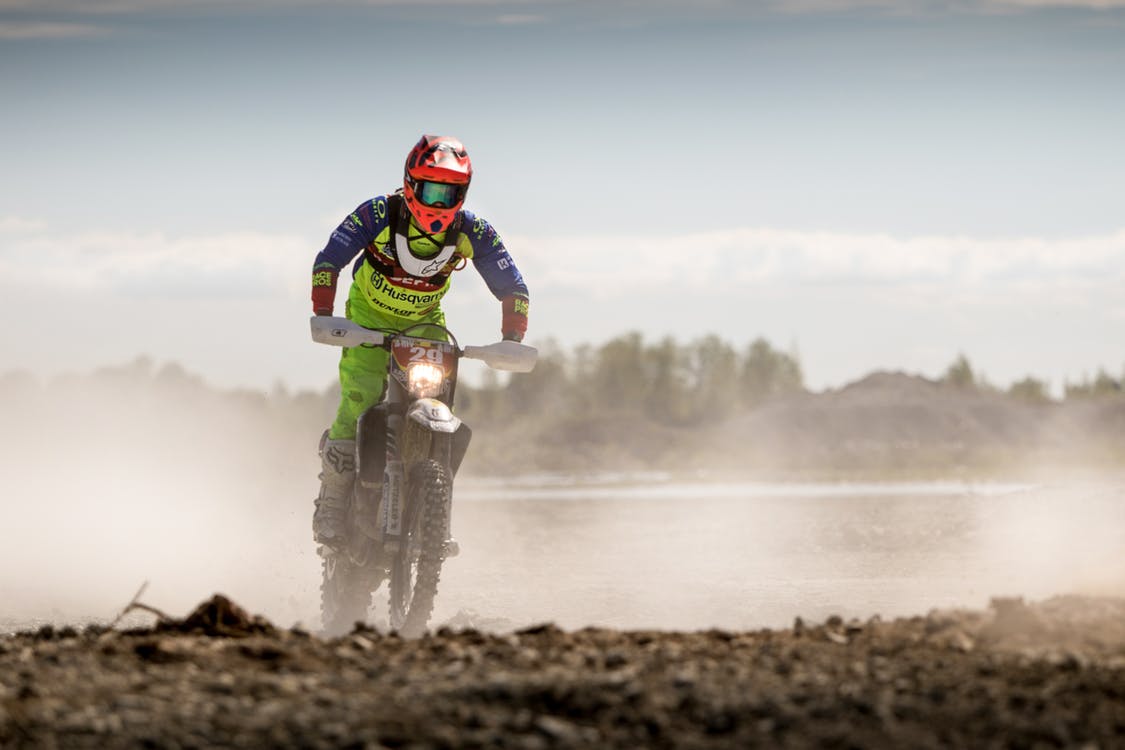
Sony Sports Lenses
First and foremost, I’m a husband and father. Then professionally I’m photographer, designer, blogger, and Esty store owner. My homebase is near the stunning Wasatch mountains in Utah but I love traveling with my family as part of our homeschooling journey. I also love teaching and helping out others. My faith is one of the biggest aspects of my life and brings be a consistent joy that I haven’t found in anything else. My main blog is BestPhotographyGear.com and I strive to make photography simple for anyone looking to learn or find gear for their individual needs. By nature, I like to study, research, and analyze things and I use that help provide the best advice and reviews I can.
Get Help Don’t search for hours, just ASK US!
© 2016 - 2021 - Best Photography Gear All Rights Reserved.
- Student Successes
- My Learning
14 Best Travel Lenses in 2024 (Prime and Zoom)

You can also select your interests for free access to our premium training:
Having the best travel lens is a surefire way to improve your travel photography. But what should you consider when looking for a lens for travel photography? You need to think about size and weight. You want a focal length that gives you good shot variety. And, of course, you want excellent image quality.
The Nikon AF-S DX 18-105mm f/3.5-5.6 is our favorite travel lens. It’s lightweight and compact for a zoom lens. It has a vibration reduction system for sharper images and better low-light performance. And it’s one of Nikon’s most affordable zoom lenses. Keep reading to see the best travel lenses for Nikon, Sony, Fujifilm, and Olympus cameras.
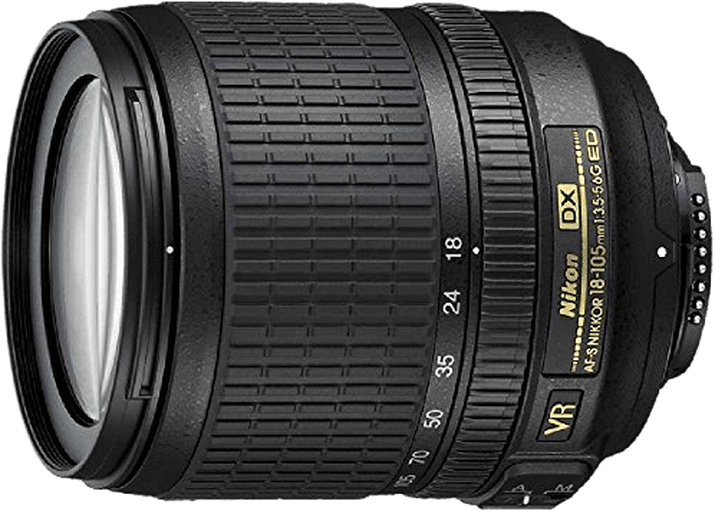
If you buy a product through one of our referral links we will earn a commission (without costing you anything). Prices last updated on .
As an Amazon Associate, I earn from qualifying purchases. Product prices and availability are accurate as of the date/time indicated and are subject to change. Any price and availability information displayed on Amazon at the time of purchase will apply to the purchase of this product.
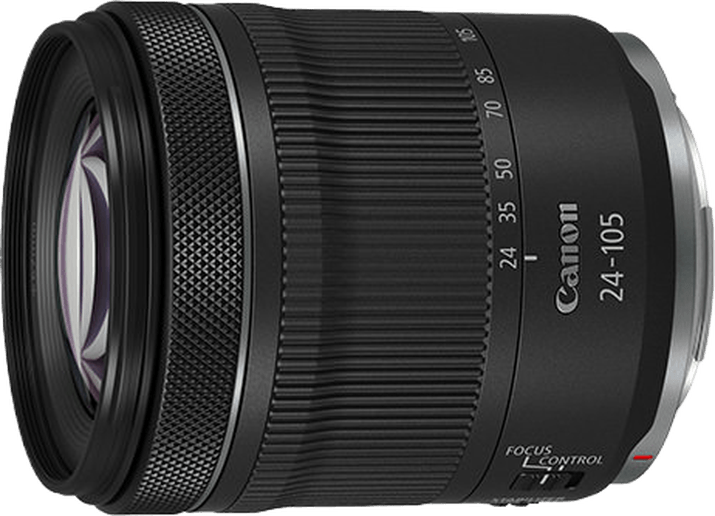
What Is the Best Travel Lens?
The best travel lens has to be versatile. That’s why we’ve chosen lenses that give you excellent shot variety. Zoom lenses give you more flexibility as a photographer. But we’ve also included fantastic prime lenses that you can use for a variety of different travel shots.
So, deciding whether you want a prime or zoom lens is best. We’ve split our list into two sections. The first section looks at the best zoom lenses. And the second section has all the best prime lenses for travel.
Size and weight are important elements in a travel lens. You don’t want a chunky lens that takes up too much space in your travel camera bag . That’s why we don’t have telephoto or super-telephoto lenses on this list. They are big, heavy, and expensive.
Navigate the article using the links below to find the best travel lens. You can skip to the FAQ section if you need more information on lenses for travel photography.
Photographers with the travel bug should also check out our travel photography eBook . It’s a comprehensive guide to travel photography.
Best Zoom Travel Lenses
Best prime travel lenses, faqs about the best travel lenses.
Zoom lenses are great for travel photography. They tend to be bigger, heavier, and more expensive than prime lenses. But they give you more versatility and flexibility. A good zoom lens can do the job of two or three prime lenses. That’s why you should consider a zoom when looking for the best travel lens.
- Compact, versatile, and ideal for various shooting situations
- 5.8x zoom and VR image stabilization
- Vibration Reduction allows handheld shooting
- Aspherical element, coating for improved integrity and color
- Versatile zoom range of 24-105mm
- Maximum magnification of 0.5x and minimum focusing distance of 131mm in center focus macro
- Optical image stabilization with up to 5 stops of shake correction
- Control ring for quick setting changes

- Compact, lightweight, and affordable
- Aspherical and ED elements for sharp and clear image quality
- Custom control ring for improved usability
- Silent aperture and no focus breathing enhance video quality

- Ultra-thin and ultra-portable electric zoom lens
- Close focusing down to 200mm
- 3x zoom range covers landscapes to portraits
- Remote control and optional auto closing lens cap

- Two ED glass elements and three aspherical elements for high resolution and contrast
- 6x zoom range with a constant f/4 aperture
- Circular aperture blades for enhanced bokeh effect
- ED and Super ED glass reduces chromatic aberration and AA elements improve image accuracy

- 24-70mm zoom range, ideal for various types of photography
- 2 aspherical elements and UD glass element for superior optics
- USM AF actuator for fast and accurate autofocus
- Sealed and gasketed against dust and moisture with 1-year warranty
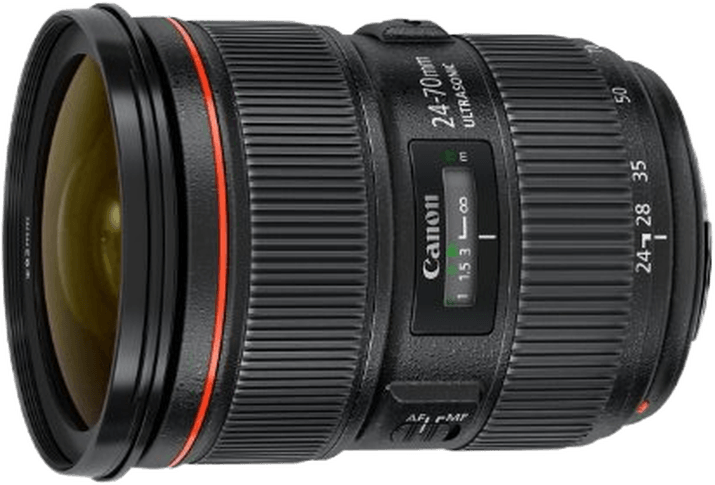
- 14 elements in 10 groups
- F2.8-4.0 OIS lens (27-84mm equivalent)
- 7-blade rounded diaphragm opening
- 600mm to infinity focus range

1. Nikon AF-S DX 18-105mm f/3.5-5.6
The AF-S DX 18-105mm f/3.5-5.6 is a versatile zoom lens from Nikon. It has a wide focal length range. It has an optical stabilization system built in. And it’s compact and lightweight. That’s why it’s the best travel lens if you want a zoom lens.
The 18-105mm focal range gives you plenty of shot versatility. The minimum length of 18mm gives you beautiful wide-angle shots. It’s perfect for landscapes and cityscapes. And it lets you take pictures in tight interior spaces.
The 105mm end gives you excellent magnification. You can get closer to your subjects without moving. And it gives you a tighter framing. That’s good for intimate portraits and detailed close-ups.
The max aperture is limited to f/5.6 when using the 105mm range. That’s not ideal. But the lens compensates for the slow aperture with Nikon’s vibration reduction system. This optical stabilizer counteracts camera shake . And this lets you shoot with a slower shutter speed while avoiding motion blur .
The optical quality is great throughout the zoom range. Zoom lenses often suffer from distortion. But the glass’s Nikon Super Integrated Coating (SIC) reduces all types of distortion. That prevents lens flare, which is helpful if traveling in a sunny country.
If you’re traveling with a Nikon DSLR , the Nikon AF-S DX 18-105mm f/3.5-5.6 is the perfect travel lens. It’s lightweight and compact for a zoom lens. It’s versatile and delivers on image quality. And it has excellent low-light performance.
2. Canon RF 24-105mm f/4-7.1 STM
If you’re traveling with an R Series Canon camera , the RF 24-105mm f/4-7.1 is the zoom lens for you. The wide focal length range gives you lots of shot options. And the stabilization system gives you even more flexibility as a travel photographer.
The lens is compact for a zoom lens with such a large range. But despite being compact, there is no compromise on quality. The build quality is excellent. And the optical performance is outstanding from 24 to 105mm.
The max aperture of f/4 isn’t great. But the built-in optical image stabilization does give you more exposure freedom. It reduces camera shake. So you can shoot with slower shutter speeds. That means you get better low-light performance. And you get sharper images more consistently.
The wide zoom range allows for many types of photography. You can shoot everything from real-estate interiors to close-cut portraits. That’s why the Canon RF 24-105mm f/4-7.1 is the best travel lens for Canon mirrorless cameras .
3. Nikon NIKKOR Z 24-50mm f/4-6.3
The Z 24-50mm f/4-6.3 is the perfect lens for traveling with a Nikon mirrorless camera. Nikon’s range of Z-mount lenses is growing all the time. And we’ve selected this all-round option as the best Z lens for travel.
You get good versatility with a 24-50mm focal length range. The 24mm end gives you a lovely wide angle with a fast aperture. The 50mm end does lose a stop of aperture. But it still gives you a good focal length for street photography and environmental portraits.
Despite its compact size, the barrel is packed with top-quality glass. It holds three aspherical elements, which reduce chromatic aberration. And it has two Extra-low Dispersion elements for sharper, glare-free images.
It’s also a great option for travel vlogs and videography. The wide 24mm focal length is perfect for vlogs where you’re talking to the camera. And the lens suffers from very little focus breathing . That means you won’t have to recompose your shot every time you refocus.
The aperture is also near-silent. That means there’s no unwanted clicking sound that audio equipment can pick up.
The lens’s 13.7-inch (35 cm) minimum focus distance enhances its versatility. It allows for detailed close-ups, a bonus when shooting travel photography.
The Nikon NIKKOR Z 24-50mm f/4-6.3 is versatile and affordable. The optical quality is fantastic. And it barely takes up any space in your camera travel backpack.
4. Olympus ED 14-42mm f/3.5-5.6
The ED 14-42mm f/3.5-5.6 is the best zoom lens for Olympus camera users. Travel photographers will love the slim pancake lens design. And despite the small size, it still gives you a 3x zoom range. It’s an affordable lens Olympus shooters can take anywhere.
The 14-42mm range is equivalent to 28-84mm on a full-frame camera . This gives you excellent shooting angles for travel photography. It doesn’t give you the highest level of magnification. But you get a wide variety of shots. And the image quality is excellent throughout the zoom range.
The glass has the Zuiko Extra-low Reflective Optical coating. This eliminates lens flare when you have an in-frame light source. This is handy in direct sunlight and indoors with strong lights.
The Olympus ED 14-42mm f/3.5-5.6 is one of the most compact zoom lenses you can get for a Micro Four Thirds camera . It’s the perfect fit for your travel bag. And it delivers on quality and versatility.
5. Sony E 18-105mm f/4 G
The E 18-105mm f/4 G is the perfect travel buddy for your Sony camera. It’s compatible with all Sony APS-C mirrorless cameras . That includes the popular Sony a6600 . It’s a high-quality lens that’s ideal for travel photography.
The 18-105mm range lets you shoot different types of photography without changing lenses. The 18mm end gives you incredibly wide angles. You can shoot tight streets or architectural interiors. It’s also great for epic landscapes.
The other end gives you magnification for distant subjects. And it gives you a tighter composition for intimate portraits. It also lets you capture detailed close-ups. It’s also great if you’re a travel food photographer or blogger.
This Sony lens has the Optical Steady Shot system. It’s an optical image stabilizer that gives you sharper images. It also allows for better low-light photography by reducing camera shake. But you also get a constant f/4 aperture throughout the zoom range. That makes it one of the best low-light lenses on the list.
The lens also has internal focusing elements. This means the lens doesn’t change size as you zoom in and out. The dimensions remain the same.
The Sony E 18-105mm f/4 G is one of the most expensive lenses on our list. But it’s a beautiful piece of equipment. You won’t need any other lenses when traveling with this one. And it gives you unrivaled performance in low light.
6. Canon EF 24-70mm f/2.8L USM
The Canon EF 24-70mm f/2.8L is a professional quality lens. It has a professional price tag. But it’s a high-quality lens with outstanding features. You can shoot many types of photos with this lens. And it’s perfect for a photographer traveling with a Canon camera .
The 24-70mm focal length isn’t the widest zoom range. But it still gives you plenty to play with. The 24mm end lets you shoot wide shots in tight spaces. And the 70mm end is good for close-ups and portraits.
The max aperture is one of the top selling points for this lens. It gives you a fast aperture of f/2.8 throughout the focal length range. That means you get complete control of your exposure settings. And you can work in low-light conditions. That helps you shoot concerts, night markets, and sunsets.
This Canon lens uses its superior USM autofocus motor. It’s smooth, fast, and barely makes any noise. You also have a focus ring. And the full-time focus system lets you override the AF at any time. Turn the ring, and you get manual focusing.
The glass quality is exceptional. Canon uses a combination of fluorite elements and ultra-low dispersion glass. And the results are crystal-clear, distortion-free images. The Canon EF 24-70mm f/2.8L will deliver outstanding travel photography results.
7. Fujifilm XF 18-55mm f/2.8-4R
The XF 18-55mm f/2.8-4R is the best travel zoom lens from Fujifilm . It has a decent zoom range for different types of shots. It has excellent glass quality. And it is compatible with all Fujifilm X Series cameras.
The 18-55mm range lets you shoot wide-angle and standard-angle shots. You can take pictures of the glorious architecture you find in exotic locations. You can capture fantastic interior shots. And you can snap close-ups, portraits, and environmental portraits.
The f/2.8 max aperture gives you good exposure control. But this is limited to f/4 when you’re at the max zoom length. Also, the rounded aperture diaphragm helps you achieve a lovely background bokeh .
The optical quality is excellent. You get corner-to-corner sharpness throughout the zoom range. And the lens has excellent build quality. If you have a Fujifilm camera , the Fujifilm XF 18-55mm f/2.8-4R belongs in your travel bag.
This section looks at the best prime lenses for travel photography. Prime lenses give sharp images without distortion. And they are usually smaller and lighter than zoom lenses. That’s why many travel photographers use prime lenses.
The table below shows a quick rundown of the best prime lenses for travel photographers . Then, we look at each travel lens in more detail afterward.
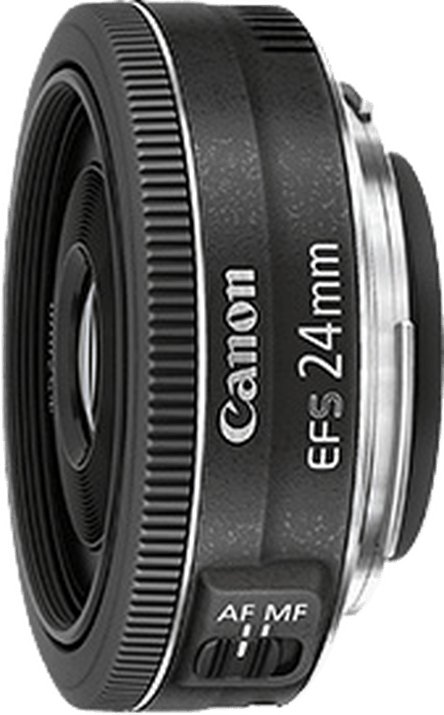
- Ultra-compact pancake lens design
- 38mm-equivalent focal length for a wide shot variety
- Compatible with Canon APS-C DSLR cameras
- 7-blade circular aperture diaphragm for soft backgrounds

- Compact and lightweight design
- Fast f/1.8 aperture for low light and bokeh photography
- The SWM gives you quiet AF operation
- Approximates the human eye view
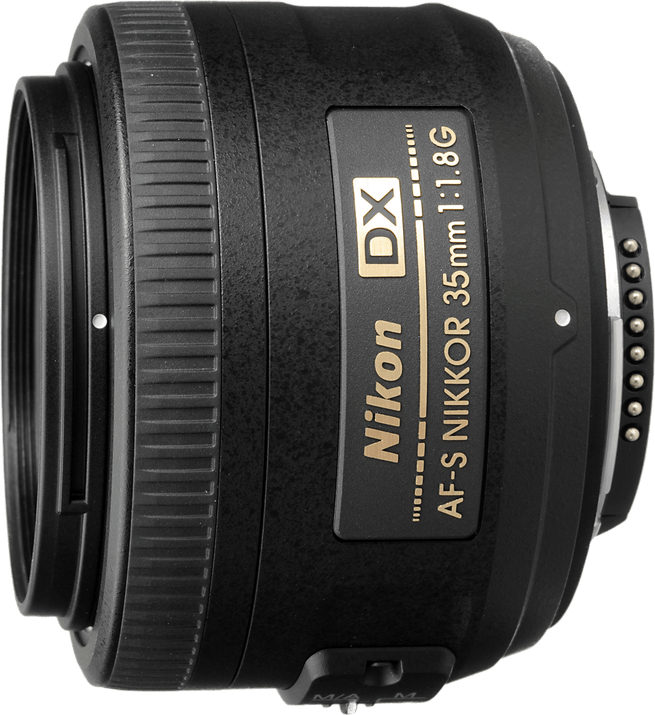
- Compact, lightweight design for easy portability
- Fixed 50mm focal length for creative composition
- F/1.8 aperture for low-light photography and bokeh
- STM motor for smooth, quiet AF and direct setting changes

- High-speed normal lens with great performance in any light
- Autofocus system compatible with select Nikon DSLRs
- Lightweight and compact design ideal for travel photography
- Maximum angle of view (FX-format) is 46° and stops down to f/22
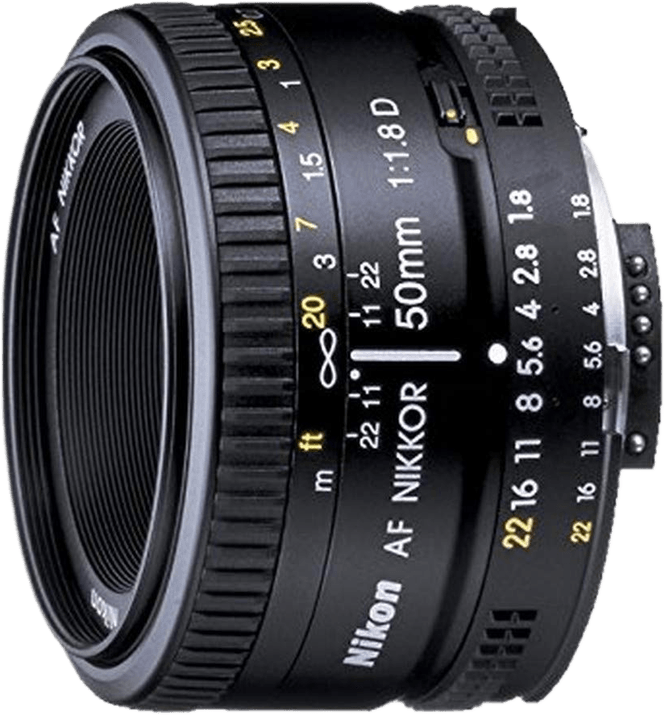
- Bright f/1.8 maximum aperture for stunning bokeh effects
- Compact and lightweight design for ease of travel
- Aspherical element for improved image quality
- Double-gauss configuration suppresses distortion and curvature
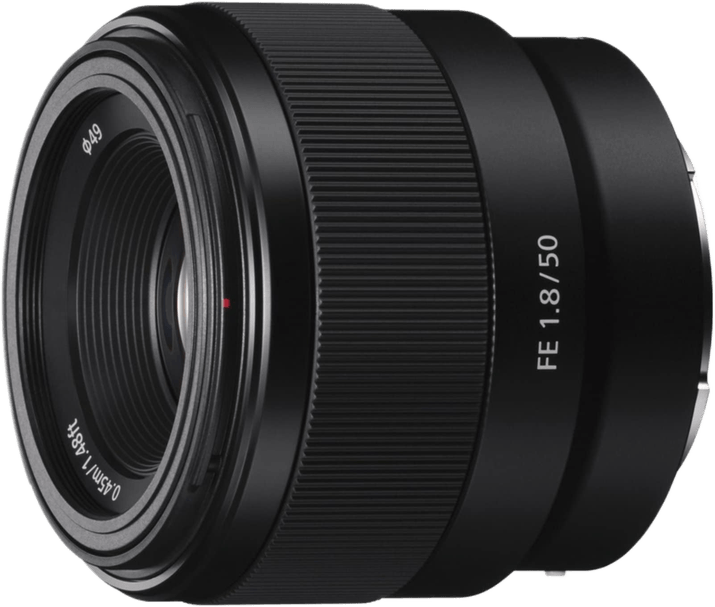
- Glass-Molded Aspheric Lens minimizes spherical aberration
- Creates beautiful bokeh and excellent in-focus reproduction
- Standard focal length with angle of view similar to the human eye
- Bright maximum aperture is perfect for snapshots

- Ultra-wide-angle, fast f/2.0 aperture
- Great for low-light shooting, street shots, and landscapes
- Premium metallic construction and snap focus ring
- 1024mm equivalent field of view and 200mm min focusing distance

1. Canon EF-S 24mm f/2.8 STM
The Canon EF-S 24mm f/2.8 is the best travel lens for Canon users. Its pancake design makes it ultra-compact and lightweight. You won’t have a problem finding space in your camera backpack. It can even fit in your pocket. But we don’t recommend carrying it like that.
The lens is compatible with Canon APS-C DSLR cameras. And the 24mm focal length is equivalent to 38mm on a full-frame camera. That gives you a nice shooting angle for travel photography.
The viewing angle is similar to that of a human eye. That lets you compose shots before you’ve even got the camera to your face. It gives you a wider angle than a 50mm lens . And that helps when shooting down narrow streets in Europe or Asia. That also makes it a great lens for landscape photography .
The f/2.8 max aperture is fast enough for most situations. It lets in plenty of light. So you can get lovely travel shots during the day. It also allows for a shallow depth of field when shooting close-ups. The circular seven-blade aperture also increases the bokeh effect.
The Canon EF-S 24mm f/2.8 is the perfect lens for travel photographers. You can use it for a wide range of travel shots. It couldn’t be much more compact. And any travel photographer can afford it.
2. Nikon AF-S DX 35mm f/1.8
The AF-S DX 35mm f/1.8 is the best travel lens for Nikon users. It’s a small and lightweight Nikon prime lens . It has precision optics for sharp and clear image quality. And it’s one of the most affordable Nikon lenses right now.
It’s compatible with Nikon APS-C DSLR cameras. And the 35mm focal length is perfect for travel photography. You can take street shots in the world’s most beautiful cities. You can capture stunning landscapes. And it’s great for environmental portraits.
This travel lens uses Nikon’s Silent Wave Motor (SWM) to power the autofocus. It’s fast and responsive. And it gives you near-silent focusing. That means you won’t disturb the world around you as you travel with your camera.
The f/1.8 max aperture is excellent for travel photography. It gives you excellent flexibility with your exposure controls. It helps you shoot in low-light situations. And you can achieve a lovely bokeh background. The circular aperture diaphragm also helps this.
Whether you have a Nikon D3500 or D500 , the Nikon AF-S DX 35mm f/1.8 is the perfect travel companion. It’s lightweight, compact, and affordable. It also produces excellent images time after time.
3. Canon RF 50mm f/1.8 STM
The Canon RF 50mm f/1.8 is a superb lens for travel photographers. It has a sleek design with a sharp 50mm focal length. And it’s compatible with Canon mirrorless cameras. It’s the perfect nifty-fifty for anyone traveling with a Canon mirrorless camera.
The 50mm focal length is a popular choice to pair with a street photography camera . It lets you snap candid shots as you roam new and exciting locations.
You can also shoot stunning landscapes when exploring the country. And it’s a good option for portraits and environmental portraits. The versatility means you can travel with fewer lenses in your travel bag.
The f/1.8 max aperture increases the versatility even more. It lets you shoot in low-light situations. And it gives you excellent depth-of-field options. You can achieve a soft bokeh effect in portraits and close-ups.
The optical quality of the Canon RF 50mm f/1.8 is fantastic. It gives you edge-to-edge sharpness. And the glass has a special coating that reduces flare and ghosting. It’s lightweight and compact. And it’s an absolute bargain for a mirrorless camera lens.
4. Nikon AF FX 50mm f/1.8
The Nikon AF FX 50mm f/1.8 is the best travel lens if you have a Nikon full-frame camera. It’s ideal if you’re traveling light. It’s a compact and lightweight nifty-fifty lens. And it gives you plenty of shot variety for exciting travel photography.
It’s compatible with Nikon full-frame DSLRs. But you can also use it with APS-C DSLRs. But the crop factor does give you an effective focal length of 75mm. That gives you more magnification and a tighter field of view. That’s good for tighter portraits and close-ups.
With an f/1.8 aperture, you can shoot in low-light situations. You can capture images at dawn and dusk. And you can shoot the interiors of famous buildings. The lens also has a manual aperture ring that you can use when shooting in Live View. That’s like shooting with classic 35mm film cameras .
Nikon lens quality is well-trusted in the photography community. And the Nikon AF FX 50mm f/1.8 is the perfect example of why. The glass elements give you pristine image quality. And you will experience very little distortion. It’s also an absolute bargain. Nikon users need this lens before their next voyage.
5. Sony FE 50mm f/1.8
The Sony FE 50mm f/1.8 is ideal for traveling with a Sony camera . It’s lightweight and compact. The 50mm focal length gives you plenty of shot options for your travel photography. And it’s an affordable Sony lens with fantastic optical quality.
This lens is compatible with all Sony mirrorless cameras. The FE mount means it fits naturally with Sony full-frame cameras. But it’s also compatible with Sony crop sensor cameras. The crop factor transforms it into a 75mm lens. While that isn’t ideal for street photography, it is a good product, food, and portrait lens .
The f/1.8 aperture gives you excellent exposure control. You can shoot outdoors and indoors. And you have complete control over depth of field. The seven-blade circular aperture diaphragm also helps achieve a smooth background bokeh effect.
The lens has a double-gauss configuration. This suppresses field curvature and distortion . That means you can expect clear and sharp images in all conditions. The autofocus is driven by Sony’s DC motor. It’s responsive and quiet in operation.
The FE 50mm f/1.8 is a must-have for Sony users. And that’s especially true if you suffer from wanderlust. You’ll have no trouble fitting it in your travel bag. And it won’t add much to your travel costs, leaving you more money to indulge in the local culture.
6. Fujifilm XF 35mm f/1.4
The Fujifilm XF 35mm f/1.4 is the best travel lens for Fujifilm users. It’s a compact and lightweight prime lens for Fujifilm mirrorless cameras. Precision glass engineering results in sharp and clear image quality. And it’s a versatile lens that gives you plenty of travel photography options.
The 35mm focal length gives you a nice wide angle. It helps you get wider shots, ideal for capturing natural and urban landscapes. It’s perfect for street travel photography. And it can capture more detailed shots like environmental portraits.
The fast f/1.4 max aperture is a big bonus for travel photographers. It gives you more shooting options in low-light conditions. And you can achieve a smooth and rich background bokeh. The seven-blade rounded aperture also helps this. You can bring a new level of artistry to your travel photography.
This Fujifilm XF lens is one of the pricier options on the list. But the eight-element construction is superb. And the fast max aperture gives you unrivaled exposure control. Undoubtedly, the XF 35mm f/1.4 is the best Fujifilm lens for travel photographers.
7. Olympus ED 12mm f/2.0
The Olympus ED 12mm f/2.0 is the perfect travel lens for Olympus photographers. It’s compatible with all the best Olympus cameras. It has incredible optical quality. And it’s ultra-compact and lightweight.
At first glance, the 12mm focal length might seem too wide for travel photography. But there is a considerable crop factor when you use a Micro Four Thirds camera. That means the 12mm focal length is equivalent to 25mm on a full-frame camera .
The 25mm-equivalent focal length gives you a lovely viewing angle for stunning landscapes, colorful cityscapes, and street shots. It’s also ideal for architecture and interior photography.
The f/2 max aperture isn’t as fast as other lenses on our list. But it still gives you good control over your exposure settings. The lens has a solid, all-metal construction. And it has a snap-focus ring. This lets you override the AF for manual focusing.
The Olympus ED 12mm f/2.0 is so small it fits in your pocket. We don’t recommend traveling with lenses in your pocket. But this lens won’t be inconvenient when packing your bag. It’s the best travel lens for Olympus cameras. See our full list of the best Olympus lenses for Olympus photographers.
We’ve answered some of the most frequently asked questions about travel lenses. This section gives you more information. You can make a confident purchase when you find the best travel lens for your photography.
Prime vs Zoom: Which Is the Best Travel Lens?
Prime and zoom lenses can be used for travel photography . They both have pros and cons, so it’s about deciding which is Best for you.
Prime Lenses
The benefits are their compact size, light weight, and superior image quality. Prime lenses have fewer glass elements than zooms. That means they tend to be smaller and weigh less. That makes them easy to carry in your bag.
Prime lenses also have better image quality. You experience less distortion and chromatic aberration . And they suffer less from lens flare when shooting in direct light.
Zoom Lenses
The main positive is the extra versatility. They have a changeable focal length. This lets you zoom in and out. You can shoot distant subjects. And you can get a tighter composition without having to move.
The main problem is the extra weight and size. They use more glass elements, making them bigger and heavier than primes. But the added versatility means one zoom can do the job of several prime lenses. That means your camera backpack might weigh less overall.
What Is the Best Focal Length for a Travel Lens?
For a prime lens, 35mm or 50mm are both excellent choices for travel. These are popular focal lengths for street photographers. And travel photography is similar to street shooting in many ways.
A 50mm lens gives you a tighter viewing angle. That makes it a better option for close-ups and portraits. The 35mm focal length gives you a wider angle. It is great for narrow streets and restricted interiors. It’s also great for landscapes, cityscapes, and environmental portraits.
When it comes to zoom lenses , you want a zoom range from wide to standard. Or you might prefer a standard-to-telephoto range. Something like 18-105mm is perfect. This gives you a wide shot selection. You can shoot anything from architecture to portraits with the same lens.
You don’t need a super-telephoto zoom lens. These are big and heavy, which makes traveling difficult. And you don’t need the super-telephoto reach. You’ll have incredible magnification. But you won’t be able to capture nearby subjects.
How Much Should I Spend on a Travel Lens?
Traveling with photography equipment can be nerve-wracking. Camera gear is fragile. And there’s always a chance things could get lost or stolen. That means travelers don’t always want to take their most expensive equipment. Many photographers like to travel with more budget-friendly lenses.
Professional travel photographers use expensive gear. But they make sure everything is insured. They also have more expensive traveling equipment, like camera hard cases .
We’ve taken this into account when compiling our list. Many of the travel lenses we’ve included are affordable for all photographers. Of course, you still don’t want to get robbed. But you’ll be able to sleep easier if it’s a low-cost option.
But don’t worry—there are no duds on this list. Every travel lens on our list is a fantastic option for adventurous photographers.
Conclusion: The Best Travel Lens
The best travel lens should fit your bag, give you a variety of shots, and deliver outstanding images. We believe all the lenses on this list deliver on those promises. And most of them have affordable price tags. We’ve also included a wide range of camera brands to choose from.
The Nikon AF-S DX 18-105mm f/3.5-5.6 tops our list as the best travel lens. It’s a compact zoom lens with a wide zoom range. The optical quality is excellent throughout. And it has built-in vibration reduction that gives you more exposure control. It’s the perfect lens for traveling with a Nikon APS-C DSLR camera.
Popular Content

- Accessories
- Camera Reviews
- Become a Photographer
- Photo Editing
- Photography 101
- Photography Tips
- Astrophotography
- Travel Photography
- Livestreaming & YouTube
- Video Cameras
- Video Lenses
- Video Monitors
- Video Lighting
- Streaming Accessories
- Videography
- Audio for Video
- Microphones
- Desktop & Laptop
- Console Gaming
- iPads & Tablets
- Televisions
- Camera News
- Adorama Business
- Adorama Rentals
- 800.223.2500

Travel Photography with the Sony a7C & Compact Prime Lenses
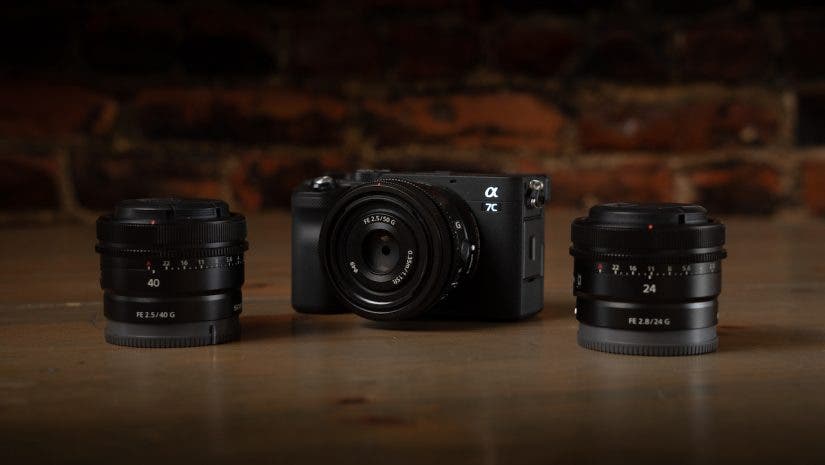
Even after visiting almost 40 different countries, travel photography is still my favorite thing in the world. Nothing makes me want to take out my camera more than being in a completely new environment. Up until now, I’ve rarely convinced myself to concentrate on video while traveling. Generally, shooting great video requires significantly more gear than photography so I find myself defaulting back to photography every time. However, when I received this full frame Sony Alpha 7C Digital Camera and set of full frame, 24mm, 40mm, and 50mm compact prime lenses, I decided to head to Portugal to see if this simple setup was up to the challenge of shooting great travel video.
Portugal is a country I have been dying to see for years. With its gorgeous cliff-lined beaches and historic cities, I figured a road trip through Portugal would be the perfect place to put this gear to the test.
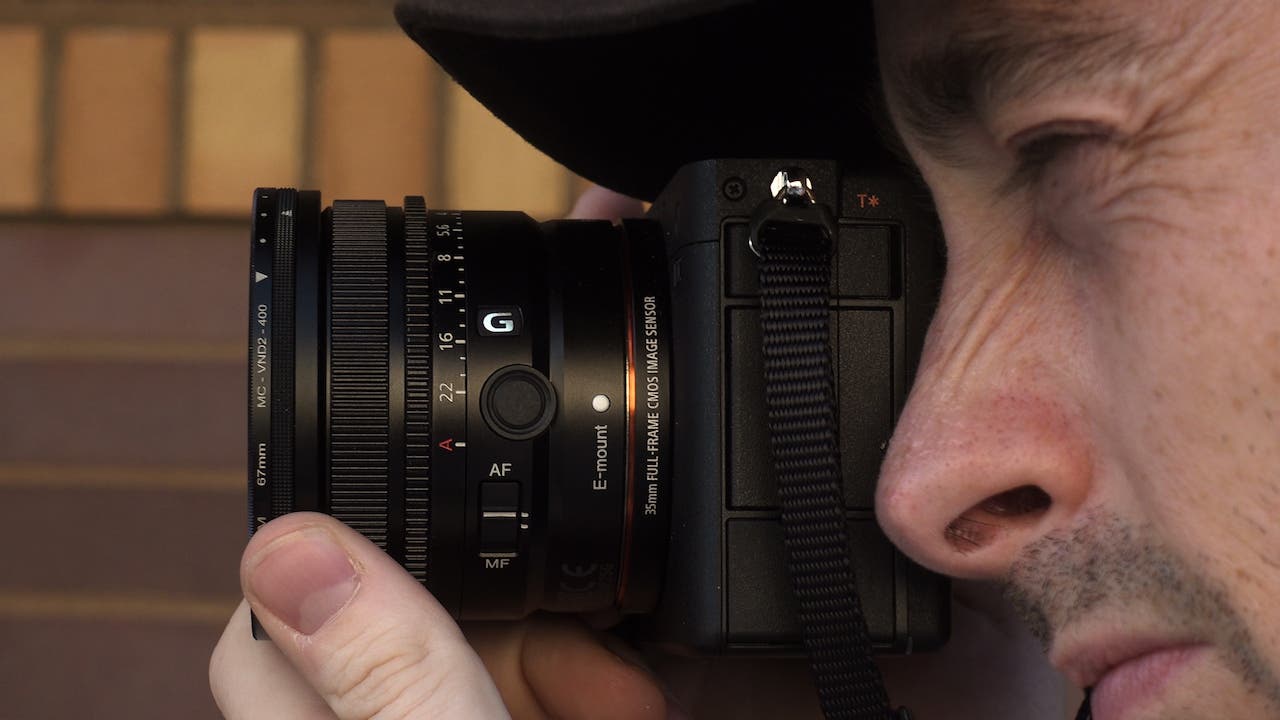
Form and Focus
First, let’s talk a little about the Sony a7C. The form factor took some getting used to compared to my A7R III . While it does have a full frame 24mp sensor, the body is much smaller and is more similar to the A6600 . Shooting handheld video on a lightweight camera is tough because light cameras are more subject to camera shake. Fortunately, the A7C’s 5-axis in-body sensor stabilization was able to compensate and deliver remarkably smooth handheld shots.
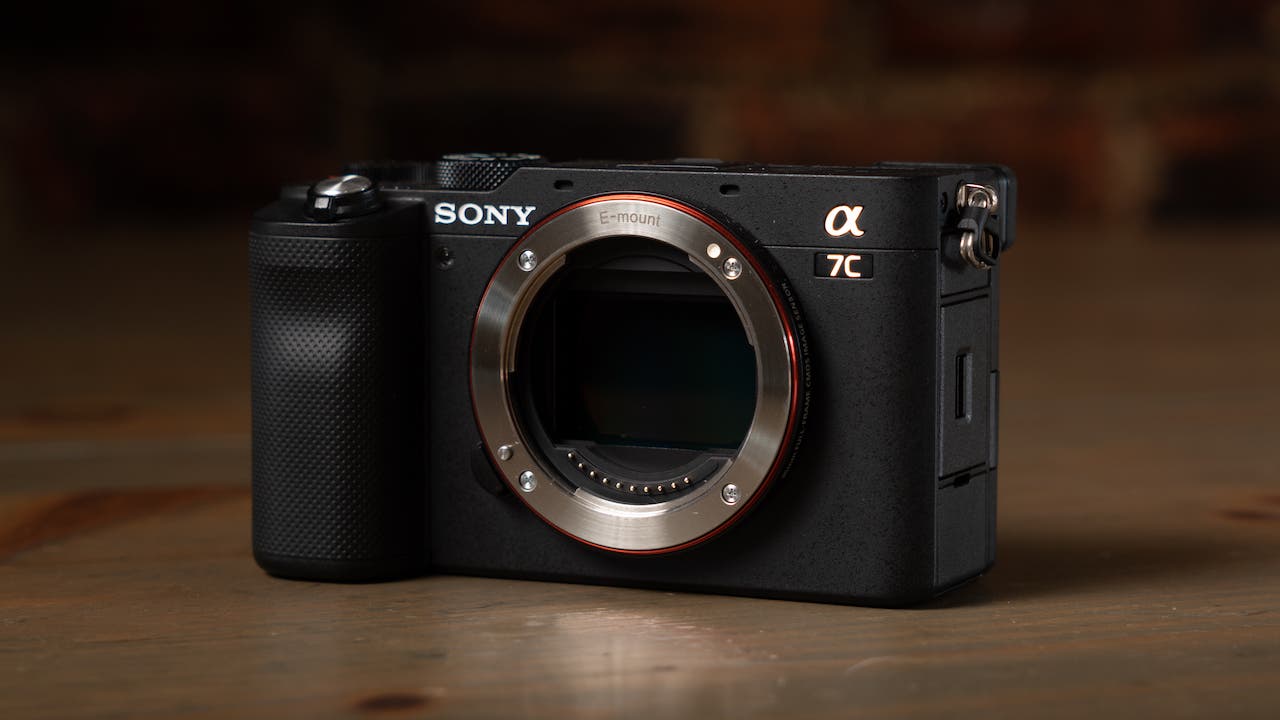
I also really liked the Sony a7C’s fully articulating touch screen monitor. The touch-to-focus function worked flawlessly. Even though I rarely use autofocus when shooting video, I found myself using this feature quite a bit. What really makes this camera a capable video shooter is its incredible autofocus tracking system. Sony has implemented an AI-based, realtime focus tracking into the Sony a7C. I was really impressed by how well it worked. Each time I test out a new camera, I try to evaluate the autofocus tracking by doing a slow push in on someone’s face. Whereas I find most cameras start to hunt for focus in this situation, the Sony a7C had no trouble tracking focus. You’d almost think I had an assistant on a wireless focus puller!
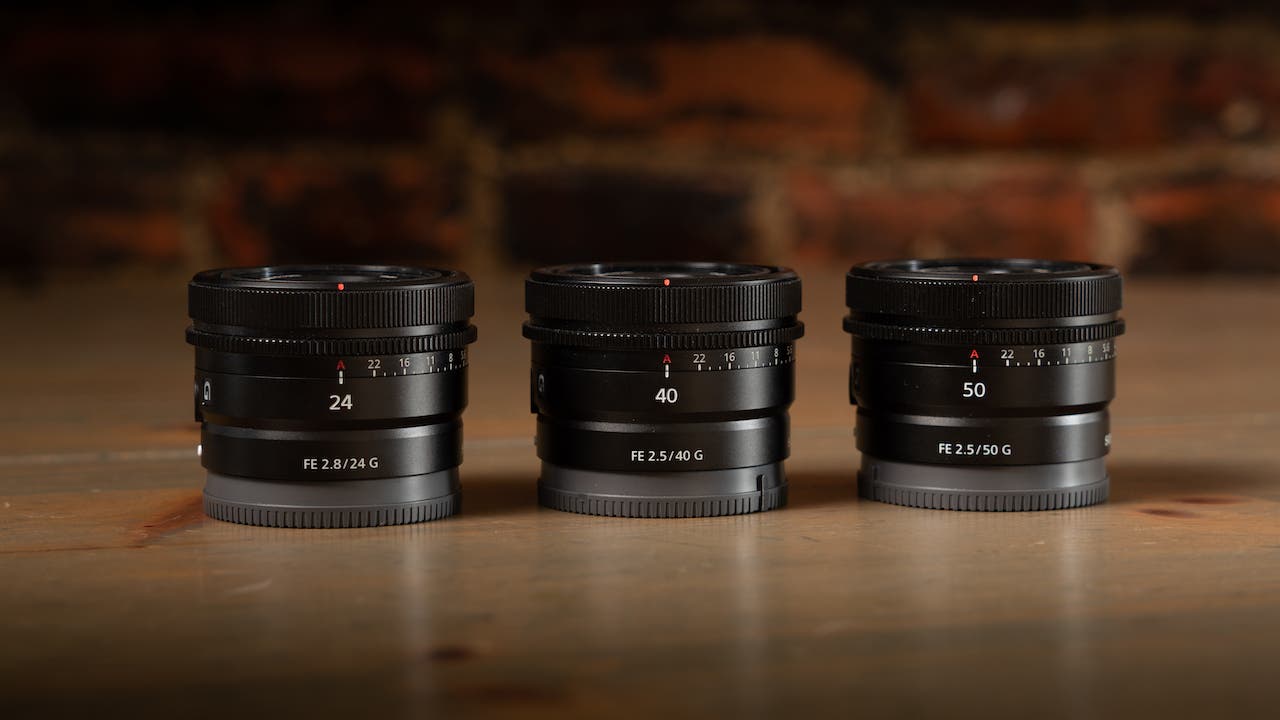
Although, what I really went on this trip to do was test out this set of 24mm, 40mm, and 50mm 2.8 Sony G primes. First thing to note is that these shouldn’t be confused with Sony’s G master primes. While these are optically and physically beautiful lenses, they aren’t quite on par with the G master series.
If you’ve read any of my reviews before, you’ll know I’m not a huge fan of the prime lens workflow when it comes to travel photography. Between carrying around the extra weight to missing shots by having the wrong focal length on the camera, I usually prefer a fast zoom for traveling. However, I was actually surprised to find out that these lenses make up for most of the issues I have shooting with primes. As they were designed with the travel photographer in mind, these lenses are tiny and super light. Even with their fully metal construction and 2.8 apertures, they manage to be around six grams each and small enough to fit in a fanny pack. This made swapping between lenses super easy as it didn’t require taking my backpack off each time.
Life was also made easier because all three enses had the same 49mm filter size. This was great because I didn’t need to carry around multiple ND filters or different-sized step-up rings for each lens.
With photography being so digital these days, I really appreciated the manual, external aperture rings on these G series primes. I’ve been shooting a lot of 35mm film lately. Having an external aperture control ring makes the transition between film and digital that much easier. Should you want to control your aperture in-camera though, just click the lens over to the A position.
Speaking of click, there’s also an aperture de-click switch. Normally with each different aperture setting, the ring clicks into place like it would on any old film lens. If you engage the de-click switch though, the ring rotates smoothly between aperture values. This is great for shooting video because it lets you select values in between the displayed numbers and allows you to fine-tune your exposure.
Finally, my favorite feature of these Sony prime lenses is that each one has an assignable button on the side. In the camera, you can map this to nearly any function. Personally, when I’m shooting with prime lenses, I program mine to toggle APSC mode. As I mentioned before, lack of focal length flexibility is one of my biggest issues when shooting with prime lenses. However, being able to toggle between APSC and full-frame mode means that you can effectively get two focal lengths out of each lens. You can vary your coverage of a scene every time you want to punch in for a detail shot without having to swap lenses.
Because of their light weight, manual aperture rings, assignable buttons, and beautiful image quality, I think these Sony prime lenses are an awesome choice for all sorts of photo and video work. They were certainly the perfect choice for running around Portugal!
Check out these photos by Cooper Naitove using the Sony a7C and compact prime lenses:
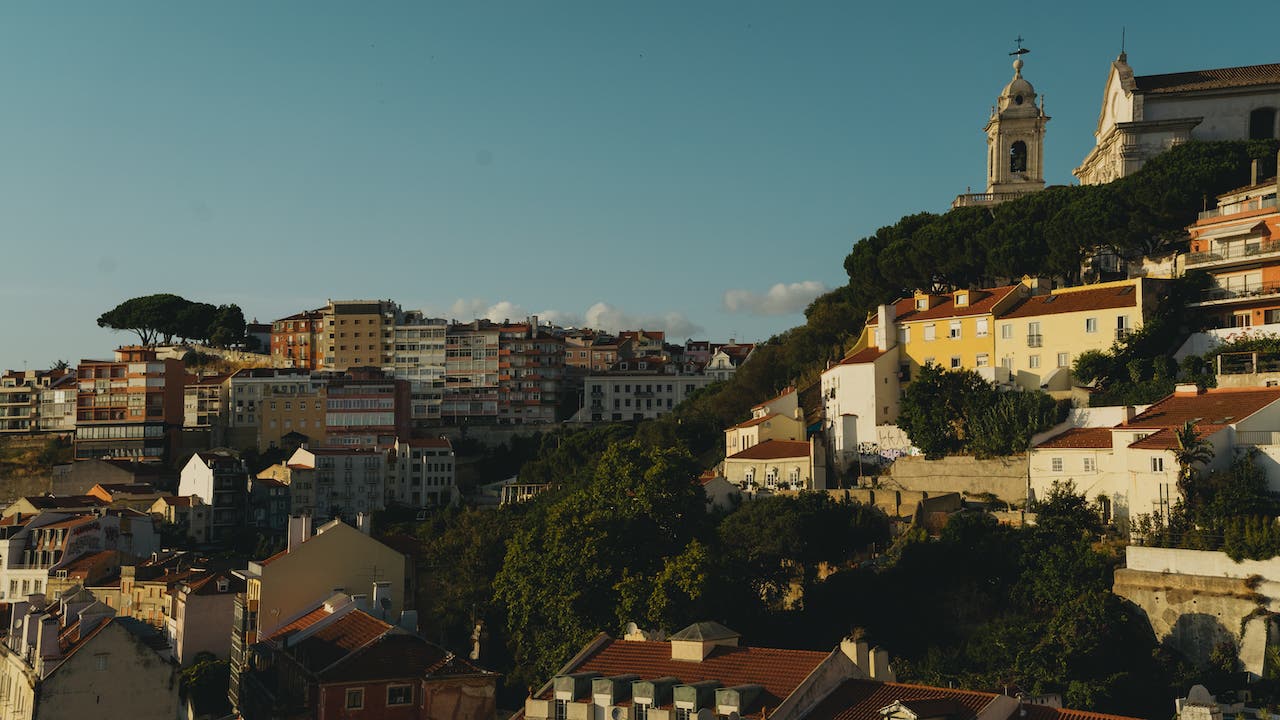
Cooper Naitove
You might also like.
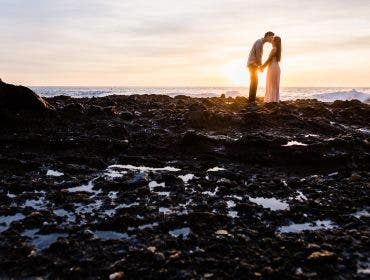
10 Engagement Photography Tips for Incredible Photos
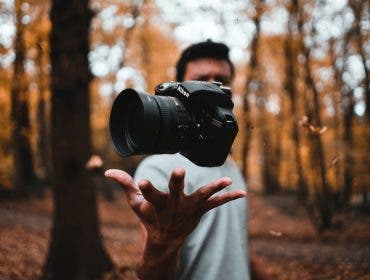
Photography for Beginners Guide
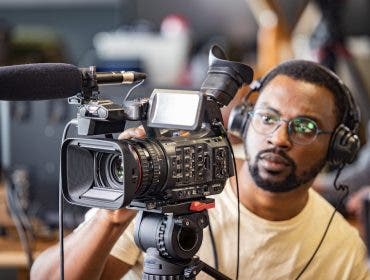
Canon Introduces the Compact and Powerful XF605 Camcorder
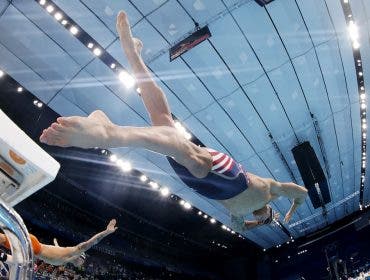
A Day in the Life of an Olympics Photographer

10 Great Sony FE (Full Frame) Lenses
An in-depth look at the best fe-mount lenses for sony’s full-frame mirrorless cameras from wide angle to telephoto.
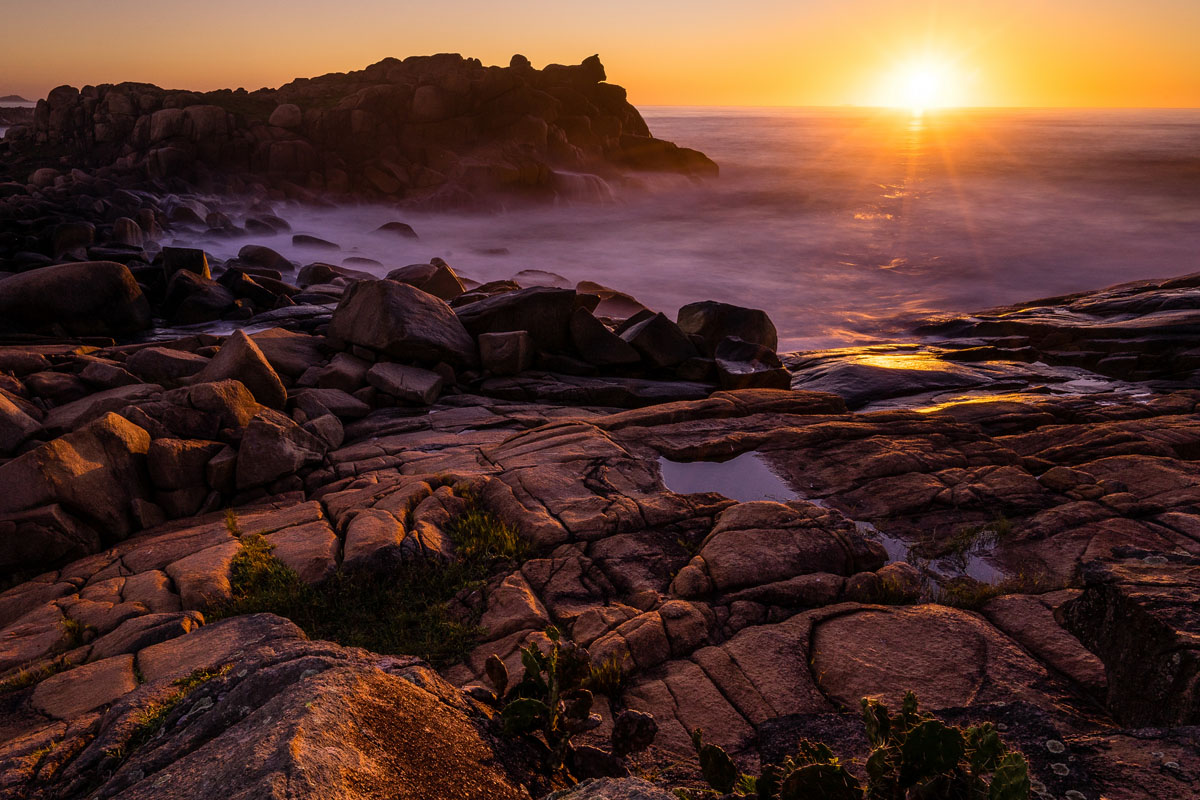
Sony 16-35mm f/4 ( Felipe Valduga )
We use affiliate links and may receive a small commission on purchases. Read more about us .
Sony’s full-frame mirrorless cameras have created a lot of buzz in the photography world. It’s true that the FE lens options for Sony still are more limited than the offerings for Canon and Nikon cameras, but the collection is growing and far more impressive in 2020 than even a year ago. Below we break down the best Sony FE (full frame) lenses, including zooms and primes from wide angle to telephoto. Given Sony’s strong relationship with Zeiss, there are plenty of high-end options that should make even the most discerning photographers happy. For more background information, see our Sony FE lens comparison table and buying advice below the picks.
1. Sony 24-70mm f/2.8 GM ($1,998)
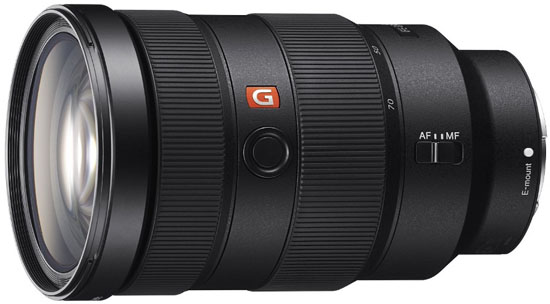
In terms of numbers, we generally make the professional cutoff at f/2.8. Lenses with this maximum aperture or faster are solid low light performers and can achieve the creamy bokeh that professionals love (most of Sony’s current GM zoom lenses are f/2.8 or faster, for example). Primes are the fastest type of lens, reaching f/1.4 for Sony FE, while some cheap zoom lenses have a maximum aperture of f/4 or slower. For those looking to try out astrophotography or any type of night shooting, lower numbers are a huge plus and it's not recommended to get anything slower than f/2.8. It’s worth noting that because Sony’s latest full-frame cameras have built-in image stabilization, camera shake will be less prevalent than with older models.
A handful of years ago, Sony released its first “GM,” or Grand Master, lenses, which are the premium full-frame zooms for Sony mirrorless. As of fall of 2020, there are ten GM lenses to choose from: the 16-35mm f/2.8 GM , 24mm f/1.4 GM, 24-70mm f/2.8 GM, 85mm f/1.4 GM, 100mm f/2.8 GM, 135mm f/2.8, 70-200mm f/2.8 GM, and 100-400mm f/4.5-5.6 GM, 400mm f/2.8 GM, and 600mm f/4 GM.
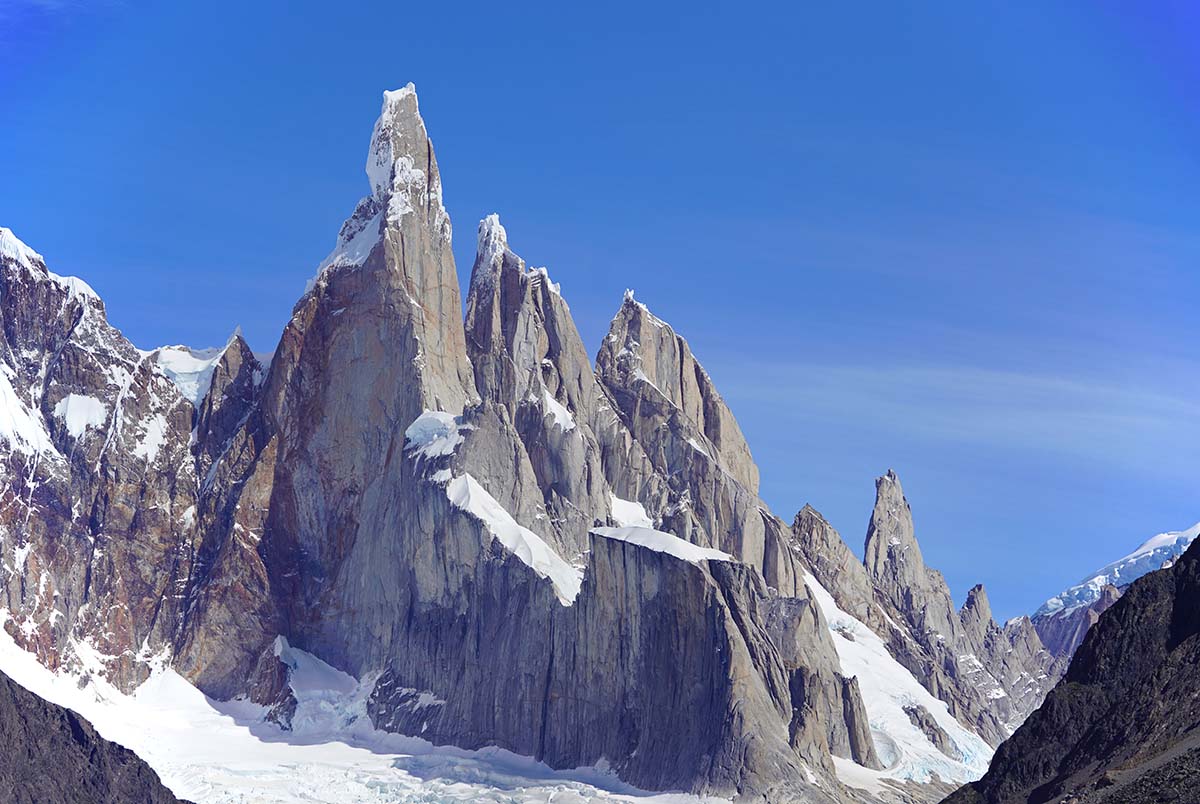
When buying lenses for your Sony full-frame camera, keep a close eye on the title and the blue Zeiss logo on the barrel. Lenses with both “Sony” and “Zeiss” in the title are co-branded, while lenses with “Batis” and “Loxia” are exclusively Zeiss. It’s also worth noting that Sony’s GM series of Grand Master lenses described above are not associated with Zeiss, although they are regarded as being some of the finest zoom lenses for the FE system.
Sigma's Growing FE Lens Presence
Third-party lenses abound for full-frame DSLRs, including from brands like Sigma and Tokina. For Sony's full-frame mirrorless cameras , Zeiss dominates the landscape and calling that "third-party" is stretching it a bit (the relationship between Sony and Zeiss is quite close). However, Sigma recently released Sony FE mount versions of many of their "Art" lenses (our favorite is the 85mm f/1.4 Art ) and plan to continue rolling more out. This development has caused quite a stir in the market due to their remarkable sharpness, low light capabilities, and competitive pricing.
With the introduction of the FE mounts, Sigma has eliminated the need for adapters that compromised performance—each lens has an autofocus drive control program that enables them to match the capabilities of the Sony bodies (in theory, at least). So far, there have been some complaints about the speed and accuracy of the autofocus in a few of the Art series lenses, but that likely will be mitigated by Sigma in future firmware updates. It's also worth noting that Sigma lenses generally are bulky and heavier than the field, but the cost savings and performance are what catches most people's attention.
At time of publishing, most of the Sigma lenses available for Sony are primes, including the 24mm f/1.4, 35mm f/1.4, 50mm f/1.4, 70mm f/2.8, 85mm f/1.4, and 135mm f/1.8. Given the Sigma options for Canon and Nikon full-frame cameras, we expect to see various zooms hit the market in the future. Regardless of whether you prefer Sony's more expensive native lenses or Sigma's cheaper third-party models, it's great to have more options.
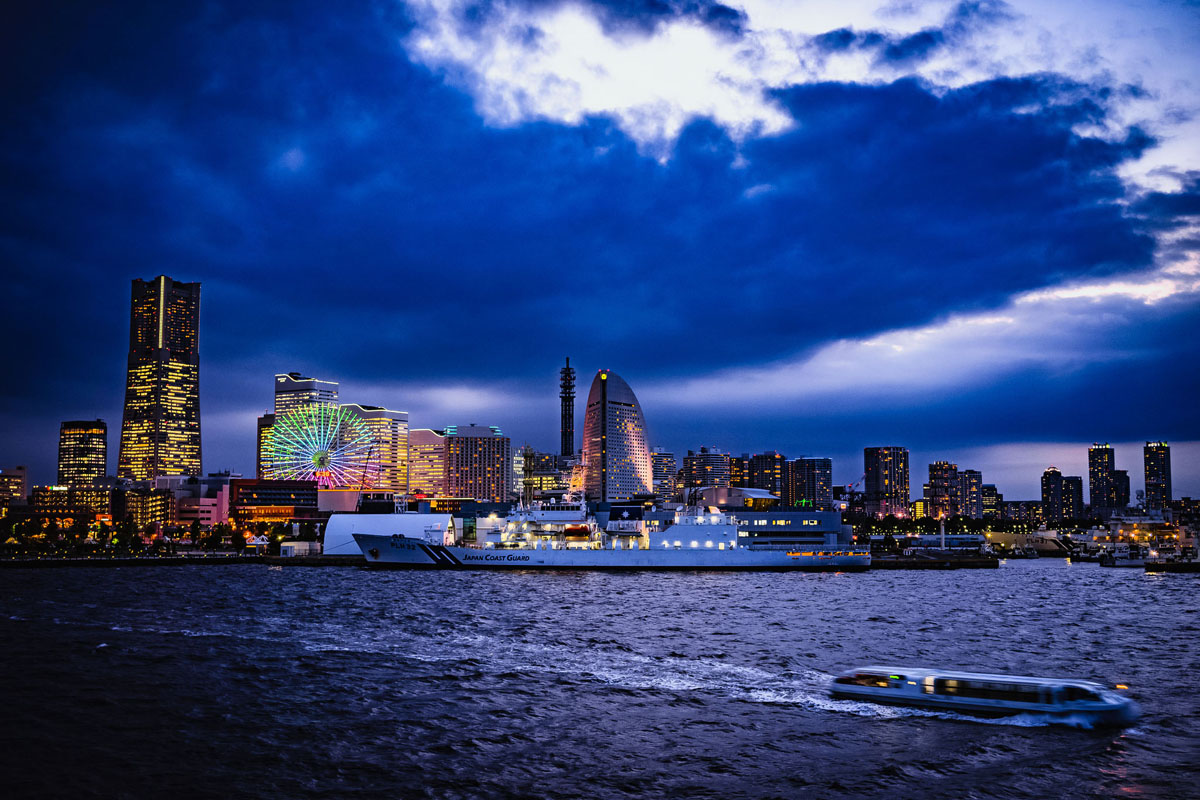
If you already own Canon, Nikon, or third-party lenses, you can buy a separate adapter for your Sony mirrorless camera . What are the downsides of going this route? Generally, adapters are known for slowing down autofocus, which is a key component of any lens. This makes adapters less attractive for those shooting action or video, but it can be a hindrance for stills, too. Adapters also tend to be noisy, making you cringe a bit when changing aperture and grabbing focus. Finally, adapters are expensive and aren’t exactly known for their reliability. The best adapter for Canon to Sony FE , for example, is $395 and is on its fifth rendition to date plus firmware updates. You definitely can have a positive experience with adapters, but it is a potential headache that you won’t have when using native FE lenses.
Lenses are less at risk from the elements than camera bodies, but still can be negatively impacted by dust, moisture, and all of the things that can happen while shooting in extreme environments. Sony doesn't specifically advertise their lenses as being completely weather sealed, but they do have a certain level of dust and moisture resistance built in. Typically, the more expensive the lens is, the higher quality the build will be, which often translates into it being more weather resistant. Zeiss lenses in particular are known for being able to withstand the elements.
For those who want a little more reassurance, we recommend keeping your camera covered by one of the many protective covers available. It's also important to avoid changing lenses in inclement weather as breaking the seal between your lens and camera will expose your equipment's vulnerable points. If your lens does take on some moisture or gets a nice soaking in the rain, stick it in a plastic bag and fill it with some silica gel packets (yes, the ones that overwhelmingly say "Do Not Eat"). These will help to suck the moisture out of the lens and hopefully return it to working order. In the worst case scenario, you can always contact Sony's Pro Support (if you qualify for and are approved for the program), and they'll do their best to repair it. With all of this, keep in mind the old cliché, "tools not jewels." You can't enjoy photos that you don't take.
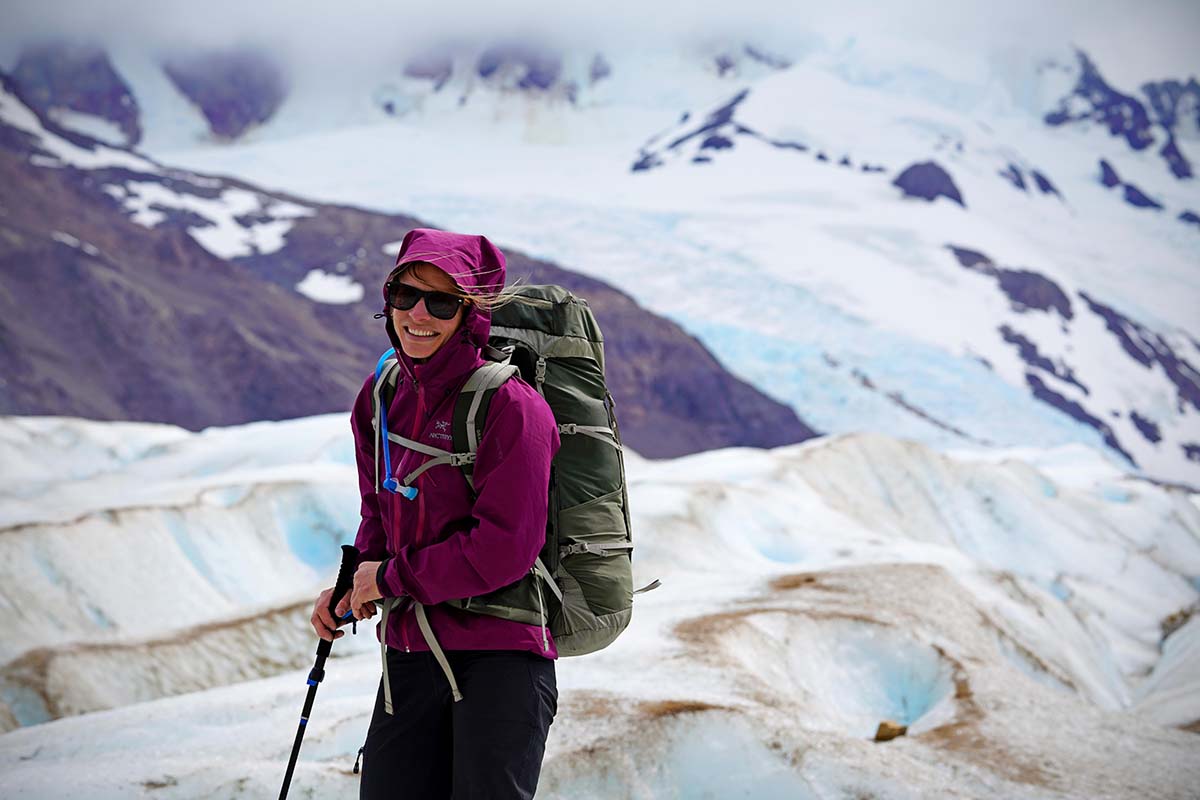
Best Full-Frame Cameras of 2020
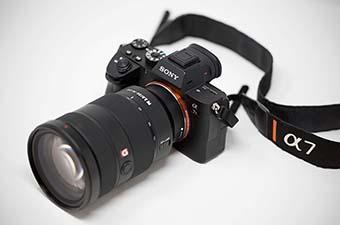
Best Mirrorless Cameras of 2020
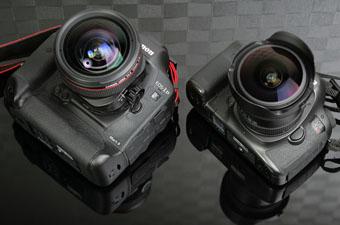
Digital Camera Buyer's Guides and Reviews
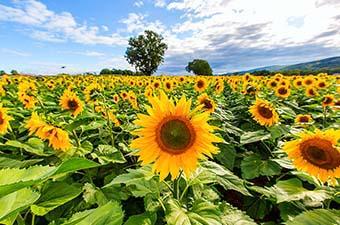
10 Great Canon EF (Full Frame) Lenses
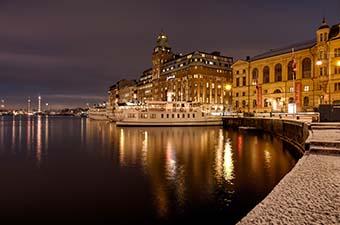
10 Great Nikon FX (Full Frame) Lenses
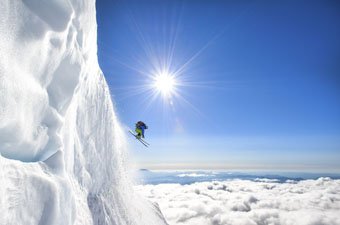
Jason Hummel: An Alpine State of Mind
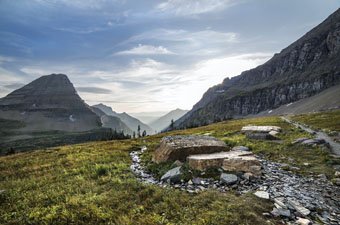
Lenses and Focal Lengths for Landscapes
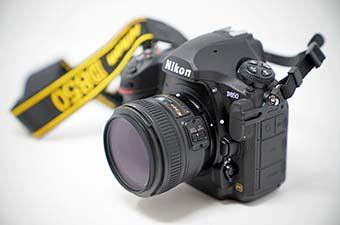
Best DSLR Cameras of 2019
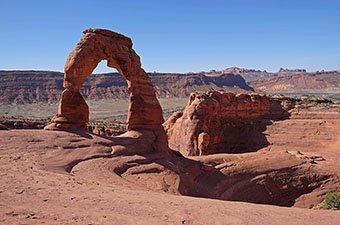
10 Great Fujifilm X-Mount Lenses

Mobile Menu
Megamenu - desktop hamburger menu.
- Hiking Gear
- Backpacking Gear
- Biking Gear
- Camping Gear
- Footwear Reviews
- Climbing Gear
- Skiing Gear
- Winter Gear Reviews
- In-Depth Gear Reviews
- Hiking Shoes
- Hiking Boots
- Trail Running Shoes
- Mountain Bike Shoes
- Approach Shoes
- Climbing Shoes
- Beginner Climbing Shoes
- Mountaineering Boots
- Winter Boots
- Rain Jackets
- Down Jackets
- Synthetic Jackets
- Fleece Jackets
- Hardshell Jackets
- Softshell Jackets
- Windbreaker Jackets
- Ski Jackets
- Winter Jackets
- Hiking Pants
- Hiking Socks
- Trekking Poles
- Baby Carriers
- Running Vests
- Backpacking Tents
- Backpacking Packs
- Backpacking Sleeping Bags
- Backpacking Sleeping Pads
- Backpacking Stoves
- Backpacking Food
- Water Filters
- Altimeter Watches
- Handheld GPS
- Mountain Bike Helmets
- Mountain Bikes
- Mountain Bikes Under $1,000
- Mountain Bikes Under $2,000
- Gravel Bikes
- Bike Brands
- Kids' Bikes
- Hitch Bike Racks
- Camping Tents
- Rooftop Tents
- Camping Sleeping Bags
- Camping Mattresses
- Camping Chairs
- Camping Stoves
- Duffel Bags
- Rock Climbing Shoes
- Climbing Helmets
- Climbing Harnesses
- Climbing Quickdraws
- Belay Devices
- Climbing Ropes
- Climbing Backpacks
- Winter Gloves
- 4-Season Tents
- Ski Helmets
- Ski Goggles
- Ski Backpacks
- All-Mountain Skis
- Ski Bindings
- Backcountry Skis
- Backcountry Ski Boots
- Skis for Beginners
- Hardpack Skis
- Mirrorless Cameras
- Full-Frame Cameras
- DSLR Cameras
- Point-and-Shoot Cameras
- Travel Cameras
- DSLR Lenses
- Mirrorless Lenses
- Lofoten Islands
- Lofoten Hiking
- Hardangervidda
- Jotunheimen
- 10 Great Norway Hikes
- Public Huts
- Torres del Paine
- Chalten and Glaciares
- Lake District
- Patagonia National Park
- Milford Sound
- Abel Tasman
- Marlborough
- Great Walks
- Adventure Towns
Add adventure to your inbox
- Privacy Policy
- Terms of Use
© 2024 Switchback Travel. All Rights Reserved. No part of this site may be reproduced without our written permission.

The Best Sony Lenses for Traveling in 2024
Sony has been delivering some of the most incredible lenses over the years. The design, build quality, performance, and innovative features of their lenses have been appreciated globally.
With the constant buzz around Sony, we tested a large number of Sony lenses on the Sony A7III , rated their performance, and reviewed their quality to help you pick the right lens for traveling so you can create a unique photograph during your next trip.
For who’s wondering, the main reason you should consider investing in a pair of good lenses is that they help you get around limitations such as low-light, the field of view, and zoom range.
Next to helping you around these limitations, lenses are a great investment from a financial standpoint because they don’t get outdated; A camera body might become obsolete after a few years considering the rapid rate of tech improvements and evolutions in camera bodies, while a lens will almost always be compatible with your future Sony camera.
Sony’s lens mounts
The only aspect of a lens that might become outdated is the lens mount ; this is the interface that connects the lens on to the camera and makes it compatible with the camera body.
When looking for a new Sony lens, you’ll want to keep in mind that Sony’s mirrorless cameras such as the Sony A7III and the Sony ZV-E10 have an E-mount connection, while their DSLR cameras use an A-mount.
However, if you’re fancying a specific lens that doesn’t have the same lens mount as your camera body, a mount-adaptor will help you connect them. Remember that such an adaptor can lead to certain functions’ unavailability, such as auto-focus and image stabilization.
If you are not sure which mount a specific lens has, and if you want to be compatible with your camera, we recommend checking it before buying your lens.
Lens filters
Another accessory which you might want to consider when buying a new Sony lens is the camera lens filter. Lens filters are externally attached to the camera lens to alter the amount of light and colors that enter your lens. Controlling these aspects helps you naturally enhance your photos.
Lens filters come in different types, such as:
- Polarizing filter. This filter blocks unnecessary light reflections from multiple sources, helping you reduce haze and obtain better contrast. This is handy when photographing water bodies such as lakes, ponds, etc.
- Graduated neutral density (GND) filter: GND filters have a variable light transmission range. They are used to neutralize an overly bright region such as the morning sky.
- UV filter: This filter blocks UV rays, which can otherwise lead to a lot of haze in high UV light areas such as high altitudes or extremely sunny regions.
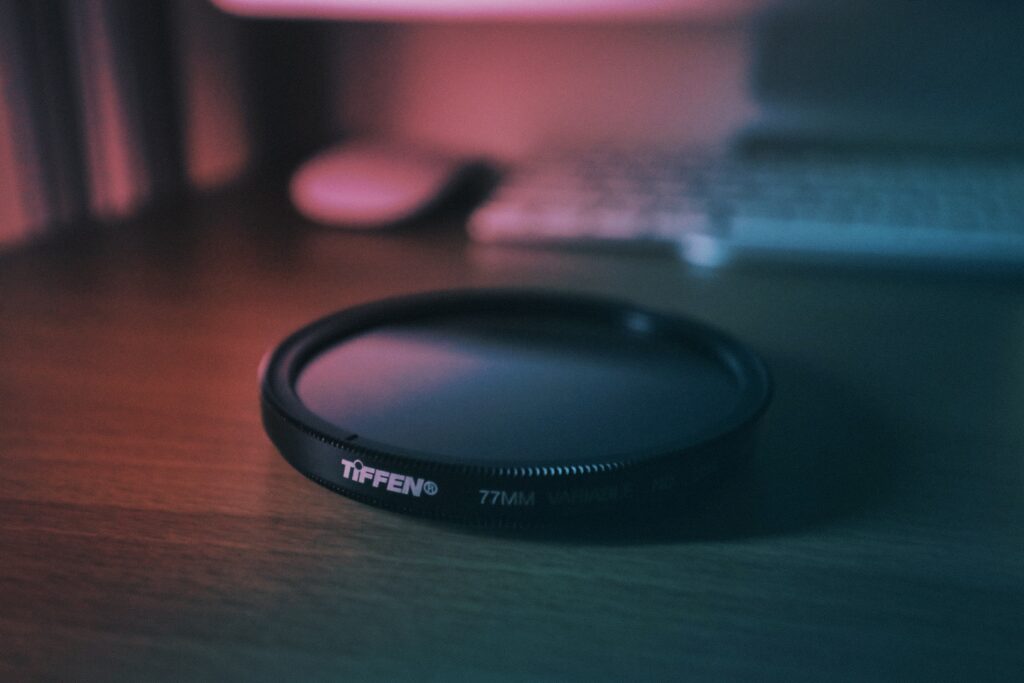
The 3 Best Sony Lenses for Landscape Photography
Landscape photography consists of wide-angles, beautiful silhouettes, and the glorious beauty of the world around us. Throughout the year, we’ve extensively tested many Sony lenses for landscape photography, and these are our favorite ones.
Vario-Tessar T* 16-35 mm F4 ZA OSS
The Vario-Tessar T* 16-35 mm lens performs incredibly well at all its focal lengths. The images retain their sharpness and clarity even when the exposure or depth of field changes. The distortion – even at the highest zoom ranges – is negligible.
When shooting landscapes and water bodies in very bright day conditions, glaring is a significant issue. The ZEISS®️ T* coating on this Sony lens blocks reflections and glare, which in turn helps produce exceptional color contrast.
- Sony E-mount
- Budget: $1,348.00
- Buy the Vario-Tessar T* 16-35 mm lens on Amazon
Sony E 10-18 mm F4 OSS
The Sony E 10-18 mm F4 OSS lens has the lowest focal length (10 mm) and captures the largest field of view among all of Sony’s lenses. The additional field of view captured by the lens adds more depth and dramatic clarity to your photographs, helping you capture stand-out images with perspectives that are never-seen-before.
With an f4 aperture, architectural buildings and moving subjects such as clouds, rivers, and waterfalls look equally captivating. Weighing only 225 grams and measuring 70 x 63.5 mm, you can easily fit this lens in your pocket and click memorable photographs on the move on your next vacation.
- Budget: $ 898.00
- Buy the Sony E 10-18 mm F4 OSS lens on amazon
Sonnar® T* E 24 mm F1.8 ZA
The Sonnar® T* E 24 mm F1.8 ZA lens is a fixed focal length prime lens manufactured by ZEISS with a constant F1.8 aperture. Such a large aperture will help you obtain some of the best sunsets, night sky, and dimly lit architectural spaces. The lens is also an ideal pick if you’re planning to shoot time-lapses.
There is no shaking or blurring of the subject even while taking long exposure shots.
- Budget: $1098.00
- Buy the Sonnar® T* E 24 mm F1.8 ZA lens on amazon
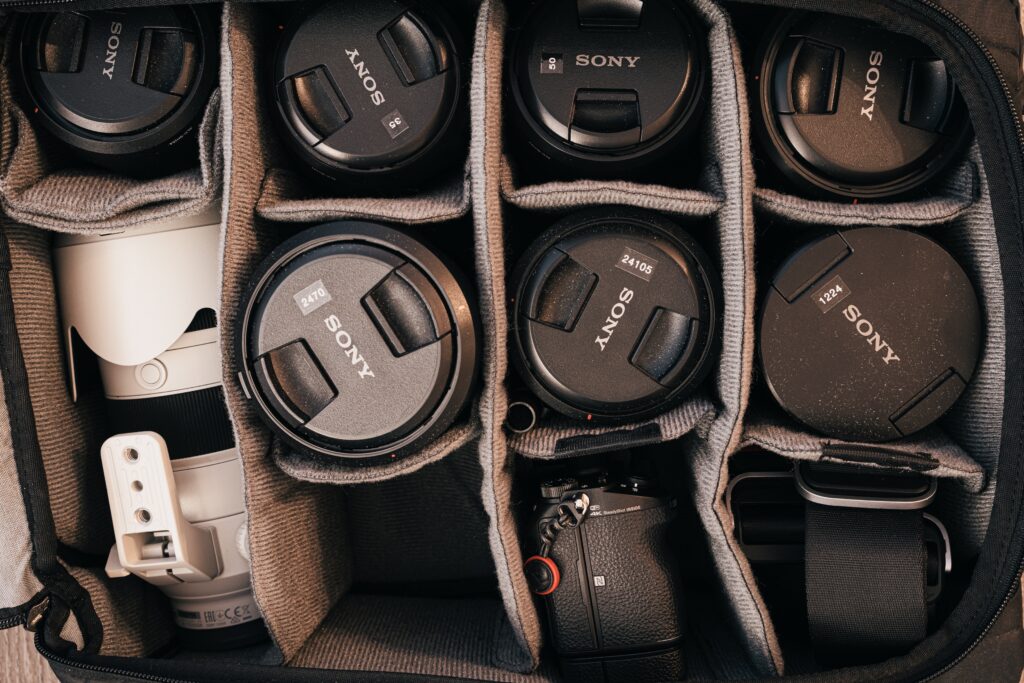
The 3 Best Sony Lenses for City Trips
As an urban and city photographer, you’ll encounter a host of interesting subjects (skyscrapers, monuments, people, and cultures) from which you’ll want to capture their vibe and emotions in a photograph. We’ve listed three lenses that help capture the essence of city life.
Sony FE 24-105 F4 G OSS
The FE 24-105 F4 G OSS lens is a wide range, mid-telephoto zoom lens. The unique aspect of this lens is its fluent focus; it will allow you to shoot your subjects from a distance and still manage to cut the background noise as no other lens can. This ability can be especially beneficial if you’re traveling to a crowded city.
Next to the fluent focus, the FE 24-105 F4 G OSS lens is known to deliver a great image quality.
- Budget: $1398.00
- Buy the Sony FE 24-105 F4 G OSS lens on amazon
Sony DT 16-105 mm F3.5-5.6
Sony’s DT 16-105 mm F3.5-5.6 lens is a great value for your money considering the range of focal length options it provides. You can shoot wide-angle photos at 16 mm focal length and equally good close-ups at 105 mm focal length.
In practice, this means that the 16 mm focal length will help you obtain a better perspective when shooting landscapes, skylines and buildings, while the 105 mm focal length will bring more detail to your pictures when you are capturing birds and wildlife from a distance.
- Budget: $698.00
- Buy the Sony DT 16-105 mm F3.5-5.6 lens on amazon
Sony FE PZ 28-135 mm F4 G OSS
The Sony FE PZ 28-135 mm F4 G OSS lens is one of Sony’s prime offerings; it provides vibrant image quality, has a constant f/4 aperture, and is known to deliver sharp images at all focal lengths.
The unique feature of this Sony lens is not its constant f/4 aperture, but rather the fact that the zoom system is so smooth and motorized, making it perfect for filming movies, documentaries, and events in 4K with the smoothest transitions.
Compared to kit lenses, this lens – which costs $ 2399 – is quite pricey, but when you compare it to other lenses with the same specifications, you will realize that it is actually the best deal you can find on the market. Hence the reason why it’s being used by most of the professional cine- and video makers.
- Budget: $2399.00
- Buy the Sony FE PZ 28-135 mm F4 G OSS lens on amazon
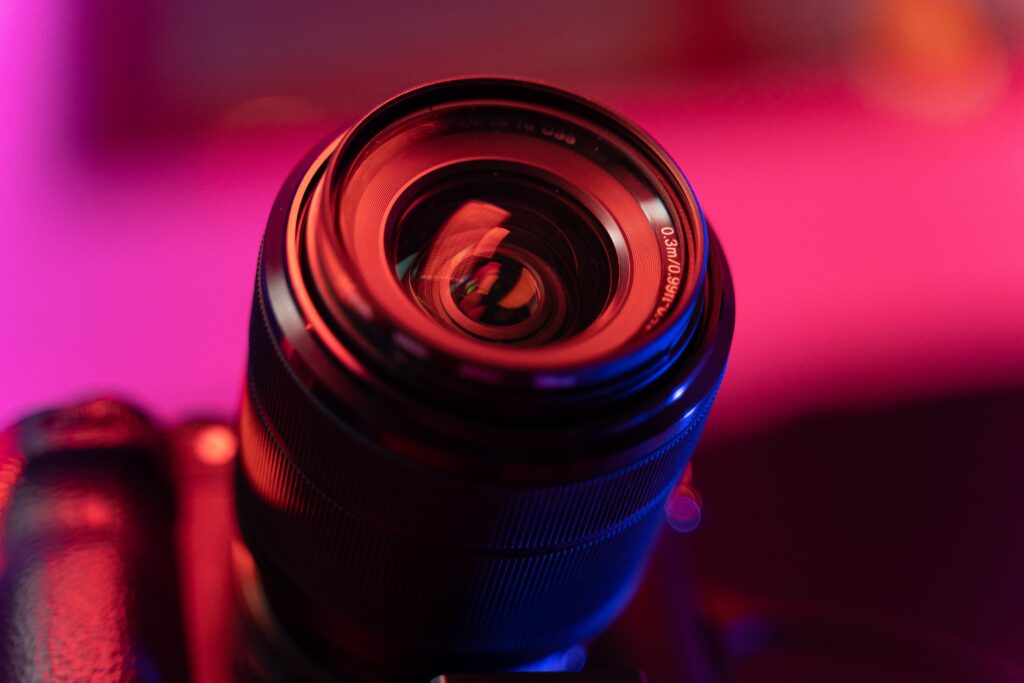
The 3 Best All-round Sony Lenses for Travel Photography
Your next adventure might take you to dense forests, breathtaking cityscapes, cultural heritages, mountains, crowded cities, and whatnot. As an adventurer, you’ll always be unsure of what subjects you’ll encounter, which is why you’ll want to bring an all-around lens along.
Sony FE 70-200 mm F4 GM OSS
The FE 70-200 mm F4 GM OSS lens is a high-performance lens known as a G Master Lens, meaning the lens originates from Sony’s top-shelf line of high-quality glasses, giving it a solid build quality to help you shoot in rugged conditions.
The lens has a constant maximum aperture of F4, which helps you capture outstanding photos in low light. When we combine this aperture with the lens, its high-speed auto-focus, and multiple stabilization features, we’ll have an ideal lens for close-ups – delivering a superb bokeh.
- Budget: $1499.00
- Buy the Sony FE 70-200 mm F4 GM OSS lens on amazon
Sony E 70-350 mm F4.5-6.3 G OSS
The Sony E 70-350 mm F4.5-6.3 G OSS lens is a telephoto zoom lens that can help you capture a wide range of subjects, from wide-field landscapes to close-ups of wildlife.
The lens is built from extra-low dispersion glasses, minimizing the loss of color and sharpness at higher focal lengths. This makes the image clarity, the level of details, and the sharp contrast obtained at 350 mm focal length highly impressive.
The 70-350 mm lens also contains a focus hold button that keeps the lens barrel locked, making it very convenient when adjusting the focus.
- Budget: $998.00
- Buy the Sony E 70-350 mm F4.5-6.3 G OSS lens on amazon
Sony DT 18-250 mm F3.5-6.3
The DT 18-250mm F3.5-6.3 lens is a great entry-level lens; It helps you capture landscapes, portraits, and macros, thanks to its dynamic range.
This Sony lens is known as the lens with the best image quality amongst the traditional Sony A-mounts. Nevertheless, some images might have some blurry edges at higher zoom levels, which can be easily fixed in post-production if you know how to edit in lightroom .
The 18-250 mm Sony lens weighs 440 grams and is, considering its price, a fantastic buy for the functions it offers.
- Sony A-mount (Don’t forget your mount adaptor!)
- Budget: $648.00
- Buy the Sony DT 18-250 mm F3.5-6.3 lens on amazon
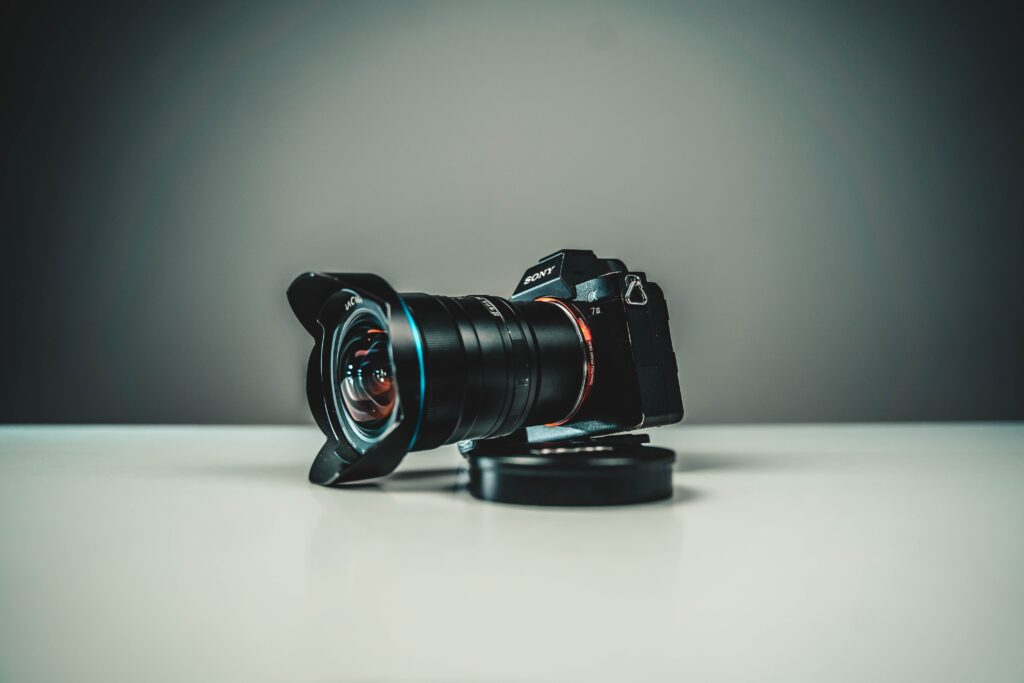
The 3 Best Budget Sony Lenses for Travel Photography
We’ve also selected a few different Sony camera lenses priced under $500 and have delivered great performances. This way, you can kickstart your journey with these lenses, even If you’re on a budget constraint or just getting into travel photography.
Sony DT 50 mm F1.8 SAM
The Sony DT 50 mm F1.8 SAM lens is a 50 mm fixed focal length lens priced at only $169.99. Even at such a low price, the lens works great for city and urban photography and offers an incredible field of view even when you’re at a comfortable distance from your subject.
The only downside of this Sony lens is that it is not as versatile as a zoom lens.
- Sony A-mount
- Budget: $169.99
- Buy the Sony DT 50 mm F1.8 SAM lens on amazon
Sony E 20 MM F2.8
Priced at only $349.99, the Sony E 20 MM F2.8 lens gives you exactly the kind of image quality, contrast, and sharpness that you expect while shooting with a prime lens.
The fixed focal length of 20 mm is perfect for taking wide-angle shots, making it an excellent purchase when you’re into landscape photography. As it has an aperture of F2.8, you can even capture fluent low light photos.
With a weight of only 69g, this is the lightest lens on our list, making it ideal for traveling.
- Budget: $348.00
- Buy the Sony E 20 MM F2.8 lens on amazon
Sony DT 18–135 mm F3.5–5.6 SAM
If you are looking for a powerful lens that could stay on your camera 99% of the time, you can stop looking. At $499.99, the DT 18–135 mm F3.5–5.6 SAM lens delivers a wide range of focal lengths, and its power zoom and autofocus ensure quality movie shots.
- Budget: $499.00
- Buy the Sony DT 18–135 mm F3.5–5.6 SAM lens on amazon
What Sony lens should you buy for landscape photography?
Most travel photographers need a wide range of lenses, such as ultra-wide-angle lenses for landscapes, standard lenses for cityscapes, or telephoto zoom lenses for general photography.
When choosing the lenses you want to travel with, focal length and the zoom range isn’t going to be the only criteria for judging a lens’s performance; You’ll want to consider the build quality, weight, and assistive features, the lens mount, and the price.
A budget lens would help you understand the field of view, perspective, and focus, but the image quality would be lower. Before you pick a lens, always weigh the features with the price that you’re paying.
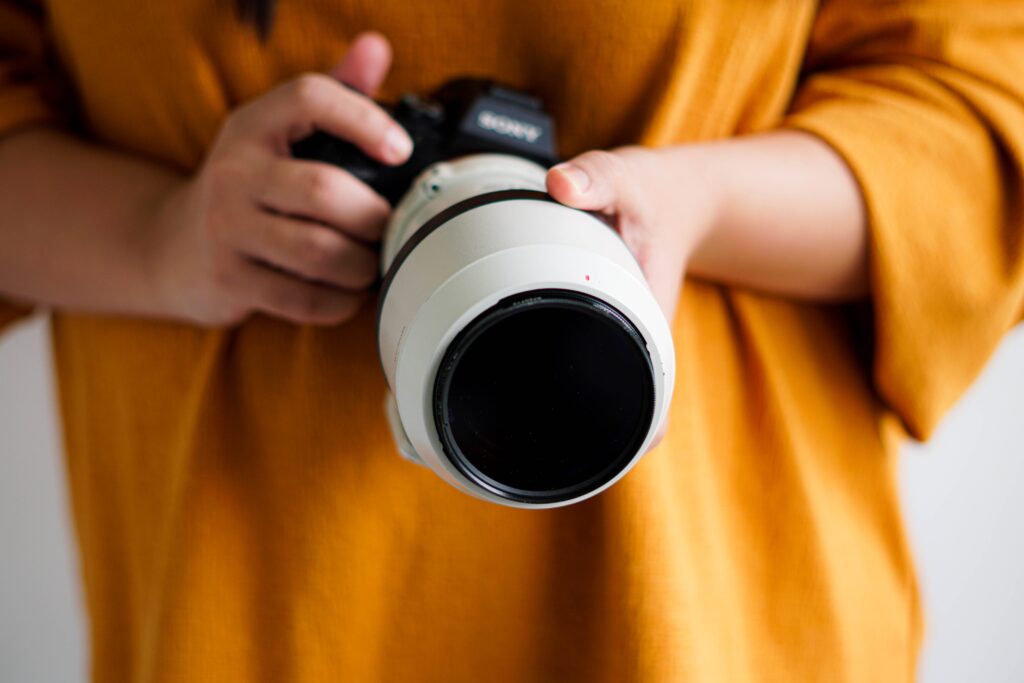
Our favorite Sony lenses for travel photography listed.
Share this:.
Hey there! I'm Elliot Clennam, a passionate photographer based in Brussels, Belgium. My love for capturing the essence of my surroundings has led me on countless adventures, from exciting road trips to bustling city escapes.
Similar Posts
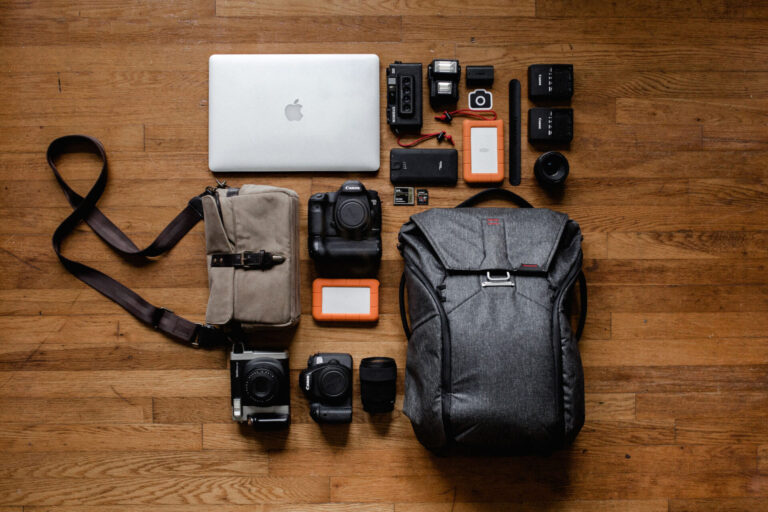
7 Best Camera Bags for traveling in 2024
Traveling with camera gear can be a daunting task, but having the right camera bag can make all the…
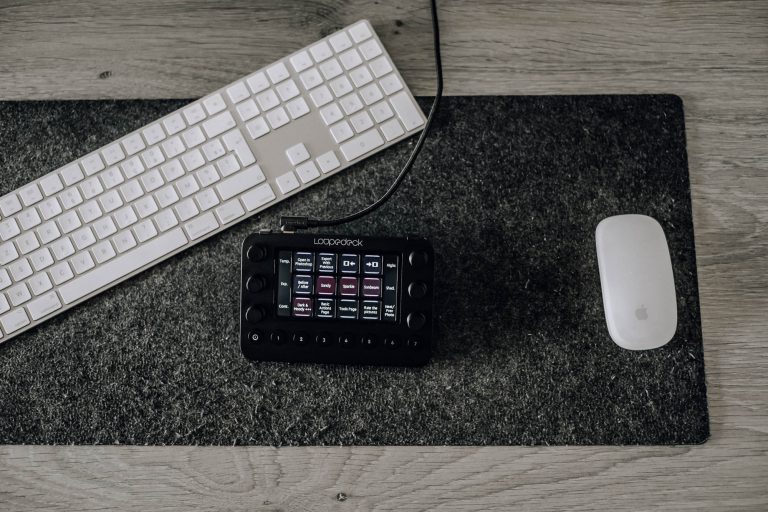
Review: How does Loupedeck Live impact your editing process?
Since its successful Indiegogo crowdfunding campaign in 2016, Loupedeck has been designing and building four different Lightroom editing consoles…
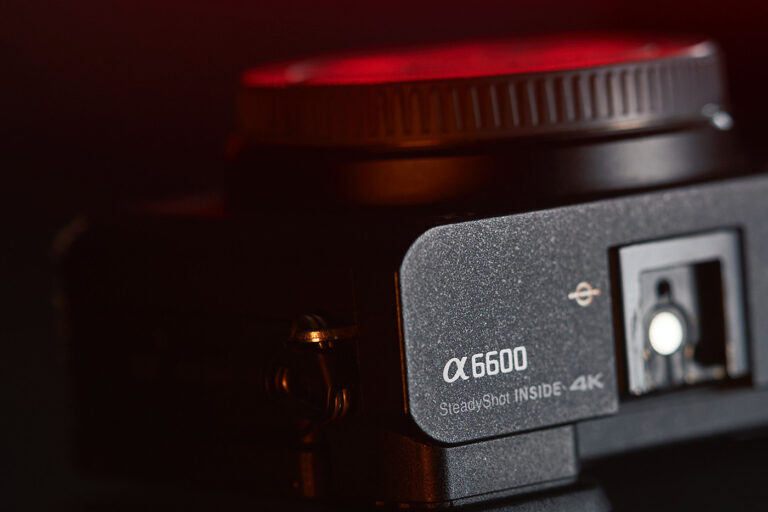
Sony A6600, 2024 Review: A Mighty Camera for Photography Enthusiasts
The Sony A6600 is a mirrorless camera released in 2019 and has been well-regarded by many photographers and videographers….
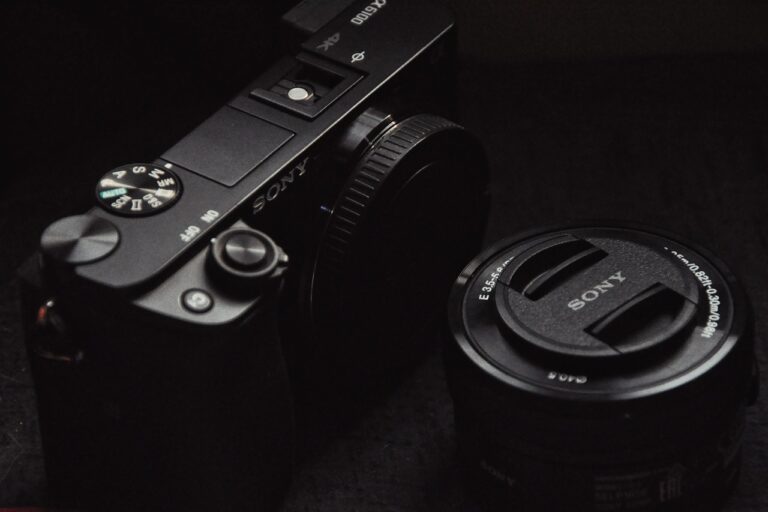
Sony A6100 review: Amazing Focus on a Budget
The Sony A6100 APS-C Mirrorless is the successor of the well-respected and widely popular Sony A6000. With its immense…
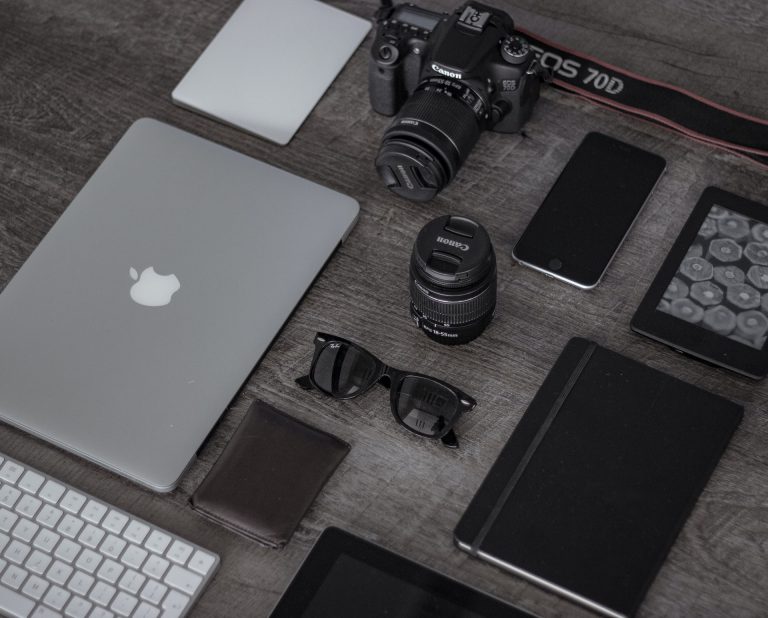
A practical guide to travel adapters
Electricity is being handled differently all over the world, meaning you better start your trip abroad well prepared. This…
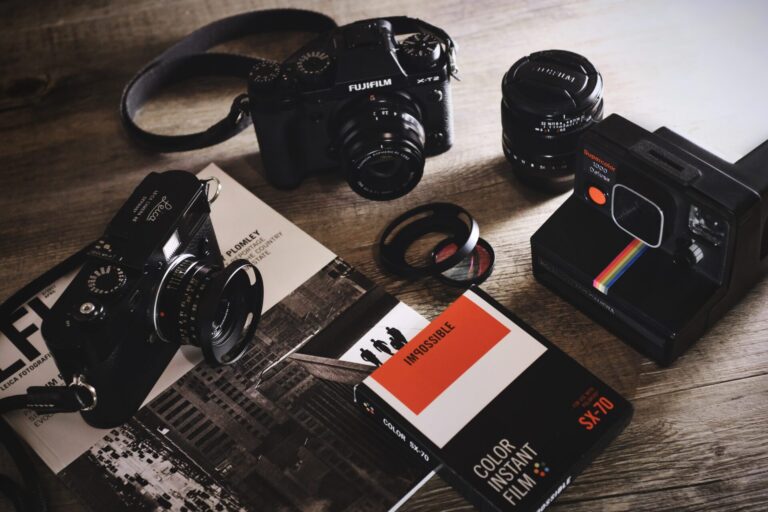
The Best Fujifilm lenses for traveling in 2024
Choosing the right lens for your Fujifilm camera is crucial for travel photographers looking to capture their journeys in…
The leading authority in photography and camera gear.
Become a better photographer.
12.9 Million
Annual Readers
Newsletter Subscribers
Featured Photographers
Photography Guides & Gear Reviews

Best Lens for Travel Photography in 2024 (All Cameras)
Discover the ideal lenses for travel photography, balancing versatility, size, aperture, and durability to capture stunning images on your journeys this year.
Camera Gear Guides | Lens Guides | By Jeff Collier
Shotkit may earn a commission on affiliate links. Learn more.
This guide will help you find the best lens for travel photography , depending on your camera.
The right choice of lens can elevate your travel storytelling skills, allowing you to express and encapsulate the essence of each destination.
From wide-angle primes for shooting sweeping landscapes to versatile zoom lenses for dynamic versatility, the choices can be bewildering.
So, let us take you by the hand and walk you through some of the best options.
Table of Contents
How to Choose the Best Lens for Travel Photography
When selecting the best lens for travel photography, there are several key qualities to consider:
- Versatility: A good travel lens needs to be versatile. You want a lens that can handle various situations, from rolling countryside landscapes to detailed street scenes. A zoom lens with a range like 24-70mm or 18-135mm can be ideal, offering both wide-angle and moderate telephoto perspectives.
- Size and Weight: Traveling often involves moving around a lot, sometimes in cramped conditions. So, the size and weight of the lens are crucial. A compact and lightweight lens will be less burdensome during long days of sightseeing or hiking.
- Aperture: While zoom lenses with wide apertures like f/2.8 are great for low light and creating a shallow depth of field , they’re often heavier and more expensive. An f/4 lens strikes a good balance – it’s typically lighter, more compact, and less costly, yet still performs well in various lighting conditions.
- Prime or Zoom: A prime lens is typically smaller and lighter than a zoom lens, but it doesn’t offer the same versatility with only a single focal length. If you have space in your travel bag, a combination of one small prime lens (like a nifty-fifty) and one zoom would be ideal.
- Image Stabilization: This feature is a must for travel photographers, especially when shooting in low light or when using slower shutter speeds. It helps reduce the blurriness caused by camera shake, ensuring sharper images.
- Durability: A travel lens should be durable enough to withstand different environments. Look for lenses with weather-sealing if you plan to shoot in various outdoor conditions.
- Image Quality: High image quality is, of course, a priority. Look for lenses that offer sharp, clear imaging across their aperture range and focal lengths.
Best Full Frame Lenses for Travel Photography
Canon ef 24-105mm f/4l is usm (best canon ef zoom lens for travel photography).
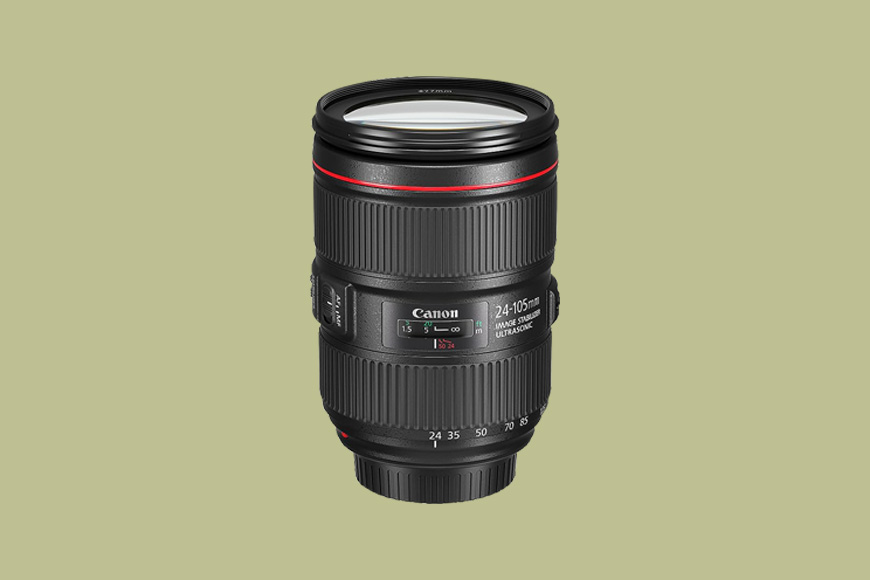
- Great optical quality
- Durable build
- Versatile focal length
- Image stabilization
- Relatively expensive
- Some distortion at 24mm
The Canon EF 24-105mm f/4L IS USM is a travel photography favourite, thanks to its blend of versatility and image quality.
As part of Canon’s esteemed L-Series, it’s well-known for superior optical performance. It delivers exceptional image quality and sharpness, ensuring your travel photos are (hopefully) visually stunning.
It has a robust build and is completely weather-sealed. It’s also surprisingly light and compact, considering its focal range and capabilities.
Its 24-105mm focal range provides a huge amount of flexibility and is ideal for capturing everything from landscapes to detail shots.
The constant f/4 aperture across the zoom range makes exposure control very simple and allows you to maintain consistent settings in varied lighting conditions.
It’s also fast enough to be good in low light conditions and lets you play with a shallow depth of field, especially when fully extended.
The camera lens also comes with built-in image stabilization, which is essential for the kind of handheld shooting that’s normal when travelling.
Those looking for a less expensive alternative could consider the Sigma 24-105mm f/4 DG OS HSM [ Amazon | B&H ] – although you should bear in mind that it’s not weather-sealed.
Canon RF 24-105mm f/4 L IS (Best Canon RF Zoom Lens for Travel Photography)
- Weather sealed
- Excellent build quality
- Image stabilisation
- Excellent autofocus capabilities
- f/4 is not the fastest
The Canon RF 24-105mm f/4 L IS lens is among the mirrorless staples for Canon users.
The 24-105mm focal length is a versatile focal range, suitable for capturing wide-angle landscapes, portraits, and even some telephoto shots.
It’s an ideal range for travel photographers wanting to avoid constantly switching lenses.
As an L series camera lens, it’s very well-built, compact, and lightweight, with a robust construction and weather-sealing for added durability.
With its constant f/4 aperture throughout the zoom range, you get consistent exposure control, and the lens has impressive optical quality, producing sharp images with minimal distortion and chromatic aberrations.
The Canon RF 24-105mm f/4L IS also has in-built image stabilization. That means you’ll be able to take sharper images, even shooting handheld in low-light conditions, a common scenario when travelling.
Its Dual Nano USM (Ultrasonic Motor) also ensures smooth, accurate, and quiet autofocus, giving you the ability to get all your shots in focus, regardless of how challenging your subjects or environments are.
Nikon AF-S FX NIKKOR 24-120mm f/4G (Best Nikon FX Zoom Lens for Travel Photography)
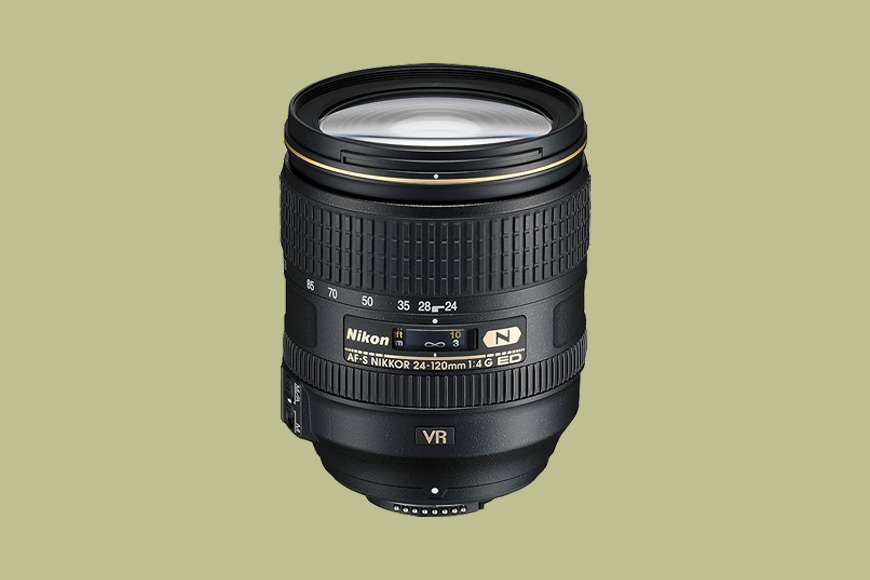
- Excellent image quality
- Well-designed
- Versatile focal range
- Great autofocus
- Some barrel distortion
The Nikon AF-S FX NIKKOR 24-120mm f/4G is a great all-round lens for the Nikon shooter.
It has a nearly identical focal range to the Canon lens above and, as such, provides users with great versatility and the ability to shoot a wide range of photographic scenarios.
You can comfortably shoot expansive landscapes to detail shots and portraits. It’s the kind of lens you could just leave on your camera and be ready for anything.
Its constant aperture throughout the zoom range ensures consistent exposure settings. That means that, whatever the lighting conditions, you’ll be ready and won’t have to make a lot of setting changes to adapt.
Like the Canon, it’s also a high-end product that delivers sharp, clear images throughout its focal range.
It has Nano Crystal Coating, too, which reduces chromatic aberration and lens flare, ensuring consistently high image quality whatever the lighting conditions.
This lens is surprisingly compact and lightweight, given its focal range, and is fully weather-sealed, so you can confidently take it on your next adventure.
The Nikon AF-S FX NIKKOR 24-120mm f/4G has optical image stabilization – essential for handheld shooting – and its Silent Wave Motor (SWM) technology provides lightning-fast and silent autofocus.
Having such quick and quiet autofocus is a definite bonus during travel, for street photography, and for capturing candid scenes like a ninja.
- More: Best Lenses for Landscape Photography
Nikon Z 24-120mm f/4 S (Best Nikon Z Zoom Lens for Travel Photography)
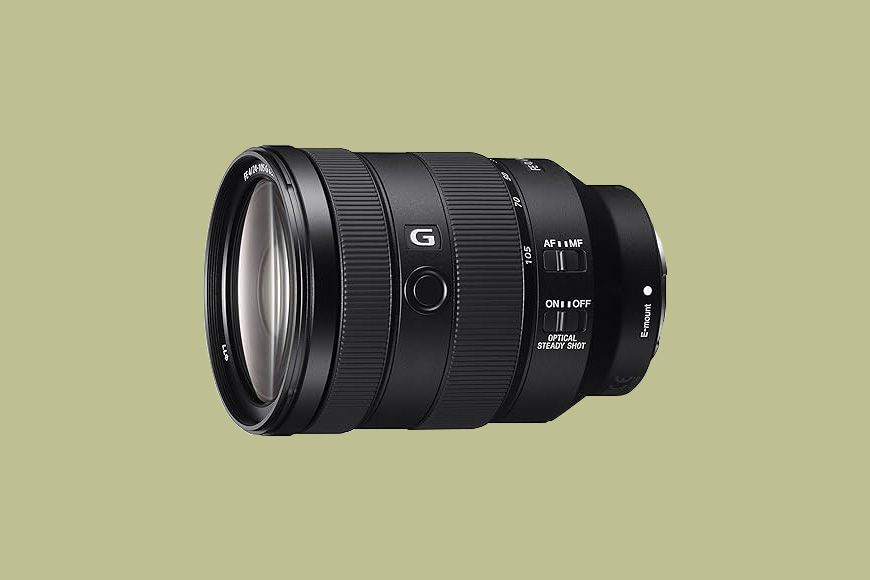
- Excellent optical quality
- Customizable control ring
- f/4 not the best in low light
For the travel photographer shooting Nikon mirrorless, the Nikon Z 24-120mm f/4 S is a stellar choice.
Once again, it’s a lens with a 24-120mm focal range, which provides travel photographers with great versatility.
Whether you’re shooting landscapes or zooming in on details, you can adapt without the need for frequent lens changes.
This lens also has a constant f/4 aperture throughout its zoom range, which means consistent exposure. Plus, it’s easy to adjust your settings when moving between varied lighting conditions.
It’s compact and lightweight, given its capabilities, and has in-built image stabilization and extremely fast autofocus.
Travel photographers generally shoot most scenes handheld, so image stabilization is essential, and it’s always handy to have quiet and quick autofocus so you can react quickly and be discreet.
The Nikon Z 24-120mm f/4 S boasts exceptional optics and delivers crisp, colorful images with excellent contrast.
One nice feature is the lens’ customizable control ring, which allows travel photographers to adjust settings like aperture, ISO, or exposure compensation on the fly.
This ability to tailor-make your shooting experience adds another level of versatility to this as a travel lens.
Sony FE 24-105mm f/4 (Best Sony FE Zoom Lens for Travel Photography)
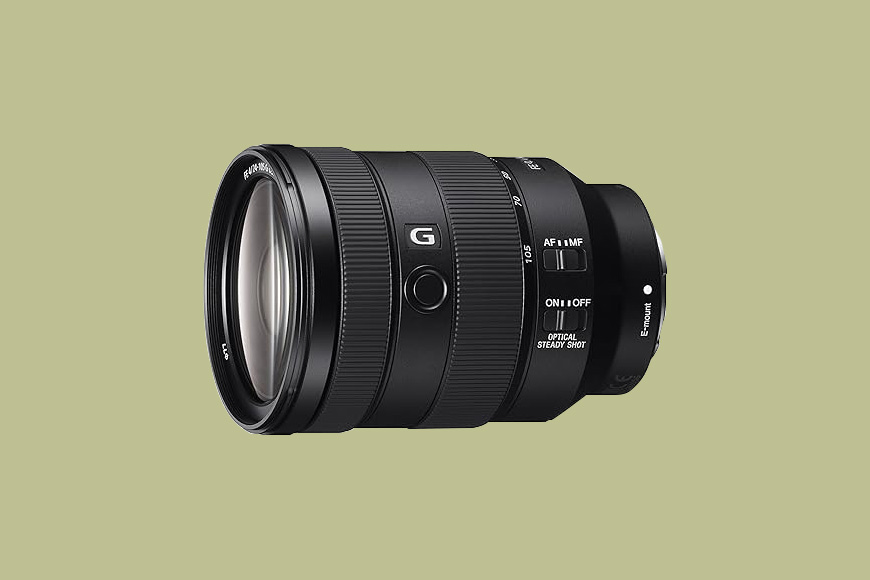
- Great image quality
- Weather-sealed
- A little heavy
- Limiting aperture
Although it lacks a few millimeters of focal length compared to the others in this section, the Sony FE 24-105mm f/4 is a travel photographer favorite known for its exceptional performance and versatility.
Starting at 24mm, the lens has wide-angle capabilities to help you shoot landscapes and architecture. And 105mm is still enough for detail shots and portraits.
Like every other lens in this section, it has a constant f/4 aperture throughout the zoom range. That makes it easy on you when it comes to changing settings, gives you some depth of field to play with, and helps you out in low-light conditions.
Travel photography often involves shooting in dynamic environments, so having built-in image stabilization is a must, particularly when shooting handheld at longer focal lengths. This lens delivers.
It’s also weather-sealed, so you can take it anywhere.
But what about its image quality? Well, Sony is renowned for producing lenses with outstanding optical performance, and the FE 24-105mm f/4 is no exception.
This lens produces sharp images with minimal distortion, chromatic aberration, and vignetting, so you should end up with stunning travel images.
For those photographers who need more range or want to save some money, consider the Tamron 28-200mm f/2.8-5.6 Di III [ Amazon | B&H ].
- More: Best Lightweight Travel Cameras
Best APS-C Lenses for Travel Photography
APS-C cameras are more compact than their full-frame brothers and sisters, and they often have the specs to deliver great images.
So, if you’re someone who has one of these cameras, these lenses could be for you.
Fujifilm XF 18-135mm f/3.5-5.6 (Best Fujifilm Zoom Lens for Travel Photography)
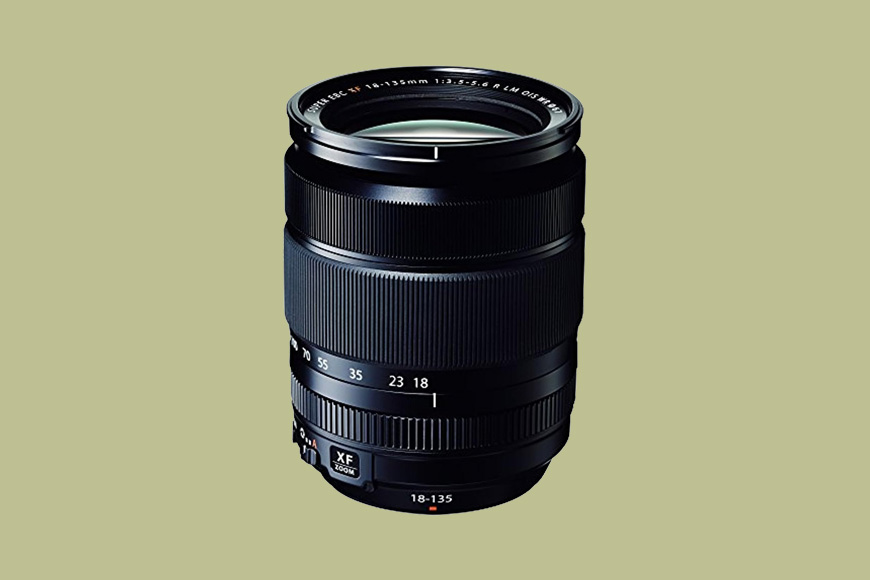
- Lightweight and compact
- Variable aperture
- Some image softness
The Fujifilm XF 18-135mm f/3.5-5.6 lens (full review here ) is pretty popular thanks to its wide focal range and compact design.
The best feature of this lens is clearly its impressive focal range. It’s both a wide-angle lens and a telephoto lens, so provides users with exceptional versatility for capturing everything from landscapes to distant subjects.
Weighing in at a mere 490 grams, the XF 18-135mm is also remarkably lightweight. So, it’s an excellent choice for travel photographers who prioritize portability.
The lens is fully weather-sealed, providing protection against dust and moisture, and is equipped with Fujifilm’s Optical Image Stabilization (OIS) technology.
With this, photographers can shoot handheld at slower shutter speeds without sacrificing image quality.
And, as you’d expect from Fuji, the lens has exceptional optical quality. The images are sharp, with well-rendered colors, minimal distortion, and chromatic aberration – a travel lens that can be relied on.
- More: Guide to the Best Wide-Angle Lenses
Panasonic Lumix 14-140mm f/3.5-5.6 II (Best MFT Zoom Lens for Travel Photography)
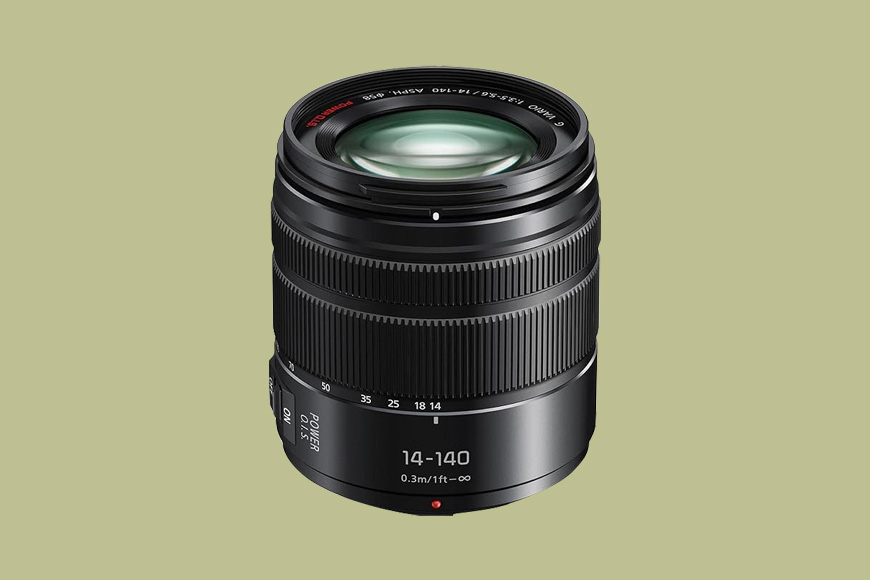
- Extremely versatile focal length
- In-built image stabilization
- Plastic construction
Just a note before I get into it: there are multiple versions of this lens, so it can be a bit confusing. The latest version, which is the version you want, says H-FSA14140 on the box and the barrel.
And if you get it, you’ll get a lens that is well-liked in the travel photography community for its broad focal range and compact design.
With its extensive 14-140mm range, it’s the most versatile lens in this guide. There is very little you wouldn’t be able to capture with it, thereby reducing the need to change lenses.
It’s also, especially given this focal range, exceptionally compact and lightweight and weighs in at a mere 265 grams. No need to use up much space or add unnecessary weight to your camera bag.
Panasonic’s Power O.I.S. technology is also integrated into the lens, providing effective image stabilization to ensure sharp, blur-free images, even when shooting zoomed-out.
It boasts an excellent autofocus system, fast and virtually silent. That’s particularly good for travel photography as you can shoot in quiet or intimate settings and capture moments without disturbing the atmosphere.
Thanks to both those last features, the smooth zoom and silent autofocus, the Lumix 14-140mm f/3.5-5.6 II is also well-suited to videography, adding an extra dimension to your travel storytelling.
Another option is the Olympus 12-200mm f/3.5-6.3 Lens [ Amazon | B&H ], though by most accounts, the Panasonic is a better performer.
Canon EF-S 18-135mm (Best Canon APS-C Zoom for Travel Photography)
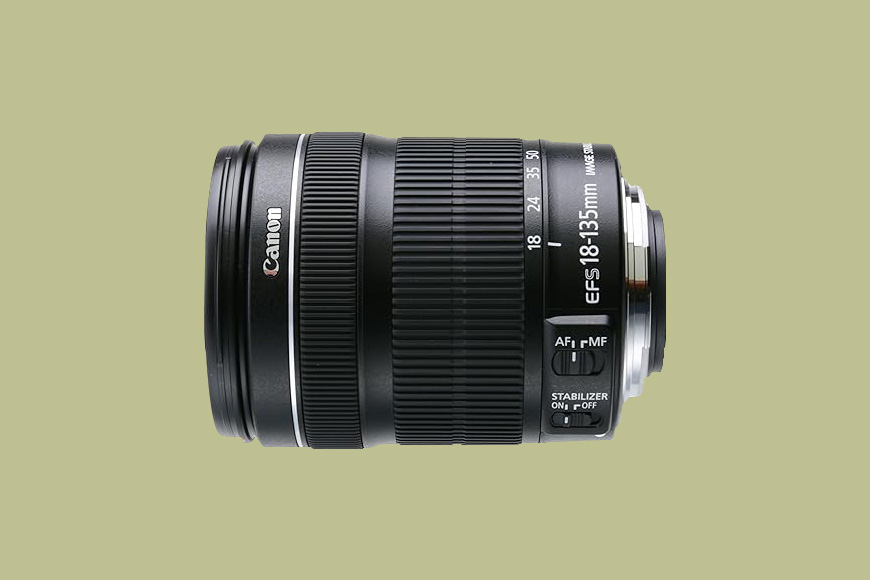
- Light and compact
- Excellent autofocus
- Made of plastic materials
Weighing in at just 480 grams, the EF-S 18-135mm is a relatively lightweight and compact lens – important for travel photographers who want to minimize weight and maximize space in their gear bag .
And, with its 18-135mm focal range, whether you’re shooting landscapes, portraits, or distant subjects, the Canon EF-S has you covered.
The lens features Canon’s STM (Stepping Motor) autofocus technology, providing smooth and silent focusing during both still photography and video recording.
It is also equipped with Dynamic Image Stabilization (IS), which reduces the impact of camera shake.
This feature is invaluable for handheld shooting, ensuring sharp images even when using the lens at longer focal lengths or in low-light conditions – a common scenario in travel photography.
The overall image quality is excellent, too, something that Canon is well-known for. The images are sharp, well-contrasted, and with good color reproduction across its focal range.
Nikon Z DX 16-50mm f/3.5-6.3 VR (Best Nikon Z DX Zoom for Travel Photography)
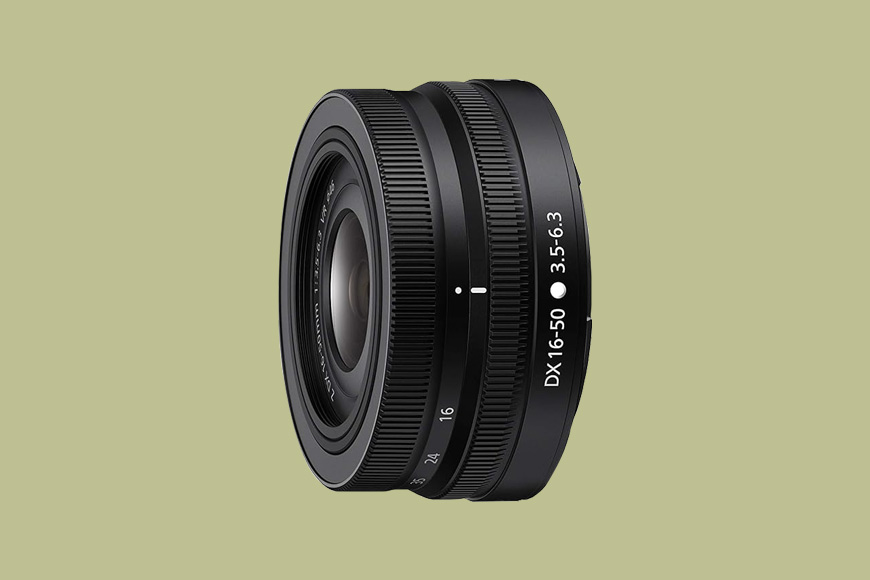
- Extremely lightweight and compact
- Good autofocus
- Good focal range
- Slightly cheap feel
The Nikon Z DX 16-50mm is exceptionally compact and lightweight, making it an ideal companion for travel photographers.
The lens’s sleek design ensures it takes up minimal space in your gear bag. It’s so sleek it almost looks like a pancake lens!
Not only that, but the lens also has an electrically retractable mechanism, allowing it to collapse into an even more compact form when not in use.
Despite its small form factor, it nevertheless covers a decent focal range, from 16mm to 50mm. This makes it well-suited for a variety of travel scenarios, from wide-angle landscapes to portraits.
Overall, the image quality is good, and sharp throughout the range. That’s aided by built-in stabilization that eliminates the effects of camera shake when shooting handheld.
Equipped with a Stepping Motor autofocus system, the Nikon Z DX 16-50mm has fast, quiet, and precise focusing. This is super useful when shooting travel photos, as you need to react quickly and often be discrete.
- More: Best Lenses for Portrait Photography
Nikon AF-S DX 16-80mm f/2.8-4E (Best Nikon DX Zoom for Travel Photography)
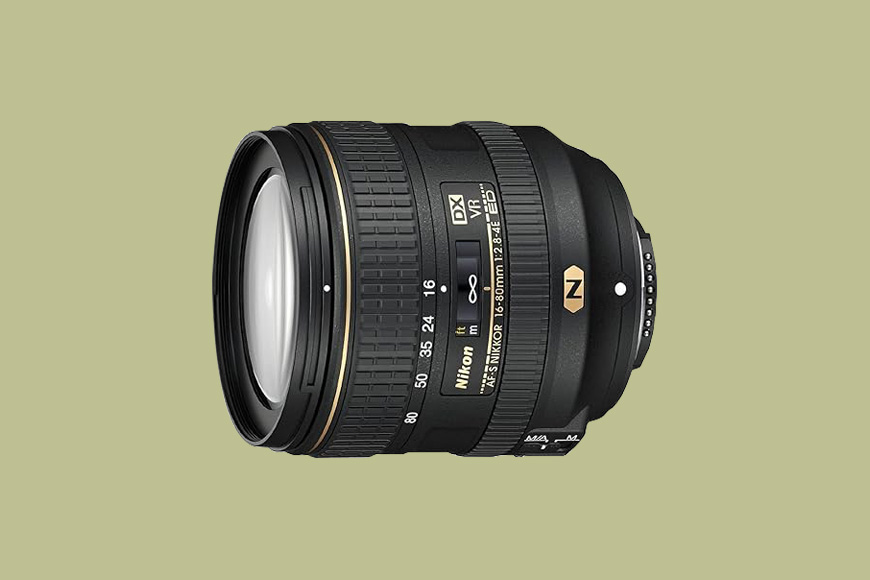
- Fast variable aperture
This lens gives you a bit more focal range to play with than the one above, and a faster variable aperture.
16-80mm gives you a lot of flexibility in terms of what you can shoot. It’s wide enough for architecture and landscapes, and also perfect for portraits and details shots.
It’s the kind of lens that, if you’re thinking of an all-around solution, this could be it.
Although variable aperture lenses aren’t the most convenient, f/2.8-4, gives this lens impressive low-light performance and creative depth of field control.
Its brighter aperture is especially good for dimly lit environments, so you can capture stunning images in indoor settings or even as the sun sets.
The lens also features Nikon’s Vibration Reduction technology, which ensures clear handheld images even at low shutter speeds and the end of the range.
The Nikon AF-S DX 16-80mm f/2.8-4E has fast and accurate autofocus, as well as Nikon’s high-end Nano Crystal Coating and Extra-Low Dispersion elements, which help reduce lens flare, ghosting, and chromatic aberrations.
This means that the images it produces are high quality and with accurate color reproduction, even in the kind of challenging lighting situations that commonly occur in travel photography.
- More: 77 Awesome Travel Tips for Photographers
Sony 16-55mm f/2.8 G (Best Sony E Zoom Lens for Travel Photography)
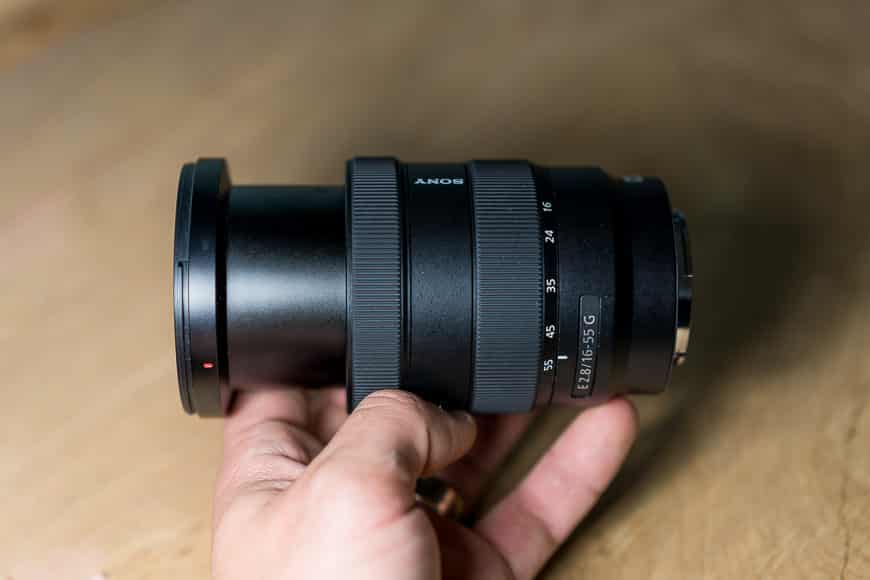
Credit: Marc Bergreen
- Great optics
- No image stabilization
This is an extremely versatile lens with a constant f/2.8 aperture throughout the focal range.
That bright aperture somewhat compensates for the lens’ lack of in-built image stabilization and allows for excellent low-light performance and creative control over the depth of field.
It’s compact and fairly light, and has a robust, weather-sealed build that can comfortably withstand the rigours of travel photography.
As photographers have come to expect from Sony, you also get excellent image quality, with sharp pictures and true-to-life colors, and great autofocus capabilities, essential for capturing those sometimes fleeting travel moments.
Best Prime Lenses for Travel Photography
In terms of both optical and build quality, nothing really beats primes.
So, if you can find one that suits your shooting style, choosing just one or two to put in your bag could be a good way to go.
The links below each section are to the full-frame equivalents.
As a focal length, 35mm is justifiably popular, as it provides a natural perspective that matches the field of view of the human eye.
They are sometimes referred to as the ‘storytelling lens’ because, given this natural feel, photographers easily feel in sync with their camera, which makes it easier to compose scenes.
They are ideal for capturing a wide range of scenarios, from street photography to environmental portraits.
Many 35mm primes feature wide apertures, such as f/1.4 or f/2, so they’re good in low light and can also handle high shutter speeds. This makes them extremely versatile.
Possibly the best lens for travel photography, and any photography.
A 24mm prime provides a broader view, allowing you to include more of a scene in your frame.
This makes it perfect for capturing expansive landscapes or architecture, particularly when you want to emphasize the scale or beauty of a location.
It’s also good for photographing, for example, bustling marketplaces or cultural events, as you can get right in the centre of the action and still fit plenty into the frame.
Despite being a wider focal length, a 24mm is also good for environmental portraits, as it can capture subjects in their surroundings, providing context and storytelling elements.
The nifty fifty is renowned for its flattering portrait perspective that allows you to isolate subjects from the background.
Many 50mm primes have wide apertures (f/1.8 or f/1.4), so you can create beautiful background blur and really emphasize your subject.
Those wide apertures mean they generally have great low-light performance, too.
50mm is also a good focal length for detail shots, such as a local artisan’s hands or the textures of street food or handicrafts.
What’s Best for Travel Photography: One Lens, Two Lenses, or a Three-Lens Kit?
Choosing the right combination of lenses for your travel photography kit is an important decision that can have a significant impact on what you can capture.
Do you travel as light as possible and take only one lens? Should you take more lenses to cover more situations?
Which focal lengths should you choose?
A telephoto lens? Zoom lenses or primes?
Let’s take a look at a few of the options.
One Lens Kit
My ideal one-lens kit would be my go-to lens for every kind of photography, a 24-70mm f/2.8, or a 24-105mm f/4.
These are generally high-quality lenses, and they are extremely versatile.
With their broad focal ranges, you can take wide-angle shots and also zoom in for portraits and other detail shots.
As you can shoot so much with them, and often won’t feel limited in any way, you can focus on being in the moment and just enjoy the photography.
Having one lens also means less weight to carry and less space taken up in your bag – perfect for those who prioritize traveling light.
If you have an f/2.8 aperture, it’s also fast enough that you can shoot in even challenging light conditions. With f/4, you may struggle more, but as a trade-off, you’ll get the extra focal length.
Two Lens Kit
My ideal two-lens kit would have a 24-70mm f/2.8 or 24-105 f/4, paired with either a 50mm f/1.4 or an 85mm f/1.2.
The 24-70mm covers a wide focal range, while 50mm and 85mm primes excel at portraits, detail shots and low-light situations.
As I’ve already run through the features of the 24-70mm and 24-105mm, I won’t repeat myself, so let’s consider the primes.
Choosing either of these primes will enhance your creativity. Their wide apertures can create beautiful background blur and enhance low-light performance.
Not only this, but shooting with primes forces you to move around more and immerse yourself in a scene to try out compositions, whereas, with a zoom lens, you can stand in one place and let the lens do more of the work.
In my opinion, when you’re traveling, anything that forces you to get more involved is a good thing.
A two-lens setup is also still relatively compact compared to a three-lens kit.
Three-Lens Kit
My ideal three-lens travel photography kit would be made up of a 24-70mm f/2.8 or 24-105mm f/4, with either a 50mm f/1.8 or 85mm f/1.2, and either a wide-angle lens (such as a 10-22mm) or a longer prime, such as a 135mm or a 200mm.
I’ll just cover the third lens here, to avoid repeating myself.
My reasoning for these two choices is that, with a third lens, you are starting to get into specialist travel photography.
The first one or two lenses are all-round options that will basically help you photograph pretty much anything.
When choosing a third lens, given it’s going to add more weight and cost, and is not totally essential, you need to pick something that will help you photograph something specific that your other two lenses might struggle with.
If you particularly like to photograph architecture or panoramas, you might want to consider a 10-20mm (or something close to those focal lengths).
If you like to take pictures with a lot of lens compression, shoot wildlife, landscape details, or creative portraits, a longer prime will definitely help.
With a three-lens kit, you’ll be ready for anything.
Single Zoom vs. Multiple Primes
When choosing the best lens for travel photography, you of course have to consider the differences between zoom lenses and primes.
If you choose to take a single zoom lens, you will have the ultimate in convenience and versatility.
You’ll never need to change your lens (or feel like you want to).
But there are limitations. They’re often not as good in low light, and they give you less creative control over depth of field compared to primes.
With primes, you get enhanced low-light performance, sharper image quality, and creative control with different focal lengths and apertures.
But, on the flipside, you’ll need to make (possibly frequent) lens changes, due to potential gaps in focal length coverage, and primes tend to weigh more.
FAQs About the Best Lens for Travel Photography
Which lens is used for travel photography?
Many lenses can be used for travel photography.
You can use a telephoto lens, zoom lenses or primes, and you can choose the focal length you need.
The important thing is that, whatever camera lenses you choose, they’re versatile enough that you can shoot in a variety of environments and situations.
What focal length is best for travel?
The best lens for travel photography in terms of focal length is the most versatile one.
Generally, if you have to choose one lens, a zoom with a focal range of 24-70mm or 24mm-105mm is best.
What is the best prime lens for travel photography?
The best prime lens for travel photography would be, depending on your shooting style and preferences, one of either a 24mm, 35mm, or 50mm. Only if you shoot wildlife would you need a telephoto lens.
What two lenses should I have for travel photography?
If you just want to take two camera lenses with you, I recommend you take one zoom lens (for versatility) and one prime (for creativity).
You'll Also Like These:

Jeff Collier is an experienced film photographer who enjoys experimenting with modern digital photography equipment, software and apps. He’s also an ex-world champion triathlete and avid cyclist, clocking hundreds of km each week in the beautiful Tweed Valley of northern NSW, Australia.
IMO Sony’s best travel lenses are the 20-70 G and the 16-35 G. I take an RX1 or the FE 28mm as a (creative) prime.
Leave a Comment Cancel Reply
👋 WELCOME TO SHOTKIT!

🔥 Popular NOW:

Unlock the EXACT blueprint to capture breathtaking iPhone photos!
The 12 Best Prime Lenses for Sony Shooters on a Budget

The Sony system is blessed with an abundance of thirdparty manufacturers making excellent glass. Many of them are available for a discount right now, so here’s a short roundup of the best autofocus prime lenses available on the FE mount, from wide to telephoto.
Third-party manufacturers make Sony’s mirrorless cameras an appealing system for photographers on a tight budget thanks to the wide variety of lenses available. Companies such as Sigma, Samyang, and Tamron have plugged a few of the gaps left in Sony’s own lineup, as well as producing a number of lenses that perform better than their expensive Sony counterparts. In addition, third-party lenses are often smaller and lighter, and with the Sony a7C about to hit the shelves, even more, customers will be looking for glass that matches the diminutive size of their body.
Here’s a list of my recommendations if you’re pondering a new prime lens but don’t want to spend a huge amount of money.
Until last year, there was a gaping chasm in Sony’s lens lineup: the system lacked a 35mm f/1.8. Sony finally pulled its finger out by releasing a lens that felt a touch high in price ($748), and now Samyang/Rokinon, has produced something that makes the Sony seem even more expensive.
It’s not clear when it will hit shelves (hopefully in the month or two), but the AF 35mm f/1.8 from Samyang is a stellar piece of glass and comes in at under $400. It's sharp, autofocus is excellent, and it is a significant upgrade over other "tiny" lenses from Samyang, as it has weather sealing. The one downside is that chromatic aberration can be a little heavy, but probably not enough to make you want to spend more on the Sony. You can check out my review here .

Samyang 35mm f/1.8. Perfect for ten days of camping and climbing.
There are a number of options if you fancy something at 35mm that’s a little slower. There’s the tiny Samyang AF 35mm f/2.8 (reviewed here ), which is surprisingly sharp given its price and pancake-esque design, and autofocus is snappy (currently $239, down from $399).
a7 fans had hoped that Tamron would provide the antidote to Sony’s 35mm f/1.8, but the Japanese manufacturer — part-owned by Sony — opted to produce something slightly odd, albeit original: a 35mm f/2.8 lens that offers a macro reproduction ratio of 1:2. At just $349 (and right now available for $299), it’s a stunningly sharp lens and has a moisture-resistant build, though the macro capabilities mean that autofocus is far from quick. Review here .

Tamron 35mm f/2.8 Di III OSD
50mm (-ish)
Sony’s nifty fifty has never compared particularly well to Canon’s 50mm f/1.8 STM , but at just $248 (currently available for $198) and regularly discounted, it’s Sony's most affordable full frame lens.

Sony FE 50mm f/1.8, wide open. Not great, but not bad either. However, why aren't there more nifty fifty lenses available for the Sony system?
Sharpness is reasonable, but the autofocus is not quiet, nor is it quick, and you might find yourself fighting with some noticeable color fringing thanks to chromatic aberration.
Quite why there isn’t another fast f/1.8 fifty on the market is a bit of a mystery. Fortunately, the lens that comes closest — the Samyang AF 45mm f/1.8 — is widely regarded as being excellent. Sharp and with zippy autofocus, it seems to be a lot of lens for just $399 (currently discounted to $329). As with other glass in Samyang’s “tiny” series, it doesn’t feel solid, nor does the plastic finish feel refined (and let's not forget that Sony's nifty fifty feels even worse), but cramming that amount of sharpness into such a compact and affordable form — with autofocus — is impressive.
(For anyone pondering a 50mm, it’s worth noting that the Samyang AF 50mm f/1.4 is currently discounted to almost half of its regular price: $699 instead of $399. Bargain.)
Sony users are undeniably spoiled for choice when it comes to affordable 85mm lenses. Firstly, Sony’s own 85mm f/1.8 is a superb lens and priced at a very reasonable $598 (perhaps part of why Sony’s 35mm f/1.8 feels overpriced at $798).
If you want to save some money and don’t mind ditching the weather-sealing, there’s the Viltrox 85mm f/1.8 II at a mere $399. As detailed in my review , autofocus is solid, sharpness is excellent, and it’s potentially the most bokeh you can get for this amount of money without forgoing autofocus. The first version of this lens magically turned into an f/1.6 thanks to a firmware upgrade, and owners such as myself are waiting to see if this Mark II edition does the same.

Viltrox 85mm f/1.8 II. At $399, this might be the most-bokeh-for-your buck lens available without opting for something that only has manual focus.
The Sony/Viltrox conundrum is further complicated as a result of Samyang taking it upon themselves to make an 85mm f/1.4 that’s the same price as the Sony 85mm f/1.8, give or take a dollar ($599). There’s few who have anything bad to say about the Samyang, and while you don’t get the weather sealing, custom button, and overall build quality of Sony’s f/1.4 GM ($1,798) or Sigma's f/1.4 DG DN Art ($1,199) lenses, you do save yourself a serious amount of cash.
And if that’s not enough, don’t forget Samyang’s ludicrously small 75mm f/1.8 . As detailed in this review , it’s not as sharp as many of Samyang’s other lenses, but the tradeoff in terms of price ($399) and convenience makes it very appealing to certain customers. I’m about to take my second trip where I’m packing as light as possible and taking only my 35mm and 75mm f/1.8 Samyang. For casual shooting, the 75mm is a great choice, and right now, you could argue that there's nothing else like it on the market.

The Samyang / Rokinon 75mm f/1.8 is a tiny lens and almost unique when you consider that there's only one other 75mm lens made for full frame cameras and that's made by Leica. Slightly more expensive, to say the least.
24mm and 28mm
Going beyond 35mm is where the affordable autofocus glass starts to get a bit thin. Three lenses come in at under $500. The first is Sony's own 28mm FE 28mm f/2 at a respectable $448. For truly affordable options, you'll be looking at the Samyang AF 24mm f/2.8 , currently available for $249 instead of $399, and the Tamron 24mm f/2.8 Di III OSD , which is a similar price with a similar discount — $249 instead of $349.

Samyang 24mm f/2.8
Perhaps being one of Samyang's earlier lenses, the 24mm f/2.8 isn't quite on par with the manufacturer's other lenses, but this thing is tiny. Not quite as pancake-y as the 35mm f/2.8, but still insanely light (4.23 oz / 120 g) and low profile to the point that it will turn an a7C into a point and shoot. You can read my review here .
The 24mm f/2.8 from Tamron is almost identical to its 35mm sibling, offering stunning sharpness and fantastic macro performance (1:2), but compromising significantly on autofocus speed. Check out my review here .

Tamron 24mm f/2.8. Super sharp and with great macro capabilities.
There are definitely a few lenses that I've missed on this list, so feel free to point out any glaring omissions in the comments below. I've tried to keep my suggestions under $400, so please keep that (and autofocus) in mind!
If you've got an urge for a new lens but can't justify spending a chunk of cash or perhaps you want something lightweight and compact, there's a veritable smorgasbord for Sony users. Will you be buying any of these?
Andy Day is a British photographer and writer living in France. He began photographing parkour in 2003 and has been doing weird things in the city and elsewhere ever since. He's addicted to climbing and owns a fairly useless dog. He has an MA in Sociology & Photography which often makes him ponder what all of this really means.

For me, corner sharpness is most important because otherwise, the kit 28-70 lens is fine. So far, the Samyang 75 1.8 and the standard Sony 50 1.8 FE are the least expensive while getting close to the more expensive ones. As for a 24-28mm, I haven't made a comparison decision yet. I'll be saving up.
This article certainly helps me to make some budgetary decisions! I've been using vintage lenses exclusively on my A7R2 for my favorite subject...my 28-week old son Dylan (example below using a 58mm Topcor). It's easy using manual focus as he doesn't move around all that quickly...but...when he does get to that point where he's darting around the house or backyard, I'll definitely benefit from an AF lens. I do like saving money though so, I appreciate the suggestions in this article. I'll certainly be doing my homework and test-driving a few of them. My interests are in that 75mm and either the 24mm or 28mm. Thanks for providing a starting point!

As far as primes stay Sony, fast and bokeh is always best with manufactures! But if first starting out go with Canon FD with adapter to learn a lens mm and prism filters get awesome effect that digital will never get! Remember 98% of shots will be at f/8 but if portraits f/wide open. The lenses to carry always 1224 f/4, 24240 both fit in a teardrop sling bag. For the widest Voigtlander 10mm f/5.6 (can be used for astro Milky Way at 30s with pin point stars with no pin cushion effects) and for max reach 200-600mm with 2x teleconverter 1800mm (in APS-C). Example I will go out at night for Milky Ways with the 1224 on A7S and the 24240 on the A7iii for wildlife (birds) while walking back through a marsh with sun behind, silent mode (saves the shutter), APS-C gets 360mm (center of sensor best AF) at 10 fps in flight shots motion stops sharply. Most time will carry clear trash bag to change lenses (no salt air in camera body) using only A7iii for both jobs and lightest carry bag (all night/ morning gets heavy). Lastly Primes will be on your shelves mostly not in your bag. Oh for a very small 12 to 27 the 1018 f/4 in FF 1218 (remove light shield) and aps-c 15-27 IS, AF, screw on filters, camera will say 12mm BUT FOV is 18mm but looks like 12mm with pin point stars (used for 2 years before the 1224). Go for value and staying power!

The sony 35 1.8 only is expensive in US. In Spain, diference is merely 100€ buying in amazon so I find it preferable over the samyang and its variable QC...
I am a Sony portraying a relatively new and when I buy a7r III body, at the same time I bought the Sigma 50 / 1.4 lens ART and just less than a week ago for budgetary reasons I bought the Sony 28/2 lens. In less than four weeks, I had time to get used to that Sigma image quality, and I was a little amazed at how big the difference could be between those two lenses when the Sigma is really sharp and Sony is only mediocre. In fact, when I used to shoot with the Fuji X-T2 body, for example, Fuji's own 35/2 lens, which isn't spoiled by the price, produces a much sharper image in combination than the a7r III + Sony 28/2 combo, so I really can't recommend that Sony lens if the main priority is the quality of the image quality.
Then again, it's good that it's pretty quick to specify, smaller and light, and since it's not an expensive purchase when used and yet it gets along with the image quality, that's a recommended purchase when used specifically, unlike the new one, where I'd urge you to save a little more and end up somewhere other option.
so samyang is best value for money
See my first comment above. As for the wide angle, the Tamron 24 seems to be the best, cheap option. As for a zoom, the Sigma Art 24-70 2.8 is a bit more than all three but heavier.

Should You Bring a Camera When You Travel or Is a Phone Enough?
F or most travelers, the smartphone in your pocket works just fine for taking photos of adventures. But what are you missing by relying on your phone alone? I used my recent trip to Germany to explore when a casual sightseer would benefit from having a dedicated camera or if their phone would be enough.
While everyone's kit is different, most travelers won't be hauling around a DSLR or pro-quality mirrorless camera. Instead, they'll debate between buying a fancy new phone or a more affordable everyday mirrorless camera. (Though there are point-and-shoot options if you want a standalone camera, they may not outstrip your phone's photo capabilities.)
I'm no pro photographer, so don't expect expert advice on how to get the most out of this kit, but for casual photo takers who leave their camera on the auto settings, this is a good comparison to see what each device can handle without much fuss amid a busy trip abroad.
My kit isn't the best you'll find, but it's probably not far off from what many travelers may pack in their pockets and bags: my personal iPhone 12 Pro, a Samsung Galaxy S22 Ultra (to test a more camera-intensive phone), and a snug Sony ZVE-10 mirrorless camera with a Sigma 16mm f1.4 DC DN (an affordable prime lens).
Here's the breakdown for what each device did best -- and what they couldn't do.
iPhone 12 Pro
The iPhone 12 Pro is a few years past its October 2020 launch date but still plenty capable, and its photo capabilities are probably similar to what many older premium and newer cheaper phones can achieve. When it debuted, the iPhone 12 Pro retailed for $999 (£999, AU$1,699) but years later it isn't really sold anywhere aside from refurbished at sub-$500 prices. You can still pick up a stock iPhone 12 on Apple's website for $599, but it lacks the 2x telephoto lens.
The iPhone 12 Pro took basic photos well, albeit with the warm tones typical of iPhone photos. Images I shot didn't have quite the same color accuracy as the Samsung S22 Ultra or the Sony ZVE-10. Still, the iPhone 12 Pro was great at taking daytime shots of streets, museums and breezy lunches. It struggled with dimly lit dinners and at night, with photos having a grainy texture from image noise.
Germany Travel Photo Comparison: iPhone 12 Pro Example Photos
Another limit was the iPhone 12 Pro's 2x optical zoom, which was far inferior to the Samsung Galaxy S22 Ultra's telephoto capabilities. Since I was mostly seeing landscapes, I rarely felt the need to zoom in on a distant subject. The ultra-wide camera was more useful, and its 13mm-equivalent focal length allowed me another option to the 26mm-equivalent main camera for framing a specific shot.
In head-to-head comparisons with the mirrorless camera, the iPhone 12 Pro held up surprisingly well. The phone captured near and background distant subjects in crisp detail. The mirrorless camera was more selective in its focus, largely homing in on one or the other and requiring a bit more finesse.
As I was using the iPhone for every other travel-necessary app like navigation and wireless payments, it was in my pocket every day and wasn't a burden to carry. That meant it was on-hand for me to take quick photos out the windows of our train or rental car of passing scenery at just the right time.
Samsung Galaxy S22 Ultra
While superseded by this year's Samsung Galaxy S23 Ultra, the Samsung Galaxy S22 Ultra I took on my trip is still a camera powerhouse. It has a 108-megapixel main camera and a 12-megapixel ultrawide camera with 120-degree field of view, but it's really known for its zoom photography. It has not one but two telephoto lenses: a 10-megapixel with 3x optical zoom and a 10-megapixel periscope-style capable of 10x optical zoom.
As expected, the Galaxy S22 Ultra took great photos at a distance. Did I need zoom photo capability? Not really! Most of my subjects were 20 to 50 feet away.
Unless, of course, you're taking shots of distant buildings, like the Neuschwanstein Castle on Germany's southernmost border, nestled in the foothills of the Alps within spitting distance of Austria. It was nice to have more control to frame the photos with the zoom capability, even if I didn't need the 100x "space zoom." The feature combines optical and digital zoom with AI tricks to home in on a cropped-in corner of zoomed-in image. The 30x was enough and rarely necessary. Regardless, the S22 Ultra's 10x optical and digital hybrid zoom produced far better photos than the iPhone 12 Pro's grainy 10x digital zoom.
Here's the Samsung Galaxy S22 Ultra's camera from the road at the foot of a trail leading up to Neuschwanstein, with shots from the main camera at 1x, 3x, 10x and 100x zoom.
Germany Travel Photo Comparison: Samsung S22 Galaxy Ultra, Castle Street
Compare that to the iPhone 12 Pro's main camera at 1x, 2x and 10x.
Germany Travel Photo Comparison: iPhone 12 Pro, Castle Street
The Galaxy S22 and iPhone 12 Pro both did a decent job shooting photos with a mixture of dark and light foregrounds and backgrounds, especially with bright skies that can be easily washed out. Below is a shot from up on a balcony of the Neuschwanstein castle, looking west into the valley.
But it's easy to see how cool the Galaxy S22 Ultra's zoom capabilities are when perched above the landscape and using successive zoom intervals to get closer shots of a subject.
Germany Travel Photo Comparison: Samsung Galaxy S22 Ultra, Valley Zoom
Lastly, here's a simple comparison of shots of the castle itself, with the Galaxy S22 Ultra's main camera versus the iPhone 12 Pro's camera.
The Galaxy S22 Ultra is one of the best phones we've tested, which garnered a CNET Editor's Choice Award in our review . It's more convenient to handle than my mirrorless camera, though it doesn't have as many photo settings.
The Galaxy S22 Ultra is a large phone, so it took up a lot of space in my pocket. Even if I were to buy it to replace my iPhone 12 Pro, it would still be cumbersome to yank out for casual photos. As it was, there were a handful of situations where I might have lost the S22 if it had been in my pocket instead of the smaller iPhone 12 Pro, including a bobsled-like roller coaster on a hillside in the middle of the Black Forest. (Which, sadly, wouldn't allow phones on the course, but there are ride-through videos on YouTube .)
Sony ZVE-10 mirrorless camera
The Sony ZVE-10 is aimed at vloggers with its 4K video shooting and light weight, but that also made it great for taking still photos with its 24-megapixel resolution. The camera is reasonably affordable at $700, and has swappable lenses via a lens mount.
I used the ZVE-10 with a Sigma 16mm f/1.4 prime lens I picked up for $399 to take better product shots. The Sony body and Sigma lens combo took superior photos to either phone in medium to close range. Thanks to the ZVE-10's crop APS-C sensor, the 16mm lens was more like a 24mm lens, and had essentially the same field of view as the standard rear cameras on the iPhone 12 Pro and Galaxy S22 Ultra.
For the majority of the trip, the short-range prime lens was fine, and I didn't miss being able to zoom in on distant objects. You can get pretty close to any subject that's worth taking photos of, though I would want a telephoto lens at a concert or for shooting wildlife. I did miss not being able to zoom out with either phone's ultra-wide lenses, especially in cramped quarters like awkwardly small museum rooms.
The ZVE-10 performed fine with landscape shots but excelled in reasonable-size enclosed spaces, capturing greater color contrast and lighting/shadow variance. Compare these photos below of a fresco on a low roof in the Cologne Cathedral, shot with the ZVE-10 and the iPhone 12 Pro, respectively.
When shooting close subjects, the ZVE-10 excelled at capturing evocative lighting, and the f/1.4 Sigma lens' natural bokeh led to moodier shots compared to the uniform brightness of the iPhone 12 Pro.
And while the iPhone 12 Pro produced uniformly brighter and crisper photos, the post-processing to get such clarity led to some flattened color and shadow. In photos of this iron statue of the Chinese mythological aquatic monkey demon Wuzhiqi located in Berlin's Humboldt Forum, you can see more detail in the iPhone 12 Pro's shot, but it loses the red-brown tone from years of oxidation.
It was also easier to get the ZVE-10 to produce a depth effect naturally. With the iPhone 12 Pro, portrait mode requires more fiddling and an ideal distance between the phone, your subject and the background. But the camera's depth effect made it tough to keep everything in focus when I was taking photos of food and wanted to show the whole plate.
Unsurprisingly, the ZVE-10 and lens far outweighed the phones. Though not enough to be cumbersome, the weight and size differences are noticeable. The camera and lens fit snugly in my compact camera bag, which stayed out of the way while slung over my shoulder. But the camera was more annoying to lug around and pull out to take photos than a phone in my pocket.
Needing to manually upload my photos was a bit annoying, too. The Sony Imaging Edge app let me send photos directly from the camera to my phone, but it's clunky for bulk uploads. And forget about handing your fancy mirrorless camera over to a stranger to take a photo of your traveling party for fear of them dropping it or not knowing how to use it. Thankfully, the ZVE-10's rotating display meant I could angle it forward to pull off selfies, which consequently took better shots than either phone's front-facing camera but didn't capture as much subject matter. Both the iPhone's and Galaxy's selfie cameras had wider field-of-views.
Lastly, the mirrorless camera may have more potential for better shots since it can save images in the RAW format, which gives photo editors a lot more data and freedom to tweak. It's worth pointing out that my iPhone 12 Pro can shoot in Apple's ProRAW format , while my Samsung Galaxy S22 Ultra can shoot in Expert RAW format via a separate app (though it's natively in the camera app as of the Samsung Galaxy S23 series). Both can be edited much like standard RAW formats. I deliberately shot photos in JPG format for all devices in this test, since most travelers will simply point and shoot with the default format. All these photos could certainly look better with some Photoshop touch-up.
Ultimately, this was an unscientific test rather than a thorough field guide. I set out wondering whether my daily smartphone would miss out on any particular travel shots that a camera-focused phone like the Samsung Galaxy S22 Ultra or my mirrorless camera would be capable of picking up.
Most of the time the iPhone was fine, but there were edge cases where the S22 Ultra and ZVE-10 outperformed my older iPhone. And as I am not an especially gifted photographer, I acknowledge that someone with real skills could finesse far better images out of either the Galaxy S22 Ultra or the ZVE-10 that could likely put the iPhone to shame in all situations.
Also, your mileage will vary depending on which kinds of photos you want to take. If you absolutely need to zoom in on distant subjects, a phone like the S22 Ultra is the right choice -- or you could buy a telephoto lens for your mirrorless camera.
But from citywide landscapes to museum art piece shots to selfies, the iPhone 12 Pro handled nearly everything I needed it to do. It also helped that I could effortlessly post my photos on social media from my main phone rather than having to transfer them from the mirrorless camera. That's essential to the travel experience, as I'd add a photo to my Instagram story and get friends responding in minutes with recommendations for historical monuments and food in my area. And it's not like my mirrorless camera could make calls or text.
This isn't necessarily an iPhone recommendation, just reiterating that your daily driver will be just as useful while traveling as it is at home (but better cameras and a quality ultra-wide lens certainly help). The shots you'll take of yourself and peripatetic partners will mostly be 10 to 20 feet away in bright daylight and low light, with some night scenes here and there. Perhaps a higher-end camera would capture more artistic and high-quality depth shots, but you'll probably want to capture the fleeting and low-key moments more than the artfully posed ones.
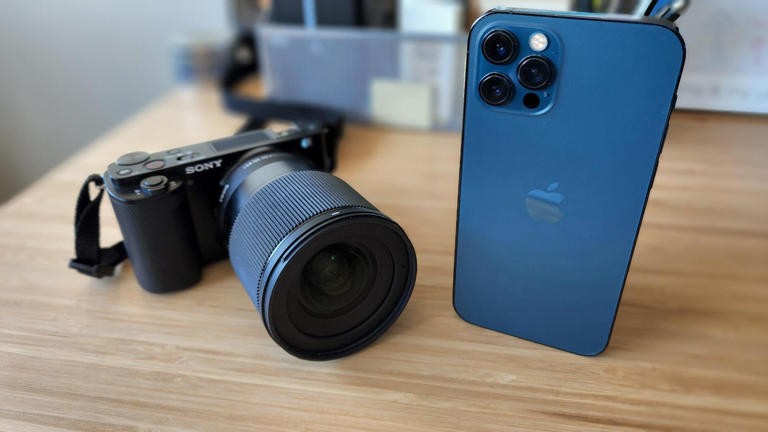
Sony’s new 16-25mm is its lightest and smallest ever ultra-wide f/2.8 zoom lens, but it comes with a catch
Sony FE 16-25mm F2.8 G majors on size over zoom range
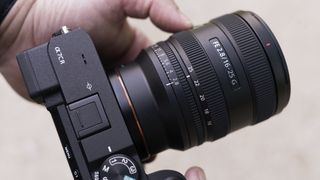
Sony has announced a new FE 16-25mm f/2.8 G ultra-wide zoom for its full-frame Alpha cameras, featuring an unusually compact design for a constant-aperture f/2.8 ultra-wide zoom. It makes an ideal pairing with the Sony FE 24-50mm f/2.8 G announced in February.
These two new lenses are designed for no-compromise performance in a smaller package, to meet the needs of photographers, vloggers and content creators who might find Sony’s regular zooms just a little too large.
The main compromise here is in focal range, with both lenses trading size for reach. The FE 16-25mm f/2.8G joins a market where the typical range for an ultra-wide zoom is 16-35mm, though if it’s used in conjunction with the new FE 24-50mm f/2.8 G you'll get a combined focal range of 16-50mm with no gaps.
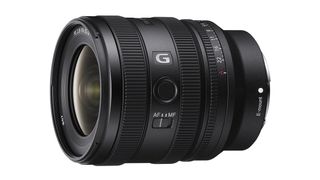
Sony FE 16-25mm f/2.8 G specifications and features
The FE 16-25mm f/4 G might skimp on focal range, but not on specifications. Sony is aiming for a ‘no compromise’ lens which offers premium optical performance, AF and handling.
The optical configuration includes three aspherical lenses, one aspherical ED (extra low dispersion) element and three regular ED elements. In addition to stellar sharpness and detail, close up performance is decent, with a minimum focus distance of 7.08in / 0.18m (AF), 6.69in / 0.17m (MF) at 16mm, and a maximum magnification of 0.2x (AF), 0.23x (MF). An 11-blade circular aperture has been used to produce smooth bokeh.
Autofocus is taken care of via two linear motors to provide fast, quiet AF with low vibration. They drive an internal focus group, so the lens does not change length as you focus.
Sony appears to have spared no expense on the exterior, either. As well as regular focus and zoom rings, there’s an aperture ring with switchable click stops and a customizable focus hold button. Internal seals are used to provide dust and moisture resistance, and the front element has a fluorine coating to repel fingerprints, dust, water and oil.
Get daily insight, inspiration and deals in your inbox
Get the hottest deals available in your inbox plus news, reviews, opinion, analysis and more from the TechRadar team.
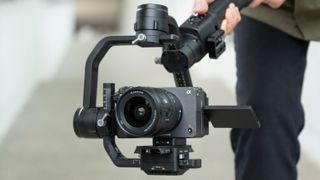
At the front there's a 67mm filter thread, the same size as the filter thread on the ‘twin’ FE 24-50mm f/2.8 G lens, which will make the FE 16-25mm practical for both landscape photography and video.
The curtailed focal range might raise a few eyebrows, of course. In fact, it corresponds to a zoom range of just 1.56x, where a regular 16-35mm zoom has a 2.1x zoom range. This is clearly the price of getting a constant f/2.8 zoom in a compact design.
Sony FE 16-25mm f/2.8 G alternatives
Measuring 74.8 x 91.4mm and with a weight of 409g, the new FE 16-25mm f/2.8G is certainly smaller and lighter than the Sony FE 16-35mm f/2.8 GM II , as well as being half the price, so if you can do without that extra 10mm focal range or you have it covered by other lenses, it certainly starts to make sense.
For comparison, the Sony FE PZ 16-35mm f/4 G lens is actually a little smaller, so if you’re looking for a power zoom lens for video and don’t mind a maximum aperture of f/4 rather than f/2.8, that’s a strong contender. There’s also an older Vario-Tessar T* FE 16-35mm f/4 ZA OSS lens in the Sony lineup which is scarcely larger than the new 16-25mm and less expensive too, though not really on the same level optically as later lenses.
The Sony FE 16-25mm f/2.8G should be on sale shortly at an anticipated retail price of £1,250 / AU$2,199 (about $1,555).
We're yet to get our hands on the 16-25mm, but if it's anything like the 24-50mm that we've already reviewed, it'll be a solid addition to Sony's full-frame Alpha lenses, especially for filmmakers and landscape photographers on more of a budget.
You might also like
- Best Sony lenses 2024: 16 top lenses for Sony mirrorless cameras
- Sony could soon announce the ultimate lens for wedding and event photographers – the world's first 24-70mm f/2.0
- Sony's smallest ever full-frame f/2.8 zoom is a powerful everyday lens with a small compromise
Nikon Z 28-400mm f/4-8 VR review: your one travel lens
It’s finally happened: Canon opens up its RF-mount to Sigma and Tamron lenses
Quordle today – hints and answers for Friday, May 3 (game #830)
Most Popular
- 2 Another major pharmacy chain shuts following possible cyberattack
- 3 Prime Video has a hit new horror show with 100% on Rotten Tomatoes
- 4 Scientists design super-battery made with cheap, readily affordable chemical element, Na — Salt-based cell has surprisingly good energy density and charges in seconds
- 5 Tesla EVs could get a massive range boost from new battery tech that promises a 373-mile range from a 10-minute charge
- 2 Tesla EVs could get a massive range boost from new battery tech that promises a 373-mile range from a 10-minute charge
- 3 Hisense’s new 5,000 nits mini-LED TV is so bright you may need to wear shades
- 4 Hibernating cluster wakes up to map the entire Internet - but what could it be planning?
- 5 'If I buy cheap, I buy twice’: Loewe explains why its new OLED TV deal with LG helps it make a repairable premium TV that can last you much longer
PRIME MEMBERS
Free shipping for prime members on woot.
Woot! customers who are Amazon Prime members can enjoy special shipping benefits on Woot!, including:
- Free Standard shipping on Woot! orders
- Free Express shipping on Shirt.Woot orders
Amazon Prime membership required. See individual offer pages for shipping details and restrictions. Not valid for international shipping addresses.
Get started by logging in with Amazon or try a 30-day free trial of Amazon Prime *
* Re-login required on Woot! for benefits to take effect
Sony SEL24105G Full Frame E-Mount 24-105mm F4 Constant Lens Black
Hurry only 1 left!
Want more great deals? Sign up for our Daily Digest emails!

- 4 aspherical lenses and 3 ED (extra low dispersion) lenses minimize aberrations for high edge-to-edge image quality across the zoom range. Angle of view (35mm) 84 - 23
- Versatile solution for varied photographic use over a focal range from 24 to 105mm
- Fast, accurate, quiet autofocus coupled with the constant F4 aperture ideal for photos and videos
- Professiol and reliable ergonomics with precise manual focus and a customizable focus lock button
- Lens Hood, Front Lens Cover, Rear Lens Cover.NOTE If the lens is not properly attached, the connection points that allow communication between the camera body and the lens do not contact each other. Do not press the release button on the lens, but turn the lens clockwise and attach it to the camera body until it clicks
Shipping Note: Shipping to Alaska, Hawaii, PO Boxes, and APO addresses is not available for this item
Warranty: 90 Day Woot Limited Warranty
- (1) Sony SEL24105G Full Frame E-Mount 24-105mm F4 Constant Lens Black
Sales Stats
Purchaser experience.
- 0% first woot
- 0% second woot
- 100% < 10 woots
- 0% < 25 woots
- 0% ≥ 25 woots
Purchaser Seniority
- 0% joined today
- 0% one week old
- 0% one month old
- 0% one year old
- 100% > one year old
Quantity Breakdown
- 100% bought 1
- 0% bought 2
- 0% bought 3 or more
Percentage of Sales Per Hour
Woots by state, best sellers in electronics.

Viltrox announces AF 40mm F2.5 Z, a full-frame autofocus prime lens for Z-mount
Viltrox has announced the new AF 40mm F2.5 Z lens for full-frame Nikon Z-mount cameras. The lightweight prime lens provides a normal field of view, roughly approximating the perspective of human vision.
Optically, the AF 40mm F2.5 Z features an internal focus design built around ten elements in six groups. This includes one ED lens, one aspherical lens, three high-refractive index lenses, a high-definition nano-multilayer coating, and a front lens element that includes an anti-fouling coating. The close focus distance is 0.34m (13").
The lens includes a 52mm filter thread and features a 7-bladed aperture.
The AF 40mm F2.5 Z weighs a relatively lightweight 180g (6.3oz). A stepper motor drives autofocus, and Viltrox says the lens is compatible with face and eye recognition systems. It also says the lens should be suitable for shooting video thanks to low distortion and minimal focus breathing.
On the tech side of things, Viltrox says the lens supports full EXIF transmission to the camera, and it includes a USB interface to support future firmware upgrades.
Viltrox says the AF 40mm F2.5 Z will be available "as soon as April." It has a suggested retail price of $158.
Sample gallery
Please do not reproduce any of these images on a website or any newsletter/magazine without prior permission ( see our copyright page ). We make the originals available for private users to download to their own machines for personal examination or printing (in conjunction with this review); we do so in good faith, so please don't abuse it.
Viltrox AF 40mm F2.5 Z specifications
Gear in this story.

- Discuss in the forums
- See full product details
- View sample images
When you use DPReview links to buy products, the site may earn a commission.

I don’t really see the value add here Vs say the 20 2.8 vs 20 1.8.
Maybe if they would have added an aperture ring or something.
40mm is my preferred focal length for my "bushscapes", and I go about f8 and I print big. I used a canon 40mm on A7R4 with adapter until it was stolen (along with other gear that I mostly got back). I have not replaced it yet, preferring to wait for native mount. I also have the Nikon 40mm on Z7, and it's good but not excellent at f8 or so (meaning mine does not get sharper when stopped down) So questions: (1) It seems there has not been an E mount version from Viltrox yet? (2) Has anyone reported this Viltrox is sharper than the Nikon at those kind of apertures?
It's slow (F2.5)... it's a boring focal length... it offers very minimal subject isolation or bokeh... it's not weather sealed... and at 13", it doesn't focus close enough for effective macro use. Regardless of how well it's built... it offers just about nothing I'm interested in... :P
It is very cheap, slow is a relative term, and boring is an opinion.
40mm is a very popular focal length for street photography which is usually shot around F8. Street shooters have no use for macro, bokeh or subject isolation.
I’d really like something for my Nikon Z that performs at least as well as the Nikkor 40mm f/2 but it’s a cheap plastic build. Sadly, the Viltrox check the box for the focal length, probably checks the box for build quality, but not for optical quality. Alas, I’ll have to keep waiting.
The z40mm f/2 already exists. I can't imagine it gaining much traction.
From my viewing of the samples, the Nikkor 40/2 has significantly better edge performance at f/2 than this does at f/2.5.
So you do get some added value for the extra you pay for the Nikkor.
For landscape shooting in f5.6-8 apertures this Viltrox looks sharper and has more contrast then Nikon 40/2 + almost no distortion. This is because Viltrox put better optics - more glasses + ED one. In my view Viltrox should put here one more ED glass and one aspherical to make it exellent/very desirable and selling it for Nikon price. This 40mm prime would be much more tempting not only for landscape shooters.
Are you sure the optical formula used just automatically gets better by randomly adding special glass to it?
I think an optical assembly needs to consider any special glass as a component of the whole design, some designs call for ED in the designs while others do not.
What Poppamies said. It particularly surprises me when someone calls for aspherical. Adding onion rings to bokeh is really for very niche tastes, I would say.
40mm for landscapes...with a prime?
I do use my EFM22/f2for cityscapes on occasion as its a superb workaround lens, but ..okay I guess.
yes, my best trio for landscape are 24/40/75mm
>Poppamies right, any glass should be considered as a component of the whole design, that's why I think Viltrox is sharper in f/5.6-8 vs Nikon 40/2 because of its design formula.
Maybe dpreview can answer this question. Do Viltrox license the Z mount or have they reversed engineer it as I hear many Nikon users claiming. I find it hard to believe Nikon would have sat by idly while Viltrox has released so many Z mount lenses and there are a lot more to come. Viltrox had a cease and desist order from Canon though for their AF lenses which reversed engineered the RF mount. But Canon acted fairly quickly.
I have my eyes set on the 50 f/1.2, 85 f/1.2 and 135 f/1.8 LAB lenses for Z mount reviews pending.
Reverse engineering for interoperability is generally not illegal. The legal precedents go back some 40 years. You just have to do it in a protected workflow, like an isolated A-team/B-team approach. The A-team tears the product apart and writes as thorough a spec they can for the interface. The B-team designs a new product to conform to that spec. The A and B teams must not be allowed to communicate except for the delivery of that spec.
The Viltrox/Canon kerfluffle is most likely indicative that Viltrox didn’t do due diligence in separating teams, or did something stupid like copying actual Canon software or hardware designs, something Canon's own IP engineers could find by tearing apart a Viltrox product or two.
On Viltrox's web site, they purposefully misspell Nikon as "Nikno":
https://viltroxstore.com/collections/z-mount
It seems unlikely that Viltrox would be able to obtain a license and technical specs from Nikon but then have to resort to misspelling their name. Tamron doesn't have to do this silly stuff and uses Nikon's proper name on their product pages.
But even if Viltrox reverse engineered the protocol in a legally passable manner and tiptoes around trademarks, what do they do about patents covering Z-Mount?
I tried to find some list or annoucement of exactly who licensed the mount on Nikon's own web site but could find nothing. I really don't understand why camera makers are so secretive about this. I've asked this exact sort of question on DPReview a few times before but noone seems to know for sure.
@zkz5 "Purposefully" and "resort to"?
I'd say it's a typo that keeps getting copied and pasted, especially since they spell "Nikon" correctly in three of the twelve lenses on that page, including the new 40mm f/2.5. They spell it correctly in the descriptions on the individual lenses
I think you're dealing with Hanlon's razor here.
> what do they do about patents covering Z-Mount?
I can't imagine what they would patent on the physical Z-Mount itself. It doesn't appear to be a unique "invention" within the framework of intellectual property law.
@Joseph S Wisniewski: Ah, you're right, they do spell it correctly a few times. But given how often they misspell it, I wonder if "Nikno" was what they meant to write and Nikon is a "mistake", possibly thanks to autocorrect.
"I can't imagine what they would patent on the physical Z-Mount itself"
Here's what appears to be a Z-mount patent:
https://patents.google.com/patent/US20180046066A1/en
That's actually from a discussion thread elsewhere here on DPR. This is an autofocus lens, however, so even if there physical bits were un-patented they'd still be foul of any patents on the communication protocol.
"It doesn't appear to be a unique 'invention'"
I completely agree, but that doesn't mean they weren't granted a patent. Patent trolling is a well-known phenomenon. Nikon may have filed a patent for no reason other than restricting third party lenses in the same way Canon has. The mystery at hand is why they haven't actually done so yet.
Why do you find it hard to believe Nikon turned a blind eye to Viltrox? (when it benefited them) All the evidence points to Sony doing the same thing with Samyang and Viltrox... CaNikon never took legal action towards Sigma and Tamron either and the latter definitely reverse engineering EF & F mount... Canon doing so on RF mount is actually the more out of the norm behavior.
" Nikon may have filed a patent for no reason other than restricting third party lenses in the same way Canon has. The mystery at hand is why they haven't actually done so yet. " -zkz5
Doesn't seem like a mystery to me tbh...
"Why do you find it hard to believe Nikon turned a blind eye to Viltrox?"
I never said I found it hard to believe they turned a blind eye to Viltrox. Rather, I said I think it is unlikely that Nikon licensed Viltrox. They are indeed clearly turning a blind eye toward Viltrox as Viltrox was able to release 10 AF Z-mount lenses so far.
You have a point that Canon's squashing of third parties is more the exception than the norm though. I just kind of assume Canon and Nikon will follow suit with each other. Maybe not with these unlicensed third parties.
" I never said I found it hard to believe they turned a blind eye to Viltrox "
That was a reply to the OP of the thread, who literally said that. Apologies for the confusion. I think Nikon smartly realized this situation benefits them, just like it benefitted Sony. Canon seems to wanna keep a tighter grip on their ecosystem and not have 3rd parties filling in gaps, in that vein they've released more low end lenses.
Z16-50 makes a handy dandy 24-70 even if it is a bit slow. If I need f2.8 I have the Siggy 17-50. My Z7 has plenty of pixels for DX.
Thanks to the enormous Z mount, all 3rd party lenses have very nice big a.s.s :)
Thanks to the enormous Z mount, I've never found a Nikon made Z mount lens that's less than 'excellent' optically. Even the cheapo 16-50mm APS-C lens and so on. Use what camera you want for size/ergonomics, features, etc...but there's no denying that (Nikon made) Z mount lenses are generally superb, when compared to what Nikon used to have (F mount). I've had mediocre Sony lenses on the Sony bodies I've owned, but I've yet to find a mediocre (optically) Z mount lens since I started using the Z mount in 2018. Besides, not everyone cares about having a tiny body/lens combo, so it's unusual to mock that in 2024 when there are so many choices for everyone. Something for everyone these days.
@D200_4me: Oops, someone sounds insecure... :)
I don't have the lens in this article. Nothing to be insecure about. Why would you feel the need to mock the lens mount if you didn't have some insecurities yourself? :-)
P.S. Anyway, I should know better by now to comment in the news section. There's always lots of pettiness and brand dogma. I don't even participate in the forums much anymore either. It's more enjoyable to just go out and shoot and I share my photos for the world to see on my website, unlike many others that like to tell people what to do and never really show us their work so we know if we should take their advice or not (because if someone isn't shooting what a person is asking about, then that person's advice then doesn't have much meaning to someone looking for help). Again, it's odd that you'd call me insure when you started out making fun of the lens mount and all I did was share my experience with that mount. Maybe you shouldn't start out with brand bias and making fun of other cameras if you're really looking for a real conversation about the products.
@D200_4me: wow, somebody is so insecure...I said "3rd party lens with Z mount has nice big a.s.s" (compared to their peers for other mounts). Did I say something about the optical performance of naive Z glasses? Whether you participate in the forum or not, it's your choice. And I think you made a right decision due to your insecurity and sensitivity :)
You said thanks to the enormous Z mount. Insinuating it's a bad idea because all the lenses have to be big. I'll stick around and post now and then, despite childish folks like you. There's still plenty of good content here otherwise. :-)
Sorry, one last thing to end my part of this 'chat'. I think you can tell a lot about a person by the way they treat strangers. I replied to your original post with some comments about my own experience with this mount/lenses and there was no personal comment or insult made to you. It was just gear talk. You on the other hand replied with a snarky insult (and you apparently didn't think I had the right to reply to that petty comment, so you had to double down with more personal comments in your next reply), ...and though you know nothing about me and how I treat others day to day. This is what I mean when I said I should have learned my lesson about posting comments here, because this sort of nonsense happens. It's just camera gear and gear talk. There's no need to make any personal comments to anyone, especially about something as silly as camera gear.
D200_4me: Well, you can keep mumbling on and on and on. I'm not that sensitive to get offended, like someone. If you think I insulted you, so be it. Goodbye sensitive kid :)
Honestly this is a factor in keeping me away from Z mount. The aesthetics of the Zf with 3rd party lenses are ruined by the large mount size. The Voigtlander lenses would otherwise look incredible with it, for example, but they are forced to bow out at the back to fit the mount. Looks janky. Mistake to stray so far from everyone else here.
Lens lineup for the Z mount in general has long been a pain point for users, but for the larger bodies that isn't much of an issue now. If you want native APS-C lenses for the APS-C bodies or small prime lenses for the Zf, yes...choices are pretty limited. I don't think the Zf style body is Nikon's bread & butter though (where they make all the money). They'll likely be slow about making whatever small lenses they are able to design for the FF Zf, in my opinion. The Zf is one of those specialty cameras and you have to REALLY want that body style to buy one, because let's face it...it's not an ergonomic camera. It's made for looks (but yes, it does have great performance too). Mostly made for the appearance though in my opinion.
withoutid Pulling the "you got offended" card when someone provides useful info instantly proves that it's in fact you who are offended and insecure. You can't handle that someone actually provided facts instead of brainlessly playing along with your boring jokes. There's actually a word for someone like you, anti-intellectual. Someone who can't handle facts and who takes pride in being clueless.
Ultimately, I just want everyone to have a good experience here, myself included. I've seen too many cases where people give rude comments to someone genuinely looking for help. Example: Someone asks how to use a certain feature and it's pretty obvious how to use that feature (for experienced users), but for a new/less experienced person, they honestly don't know and want help....but someone will reply back with a silly comment like "Ever heard of a user manual?" I know it's the internet and not always to understand someone's intent when it's just text and when we have international users here and aren't native English speakers, so sometimes things can get confused, but sometimes people are just rude or a bit childish even. So when I replied and gave my thoughts on this lens mount as someone that's used it on 6 different bodies now, I admit it rubbed me the wrong way. I should have just left it alone and not replied again. Oh well. Time to move on.
@Nikoolix: another day, another Nikon fan gets hurt because 3rd party lenses has nice big a.s.s with Z mount. Can you provide a counter example for Nikon Z aps-c body? I bet you can't (:
withoutid Another day where you can't stay on topic without resorting to insults, shocker! You assuming that someone has to be a Nikon fan just to provide factual information tells us everything about your narrow mind. I'm not actually a Nikon user since many years ago.
If you say that 2+2=7 and people try to correct you it's not because they're sensitive math fans, but because you are wrong and deserve being told off, period. But to someone like you who can't handle facts, being corrected will usually result in a tantrum of emotions that you can't handle. It's nothing new :)
I can answer your question, but I already know what you'd do.
@Nikoolix: So, answer my question, with just one counter example, can you? Or will you keep making a tantrum?
I wish this lens would be available for L-Mount. L-Mount sorely lacks a compact 40mm lens.
Sigma 45/2.8?
Yes, the Sigma 45/2.8 is one of my favorite lenses; so tiny, with a metal build and good looking. I like the focal length a lot.
45mm is significantly narrower than 40mm, especially for street photography...
Well, looks like Christopher Frost already has his "review" up for this lens... : https://www.youtube.com/watch?v=eF4j7_jD38c
The 20 2.8 was a decent lens for the money, but I'm not quite sure about this one based on the samples he shows in the video (compared to the Z 40 f/2). But I guess for the money, it might be OK, if you're OK with the limitations.
While the Nikon 40/2Z isn't expensive, I'd be tempted to go with Viltrox for the metal lens mount. The samples from the video seem fine to me - though it's clearly a lens you don't want to use wide open and/or at night.
IMO modern plastic mounts are strong enough and to be honest, if you subjected the lens to some sort of impact (on the body, or by dropping it for example) you'd probably break both, so I wouldn't use it as a factor (myself) for which one to buy. I'd probably go with the one that's sharper, and I think the 40 f/2 wins out a bit in that regard (I think the Viltrox does "catch up" but it doesn't do so until f/5.6, but the corners appear a bit sharper wide open, but not by much IMO, according to Frost's reviews of both). Then there is also the issue of possible compatibility issues with regard to camera firmware, and while Viltrox is relatively good about keeping up, it's just another thing you have to deal with or be concerned with when a camera body update comes around (applies tso all third parties but the unlicensed ones seem to sometimes take longer or just don't work / company gives up or it takes a while to get a compatibility update for the lens).
Compatibility and general operability are the main issues, I agree. Although I doubt Nikon would be so stupid as to brick the lenses deliberately, it remains a nonzero possibility. That said, plastic mounts are less durable. If you hardly ever change lenses it's not a problem, but I switch lenses a lot. Ever since I ran into this with my Nikon1 lenses I've boycotted plastic-mount Nikon lenses on principle.
Yes plastic lens mounts are less durable, but from my experience, you either have to mount/remove it many many (and I mean, "many") times for it to wear out versus a metal one, OR you subject them to a decent amount of force and break it off (usually a drop, or banging it into a doorway will do it, but then I'd be a little more concerned about other things, than the mount at that point. If this was maybe 5-7 years ago, I would say yes, they were more prone to breaking, particularly the cheap 18-55's they used to bundle with the DSLRs but I think the Z lenses (even the plastic mount ones) are built better and the mount materials is perhaps a bit better.
Things like sharpness, contrast, and other optical characteristics are more important to me, and i could really care less about the mount material personally. Where it will matter is with heavier lenses like the 24-120, 24-70's and 70-200, etc. Those HAVE to have metal mounts or they would break easily because of their size/weight.
If plastic mounts was so awesome, they would use them on high end lenses.
Just about says it all...right :P (or not)
They feel cheap, regardless of supposed strength. EFM lenses have metal mounts. Its a choice to save a few pennies. Chagre 3 dollars more on the lens if you have to..no big deal, so im personally not buying the reasoning.
No they wouldn't. The plastics are sufficient for lighter/smaller lenses since there isn't that much hanging off them, but on a 24-70 or worse a 70-200 it would probably sheer off after a while, hence they don't use them. But then again, it IS partially or mostly about the weight and size and the price of the item.
It's also possible to break a mental lens mount too, and I'd almost prefer plastic because in some respects, if something is going to break, Id' rather the mount on the lens itself break off than having it be fine but distorting the camera's metal lens mount, and it can happen if the camera and lens are dropped, and that can lead to a very costly repair. For the 40 and most lighter/cheaper lenses, I don't care myself.
P{lus you have to consider the other aspects. My Viltrox 20mm has a metal lens mount and was $158, but it makes me wonder how good that metal lens mount really is. Could be cheap low-grade aluminum which may not be any better than heavy duty plastic.
All of Nikon's expensive lenses have metal mounts, including the tiny little 26/2.8. So metal > plastic so far as Nikon is concerned. It's not a size thing, it's just to save a couple of bucks on the BOM.
While I'd take a plastic mount over a poorly machined metal one that would wreck my camera bayonet, the ones on these Chinese lenses are fine. Not quite as nice as the Nikon ones, but well within tolerance.
If that was the case, when why, for example was the 50 1.8G lens (F-mount) metal but sold for less than the 40 f/2? Cost may be one of the factors but I think there are also other possible factors. But for the sake of comparing the Viltrox to the Nikon, I would probably still take the Nikon despite the plastic mount (actually have the NIkon so no real need for the Viltrox though). Most of that decision is actually based on performance but also longevity (I have heard some stories of Viltrox lenses failing for no real reason after a few years, and granted on a $158 lens, not a huge deal but can be an inconvenience when out in the field; less likely to happen with Nikon lenses). And then there's the compatibility hurdles that can come up too with third party lenses.
The 50mm afs 1.8 came out in 2011. Only kit DX zooms had plastic mounts back then.
Lovely addition as most of the time with Viltrox nowadays. I especially appreciate the inclusion of USB-C for updates as opposed to silly docks with other manufacturers.
USB updating doesn't impress me. At least one manufacturer has figured out Nikon's camera-based firmware-updating system, so put a file on you memory card, and do the upgrade through the camera menu.
Better than expenditure for a separate dock like with Sigma, Tamron and Samyang. Imagine you had lens from each manufacturer requiring 3 docks.
Sigma and Tamron lenses on E mount (and I imagine L mount for Sigma) can be updated via the camera body with no dock.
Get the Nikkor Z 40/2 and you’re done!
Totally. But it's also $100 more.
I own that lens. Unfortunately the Nikkor Z40/2 lacks contrast and sharpness at low focusing distances.
Nikon 40 mm. - the worst lens of the Z system. ANY other 40 mm lens. It will most likely be better than this disgrace from Nikon.
Christopher Frost just posted a review. You may want to still spend the extra $100 on the Z 40 f/2.... https://www.youtube.com/watch?v=eF4j7_jD38c
While the 40 f/2 is a budget lens and has some issues, I think it actually does a bit better than this $158 lens. So if you have a limited budget, the 40 f/2 is probably the better value between these two.
But keep in mind that these pancakes are a compromise. They aren't the sharpest, but you're also not paying $500+ for them. So for a $150 or $300 lens, you can expect it NOT to be all that sharp at times, but stepped down the 40 f/2 at least, does a decent job (it's not as sharp as the 50mm 1.8 obviously, but it's also not as big or expense either).
It is hardly a pancake mate.
The only true pancake is the 26mm, but they are more compact than most of the other lenses that are similar in FL like the 35, 50 and 24mm, although those are also 1.3 stops faster, so compared to those they are "pancakes". The viltrox is actually slightly larger than the Nikon Z version in both dimensions though as well, so the 40 f/2 is probably more of a pancake than the Viltrox.
But the other thing we need to consider is the use-case for the 40mm lenses (both the Viltrox and NIkon, and most of them in actuality). For Nikon, the people who are most likely to use the 40mm are those who probably want to stick it on their camera as a walkaround prime lens that's small and lightweight. Some of those may be street photographers and while sharpness is important, it's not everything and for some, the footprint outweighs sharpness particularly people doing things like street photography.
Like i said a few days ago, both Rollei & Peagear said, it'll being announced into april, the Viltrox 40/2.5 - albeit it does cost lil' more than the 20/2.8 Viltrox.
The review from well known Robin Wong lens reviewer is already 10 days old: https://www.youtube.com/watch?v=O7hDsa-C42A
It's great - to have options.
Good light.
As far as I know Wong is not lens reviewer but rather former Olympus ambasador who got bitter when OM System decided to seize the cooperation with him, when they took Olympus over. Well yes, he does reviews in general, but does not specialise in lens reviews.
I don't mind watching his reviews every now and then, but his "Let's doooo thiss!!" catchphrase is possibly even more cringe than Fro Knows Photoooooooooooooooooooooooooooo... dotcom.
Did you notice in this review how he puts down lenses on some concrete wall covered with moss mount down without the rear lens cap? 🤦
There's a lot going on in this photo:
https://www.dpreview.com/sample-galleries/2243661690/viltrox-af-40mm-f2-5-z-sample-gallery/6310408680
The previous comments below already covered this sentiment, but I am posing it as a question... If the goal is to sell many lenses and make money, why introduce a lens that is bigger and slower than Nikon's own lens at the same focal length?
I agree price is $160 against $300, but it is not as big a difference as $1600 vs $3000.
The only thought that comes to my mind is to make a statement that the brand can produce AF lenses for Z mount but they already proved that with APSC lenses.
I suppose if you were buying on a fixed budget, this could make the difference between getting one lens or two. It seems neither of us would target this price range, but as a calculation, it makes sense.
It reminds of when Yongnuo introduced a 50mm f/1.8 for a little more than half the price (iirc) of the original Canon lens. The AF motor was noisy AF (insert "she said" joke), but the off-brand lens was a clone of Canon's optical formula and therefore actually decent (which seems not so much the case here).
AFAIK this isn't Viltrox's first FF Z lens...
That lens is excessively long for its aperture. A 40mm f/2.8 should be a pancake lens. It is for most manufacturers. Nikon's current version is 10mm shorter and f/2. Pentax' is a genuine pancake at f/2.8.
Pentax and Canon's options can't really be considered pancakes because they are on long-flange DSLR mounts, though. The lens itself is compact, but the total package size is equally thick. So you need to point to mirrorless-only options, and honestly in terms of size vs. equivalence, there's still nothing that beats the Panasonic 20mm/f1.7 (or the Samsung 30mm/f2, RIP!)
If you're saying that the shorter flange does not help as much with lens design as has on occasion been claimed, then we agree.
I mean, duh?
Obviously there's no magic. You need to use optical designs that are optimized for the purpose that you want.
Which is why I specifically mentioned the Panasonic 20mm/f1.7 or Samsung 30mm/f2. They are unit-focus lenses, so are compromised in that way, but from an optical and form factor perspective they are among the best arguments that exist for mirrorless.
Don't forget the Panasonic 14mm F2.5 - it's even smaller than Panasonic 20mm F1.7. Although, it's a wider and darker lens, so not directly comparable.
Breakfastographer - It definitely DOES help but to a degree. There is a reason DSLRs are dead and yesterday's news. The size advantages are mostly at the UWA and wide angle lenses and much less so the closer you get to normal.
The Nikon 26mm F2.8 is even thinner than the Pansnosnic 20mm F1.7 and is faster in equivalence
And if you don't consider Canon/ Pentax due the them being DSLR design, you also shouldn't consider M43 as M43 basically has a DSLR sized "mirrorbox"
At 19.25mm flange distance vs 21.6mm sensor diagonal it is closer to a DSLR mount (EF: 44mm flange distance, 43mm image diagonal) than a FF mirrorless mount (Z: 16mm flange distance, 43mm image diagonal)
Yeah, I can't believe people are comparing a 40mm lens for full-frame mirrorless with either a) SLR mount pancakes or b) MFT system lenses.
This lens is as small a 40mm as you are going to get on FF Z-mount.
The Sony 40/2.5 G is like 10mm shorter than this Viltrox and it uses linear motors, so I would think shorter actually is possible, tho not much shorter (ie the Sony) without some compromises (like unit focus which could then make it even shorter than the Sony).
The largest sacrifice (besides being an f3.4 equivalent) that the Pana in question makes is probably just that, using slow unit focus, rather than the image circle per se. There seems to be a sweet spot for pancake FLs and different mounts/formats/flange-distances tho, idk that we'll be seeing actual FF pancakes > 30mm.
@Impulses - yes, Sony and Nikkor have very nearly the same dimensions and both are full frame and 10mm shorter than this one (but the Nikkor is f/2). Richard obviously did not read spec sheets before commenting.
@panther fan - in what universe is 26/f2.8 on APS-C better in terms of equivalence than 20mm/f1.7 on M4/3?
f2.8 * 1.54 = f4.3 equivalent f1.7 * 2 = f3.4 equivalent
The M4/3 lens performs 2/3 stops better in this context.
If you're talking about using it on FF, that's cool and all, but it's an apples vs. bananas comparison because they're totally different equivalent focal lengths, and if you crop the image on FF to the same angle of view you lose all the advantages.
I am never, ever going to categorically argue that M4/3 does better in equivalence across the board than FF, because I'm not dumb. FF is almost always better in that context. But if you happen to like compact lenses in the true-normal focal range (as I do), you also need to admit that the 20mm/f1.7 is absolutely a true gem of a lens.
Also: your relative consideration of flange depths is very weird, considering what people actually care about are the absolute sizes involved. M4/3 is a compact system, period, full stop.
The relative flange distance is very relevant, as it shows what is driving the optical design
And while it's hard to get 40mm focal length this thin on FF, with unit autofocus you can get pretty fast pretty compact
A Voigtländer 40mm F1.4 Nokton + techart LM-EA9 autofocus adapter is under 40mm in length (6mm shorter than the Sony 40mm F2.5 muffin lens) and a wopping 2.5 stops faster than the Panasonic. So in F-Stops/length it wins
Edit: the summicron 40mm F2 and soem other pancakes are even smaller just not as fast as the Nokton
Edit2: MS-optics makes a 35MM F1.3 that is just 21mm thick. So less than 31mm with adapter and F1.3. That has to be the best length to aperture ratio. F1.3 @ just 31mm
On aps-c there are various options. As 27/28mm is easier to get thin
What APS-C options?
I can't find a single slim 26-28mm AF lens faster than f/2.8, and it needs to be f/2.2 to match the 20mm/f1.7 in equivalence.
Which, again, is why I specifically lauded the Samsung 30mm/f2 in my original post. Not the exact same angle of view, but it's close, and still nice. I don't know why these conversations always turn into tangential gotchas.
I'm sure using a Techart AF adapter works for some people, but you have to admit it's a bit of a strange kludge to include in this broader discussion. The M--S optics lens in particular is terrible optically and very expensive at over $1000, which is maybe what you'd expect from something that prioritizes form factor and aperture above absolutely all else. Image results feel very much like a 50s era lens and it only gets vaguely acceptable image performance in the center at f/2.8, and in the corners at f/16 (well, not even, but sort of).
Well we're talking mostly about unit focusing lenses anyway. + Super light pancakes. So honestly the techart idea isn't that out of line. If the techart ever made sense in a comparison with native lenses than in this discussion as it then offers near native performance
Yes the MS-optics lens is arguably weak, but it was driving the point to an extreme. F1.3 is also almost three stops faster than the Panasonic. There are more reasoneable options in the F1.4-2.8 range
I contend that the M-S optics isn't close to optically on par with the 20mm/f1.7 even stopped down to f/2.8, so those 2 2/3 stops are pretty pointless in most cases, but sure.
The Voigtlander probably looks like the best option of the bunch, again stopped down somewhat for performance, and assuming that you can accommodate a "muffin" style lens rather than an actual pancake for your use case (i.e. using a bag or sling rather than a belt pouch).
Well again many options, including some rather sharp wide open summicron F2s
At a combined length of just 32mm also not really much deeper than the Panasonic
For an actual pancake on a tiny body it's hard to beat the Pana 20/1.7 on a GM/GX### style body, it's basically P&S sized... Not quite as pocketable tho, which still leaves it somewhere in between that or a Ricoh GR and other ILCs.
When carrying my ILC in a small non-camera waist pack, I've found an extra 1-2" to not be as big a deal as I'd have thought tbh. I can cram an A7 body with a 24/2.8, 35/2.8 or 40/2.5 into the same waist pack I could cram the E-M5 w/20/1.7...
Only difference is I can only cram an extra lens next to the body (with a slim L plate I should add), rather than the extra 2 I could cram under the E-M5's smaller overall volume. The advantage of a FF body is I can crop the wide to something just a bit slower than the 20/1.7 or I can use that 40 f2-2.5 and gain a few stops.
The advantage to my GX850 is I can mount a 150/3.6 equivalent that'll still fit in the same waist pack. :p Not sure what this all has to do with the chunkier Viltrox...
The Viltrox is a nice budget option, extremely small lenses don't seem as popular as relatively small but less compromised lenses these days. Even the M4/3 boards seem too quick (IMO) to point out the 20/1.7's AF quirks... I'd be fine with unit focus if it meant a few more FF pancakes and/or lenses <1.5" long, but it seems 1.5-2.5" options with more solid AF tends to sell better.
Nice to get a sample gallery and I realise this is the first viltrox sample gallery!
Our plan is for this to be the first of many. In fact, we'll be adding more images to this one over the next few days to include different subjects and, hopefully, better weather that's not so gray and flat.
Much appreciated!
EDIT: posted in wrong thread, oops.
It'll be hilarious if it turns out the Viltrox lens is sharper than the Nikkor.
Sample images.
Emphasis on the /dj/ phoneme.
I can't say it's purely due to the lens, but I didn't find this first set of images appealing.
Of course, I meant /d͡ʒ/ in IPA. I did not know I could actually use that special character here.
The Nikon 40/2 isn't exactly a stunner
The Nikon 40/2 is a goodenough-er
I'd be curious how this stacks up against Nikon's own 40 f/2 - which I just bought but got it quite cheap through a bunch of discounts so I probably won't bother with the Viltrox, but it would be interesting to see how it stacks up, despite being a bit slower). It does look to be about the a bit bigger than the Z 40 (non-SE version) but I guess the optics are what will be on most people's minds.
I also have the Nikon. My guess is that the Nikon will be a little better at some apertures. Lens prices generally correlate with quality similar to wine up to a point, then diminishing returns set in and it becomes much harder to see or taste a practical difference. This has been shown to be true in blind tasting of wine.
It's fine and all, and I guess its appeal will exclusively be that it's ~$100 cheaper than the Nikon 40mm/f2, but that's a faster lens made by Nikon and it's still a screaming bargain at under $300.
And the Viltrox is actually bigger in every dimension, and 10g heavier.
Seems like a swing and a miss. Should have made a 40mm/f2.8 or f/3.5 pancake lens that would actually have expanded the utility of the Z-mount system and not just offer a cheaper lens that is clearly inferior in every way.
Well, I mean it is roughly half the price of the NIkon, so for penny pinchers it may be a good option . Also it could have the same or possibly better optics (sometimes Viltrox lenses do surprise). I'd say even if the optics are the same, it may make a good option for someone on a very strict budget (where $125-$150 is significant. But it is nice to know we have options. Now if only Viltrox would do a pancake 35mm 2.8 that would be nice (for $200 or less).
You may also like
Latest sample galleries.

Latest in-depth reviews

The Fujifilm X100VI is the sixth iteration of Fujifilm's classically-styled large sensor compact. A 40MP X-Trans sensor, in-body stabilization and 6.2K video are the major updates, but do they make the camera better?

The Panasonic Lumix S5II launched the second generation of Panasonic’s full-frame mirrorless camera system and was the first Panasonic to feature phase detect autofocus. As our review reveals, it’s a heck of an all-around camera for both still and video shooters.

The latest Lumix puts a Four Thirds sensor in a full-frame body with boosted AF and a wealth of stills and video capabilities to create a Swiss Army Knife of a Micro Four Thirds camera.

The fourth camera in Leica's SL series of full-frame mirrorless cameras sees the 60MP BSI sensor from the Q3 and M11 models arrive with a significant interface redesign.

The Nikon Zf is a 24MP full-frame mirrorless camera with classic looks that brings significant improvements to Nikon's mid-price cameras. We just shot a sample reel to get a better feel for its video features and have added our impressions to the review.
Latest buying guides

What’s the best camera for around $2000? This price point gives you access to some of the most all-round capable cameras available. Excellent image quality, powerful autofocus and great looking video are the least you can expect. We've picked the models that really stand out.

What's the best camera for travel? Good travel cameras should be small, versatile, and offer good image quality. In this buying guide we've rounded-up several great cameras for travel and recommended the best.

If you want a compact camera that produces great quality photos without the hassle of changing lenses, there are plenty of choices available for every budget. Read on to find out which portable enthusiast compacts are our favorites.

'What's the best mirrorless camera?' We're glad you asked.

Above $2500 cameras tend to become increasingly specialized, making it difficult to select a 'best' option. We case our eye over the options costing more than $2500 but less than $4000, to find the best all-rounder.

Updates from Fujifilm, Nikon, Sony and Panasonic help expand their cameras' capabilities.

In honor of World Migratory Bird Day, we want to see your best bird photos. It's going to get stork raving mad, but moving with no egrets to present your im-peck-able best would be eggcellent.

We paired the Viltrox AF 40mm F2.5 with a Nikon Z7 and took photos from rain-soaked Seattle to the high desert of central Oregon. Check out our sample gallery to see how this inexpensive lens performed.

Every week, we ask newsletter subscribers a question about gear, creativity or life. This week we looked back in time to ponder which classic cameras are overdue for a comeback.

Peakto Search, a new plug-in for Lightroom Classic on macOS, uses AI tech to index your photos so you can perform searches across one or more catalogs using descriptive text prompts or visual similarity to other images.

In part two of his photography tour of Madagascar, landscape photographer Erez Marom introduces us to the visually stunning Red Tsingy.

The small, lightweight prime lens features internal focusing and EXIF communication with Nikon Z-mount cameras. (Includes sample gallery.)

7Artisans has revealed a full-frame autofocus 50mm F1.8 lens for Nikon's Z mount. It will be available soon at a price of $228.

7Artisans has announced a $130 27mm F2.8 autofocus lens for Sony APS-C E-mount cameras.

For our twenty-fifth anniversary, we asked camera and lens makers what they believe to be the most significant products of the past quarter century.

40MP sensor shows lots of detail, with its lens delivering good levels of sharpness at our standard F5.6 test aperture.

mood.camera is a new iOS camera app that aims to emulate film photography by offering 14 'film stock' filters, but which, like film, only shows you the results after you take a photo. We found it to be surprisingly fun.

Sigma has announced it will be offering six of its DC DN APS-C lenses for Canon's RF mount, making it one of the first third-party manufacturers to sell RF lenses under license.

Tamron has announced it's developing a version of its 11-20mm F2.8 Di III-A RXD fast wide-angle zoom for Canon RF mount APS-C cameras.

Moment's T-series lenses are well-built, offering the look and feel of a premium product. But with high-end smartphone cameras getting so good, can they still up your photo game? We decided to find out.

Popular photo sharing service Photobucket recently revealed that the 13 billion images it hosts online could be used to train AI models. We explain what changes made this possible and suggest some cloud storage alternatives to keep your data private.

A few weeks ago in Japan, we had the opportunity to interview the team at Ricoh behind the new Pentax film camera that's expected to arrive later this year. Find out why the designers settled on a half-frame design that favors a vertical format, what inspired the optics, and the added complexity of including a manual film-winding mechanism.

TTArtisan has released a 56mm F1.8 autofocus lens for Sony and Fujifilm APS-C cameras, targeting portrait photographers looking for a budget third-party option.

We're almost a third of the way through the year already! Here's a recap of the reviews and testing we've done this year so far, with more (and more and more) to come as the year goes on!

Sign up for our free weekly newsletter and discover a world of DPReview beyond the website.

7Artisans has released a new 50mm F1.4 Tilt lens, available for Sony and Fujifilm APS-C cameras, as well as Panasonic and Olympus Micro Four Thirds cameras.

Fujifilm US's free-to-enter raffle is now open, offering the chance to purchase a Limited Edition X100VI.

Blackmagic Designs has announced the Pyxis, a $3000, 6K full-frame (36 x 24mm) modular video camera. It will be available with PL, locking Canon EF or Leica L mounts.

Who wouldn't want to use the IS mechanism they've paid for to squeeze a bit more resolution our of their camera? People like Richard Butler, who question the effort/reward balance they offer.

We took the Sony FE 16-25mm F2.8 G to the streets of Seattle. And then to the library when the rain robbed us of sunshine.

Sony has announced the FE 16-25mm F2.8 G, a compact, fast wide-angle lens designed to complement its recent 24-50mm F2.8.

The Blackmagic Ursa Cine 12K is available now, starting at $14,995.

"We have not made any significant progress since last year, " says Sigma owner and CEO Kazuto Yamaki, when asked about the planned full-frame Foveon camera. But he still believes in the project and discussed with us what such a camera could still offer.

The Legacy Survey of Space and Time camera recently completed by the US Department of Energy's SLAC National Accelerator Laboratory risks making your camera setup seem inadequate.
- Gear Patrol
- Work for us
- Advertise with us
- Feedback / Contact us
- Camera reviews
- Lens reviews
- Printer reviews
- Buying guides
- Sample images
- Editorial enquiries
- Camera search
- Camera comparison
- Lens search
- Product timeline
- Browse all products
- Community Guidelines
- My Settings
- My GearList

IMAGES
VIDEO
COMMENTS
The Sony 24-70mm F2.8 GM II lens is, hands down, the best travel all-purpose zoom lens I have ever owned. Here's why: A Traveler's Review: Sony 24-70mm F2.8 GM II Lens. Sony 70-200mm F2.8 GM II OSS lens is, hands down, the best telephoto lens to get for your Sony cameras, but it comes with an extremely high price tag.
Sony FE 20mm f/1.8 G Prime Lens. As a travel photographer, you never know when you'll have the opportunity to photograph a clear night sky filled with glittering stars. That's why the Sony FE 20mm f/1.8 G prime lens is such a versatile option for your camera bag. Weighing just 373 grams, this compact prime lens offers a super-fast maximum ...
In the Adorama video above, Brooklyn, New York-based photographer and director of photography Cooper Naitove took viewers around Portugal, where he tested out three Sony G series prime lenses with the full-frame Sony a7C. The FE 24mm f/2.8 G, FE 40mm f/2.5 G and FE 50mm 50mm f/2.5 G sport the same compact design.
For more background information, see our Sony E-Mount lens comparison table and buying advice below the picks. 1. Sony 35mm f/1.8 OSS ($423) Category: Travel/portrait. 35mm equivalent: 52.5mm. Weight: 5.5 oz. What we like: The leading 50mm equivalent for E-Mount. What we don't: Expensive for a prime lens.
While it is not a prime lens, it is a fixed lens. The Sony RX 10 IV is a 24 to 600 mm Zeiss lens that is by far the best camera and lens for travel photography. 0
Shot on my Sony FE 200-600mm f/5.6-6.3 Lens. This post outlines some of the best prime lenses and all-in-one zoom lens options for the Sony Alpha A7 series- all while considering the most important factors like image quality, focal length, low-light performance, versatility, and value for money. Towards the end of the article, I've even ...
Best Sony lens for travel (Image credit: Future) 7. Sony FE 24-240mm F3.5-6.3 OSS. The best Sony lens for travel. Specifications. Mount: Sony E. Elements/groups: 16/12. Diaphragm blades: 7. ... We tend to favor a 35mm prime lens for street photography and this one is fast and extremely capable. It's a premium G Master option that gives a mix ...
The 4 Best Sony Travel Prime Lenses 1. Sony 35mm f/2.8 OSS. The 35mm length is brilliant for portraits, landscape, streets, indoor, nature etc. The Sony 35mm f/2.8 OSS is probably your best lens if you're looking for a small, affordable but sharp prime.. It was tough choosing between the 35mm f/2.8 and Sony 35mm f/1.4, but the latter costs more than twice as much and weighs 4.5x as much.
The Nikon AF-S DX 18-105mm f/3.5-5.6 is our favorite travel lens. It's lightweight and compact for a zoom lens. It has a vibration reduction system for sharper images and better low-light performance. And it's one of Nikon's most affordable zoom lenses. Keep reading to see the best travel lenses for Nikon, Sony, Fujifilm, and Olympus cameras.
While it does have a full frame 24mp sensor, the body is much smaller and is more similar to the A6600. Shooting handheld video on a lightweight camera is tough because light cameras are more subject to camera shake. Fortunately, the A7C's 5-axis in-body sensor stabilization was able to compensate and deliver remarkably smooth handheld shots.
Zoom Lenses vs. Prime Lenses. The zoom vs. prime distinction varies by camera type, and Sony now has a strong batch of FE zooms (the f/2.8 trifecta of 16-35mm, 24-70mm, and 70-200mm is now covered). ... Switchback Travel FE Lenses on APS-C Cameras. Sony has two lens mount types: FE (full frame) and E (APS-C). The good news is that FE lenses are ...
Examples of the best cinematic lens include the Sony FE C 16-35mm T3.1 G or FE C 135mm T2.2 G which offer fast speed and useful focal lengths for filmmaking and general cinematography. E - E-mount lens for APS-C and Super 35 cameras. ECF - E-Mount Converter Fisheye. ECU - E-Mount Converter Ultra-wide.
For the price tag, both of these prime lenses - the Sony 30mm f1.4 and Sigma 30mm f2.8 offer impressive imagery that is natural to the human eye. The colors and sharpness is phenomenal for a $200 prime lens. If you're starting out, I would recommend this lens over any other lens because of the quality of images.
Sony DT 18-135 mm F3.5-5.6 SAM. If you are looking for a powerful lens that could stay on your camera 99% of the time, you can stop looking. At $499.99, the DT 18-135 mm F3.5-5.6 SAM lens delivers a wide range of focal lengths, and its power zoom and autofocus ensure quality movie shots. Sony A-mount.
Sony FE 24-105mm f/4 (Best Sony FE Zoom Lens for Travel Photography) Best APS-C Lenses for Travel Photography. Fujifilm XF 18-135mm f/3.5-5.6 (Best Fujifilm Zoom Lens for Travel Photography) ... The best prime lens for travel photography would be, depending on your shooting style and preferences, one of either a 24mm, 35mm, or 50mm. Only if you ...
Sony FE 24-70mm f2.8 GM II Lens: This is, hands down, the best lens you can get for travel for your Sony a7C II cameras. The Sony FE 24-70mm F2.8 GM II lens is an updated version of the wildly popular but old Sony FE 24-70mm F2.8 GM lens, bringing new features and technologies to an all-purpose lens while keeping it light and small.
Earlier this year Sony announced a set of three compact full-frame E-mount prime lenses: the 24mm F2.8 G, the 40mm F2.5 G, and the 50mm F2.5 G. Their small, lightweight design makes them convenient for casual and on-the-move photographers, and their nearly identical sizes and weights make them ideal for gimbal movie shooters requiring the versatility of a few different focal lengths.
Is the Sony 16-25mm f/2.8 the Best Compact Lens for Travel? by Rob Baggs April 21, 2024 1 Comment Video of Sony 16-25mm f/2.8 G: Best COMPACT Lens for Travel!
Firstly, Sony's own 85mm f/1.8 is a superb lens and priced at a very reasonable $598 (perhaps part of why Sony's 35mm f/1.8 feels overpriced at $798). If you want to save some money and don ...
Best of the Best, if 16-35mm is Too Wide: Sony 24-70mm F2.8 GM II. Best Do-It-All Lens: Sony 24-105mm F4 G OSS. Awesome Cheaper Sony Alternative to the #1 Pick: Sony Zeiss Vario-Tessar T 16-35mm F4 OSS. Best Lightweight Prime Travel Lens: Sony Zeiss 35mm Sonnar T F2.8. Best Ultra Wide Angle Lens: Sony 12-24mm F4 G.
7Artisans has announced a 27mm f/2.8 STM autofocus lens for APS-C Sony E-mount cameras, like the a6400, a6700, and vlog-centric ZV-E10. 7Artisans only just recently began making autofocus-equipped ...
I used the ZVE-10 with a Sigma 16mm f/1.4 prime lens I picked up for $399 to take better product shots. The Sony body and Sigma lens combo took superior photos to either phone in medium to close ...
For comparison, the Sony FE PZ 16-35mm f/4 G lens is actually a little smaller, so if you're looking for a power zoom lens for video and don't mind a maximum aperture of f/4 rather than f/2.8 ...
The outcome: each set-up had its distinctive lens style that conveyed each portrait's distinctive personality. Test lenses (by location): Cooke Anamorphic - Standard Wormwood Distillery; Sony G Master - Rental Department; Canon "Dream Lens" - Service Department; ZEISS Nano Prime - Integration Department
My lenses: EF-S 10-22mm 17-40mmL 24-105mmL IS 70-300mm DO IS Sigma 30mm/1.4 Sigma 50mm/1.4. I'm sure the 24-105mm will be my main walkaround lense. I'm also quite sure I will need the 10-22mm. I want to have one fast lense - the 50mm will be better for portraits (travelling with my wife), but the 30mm is wider for buildings, streets in the evening.
Animals and Pets Anime Art Cars and Motor Vehicles Crafts and DIY Culture, Race, and Ethnicity Ethics and Philosophy Fashion Food and Drink History Hobbies Law Learning and Education Military Movies Music Place Podcasts and Streamers Politics Programming Reading, Writing, and Literature Religion and Spirituality Science Tabletop Games ...
Animals and Pets Anime Art Cars and Motor Vehicles Crafts and DIY Culture, Race, and Ethnicity Ethics and Philosophy Fashion Food and Drink History Hobbies Law Learning and Education Military Movies Music Place Podcasts and Streamers Politics Programming Reading, Writing, and Literature Religion and Spirituality Science Tabletop Games ...
Woot! customers who are Amazon Prime members can enjoy special shipping benefits on Woot!, including: ... Sony SEL24105G Full Frame E-Mount 24-105mm F4 Constant Lens Black. $718.80. ... 4 aspherical lenses and 3 ED (extra low dispersion) lenses minimize aberrations for high edge-to-edge image quality across the zoom range. ...
Viltrox has announced the new AF 40mm F2.5 Z lens for full-frame Nikon Z-mount cameras. The lightweight prime lens provides a normal field of view, roughly approximating the perspective of human vision. Recent Videos Optically, the AF 40mm F2.5 Z features an internal focus design built around ten ...
Quick travel video filmed on Sony a7iii in Moscow Russia with STAYGOLD31 during Russian Barber Week 2018.Filmed and edited by Ryan Chisesi on Sony A7iii and ...